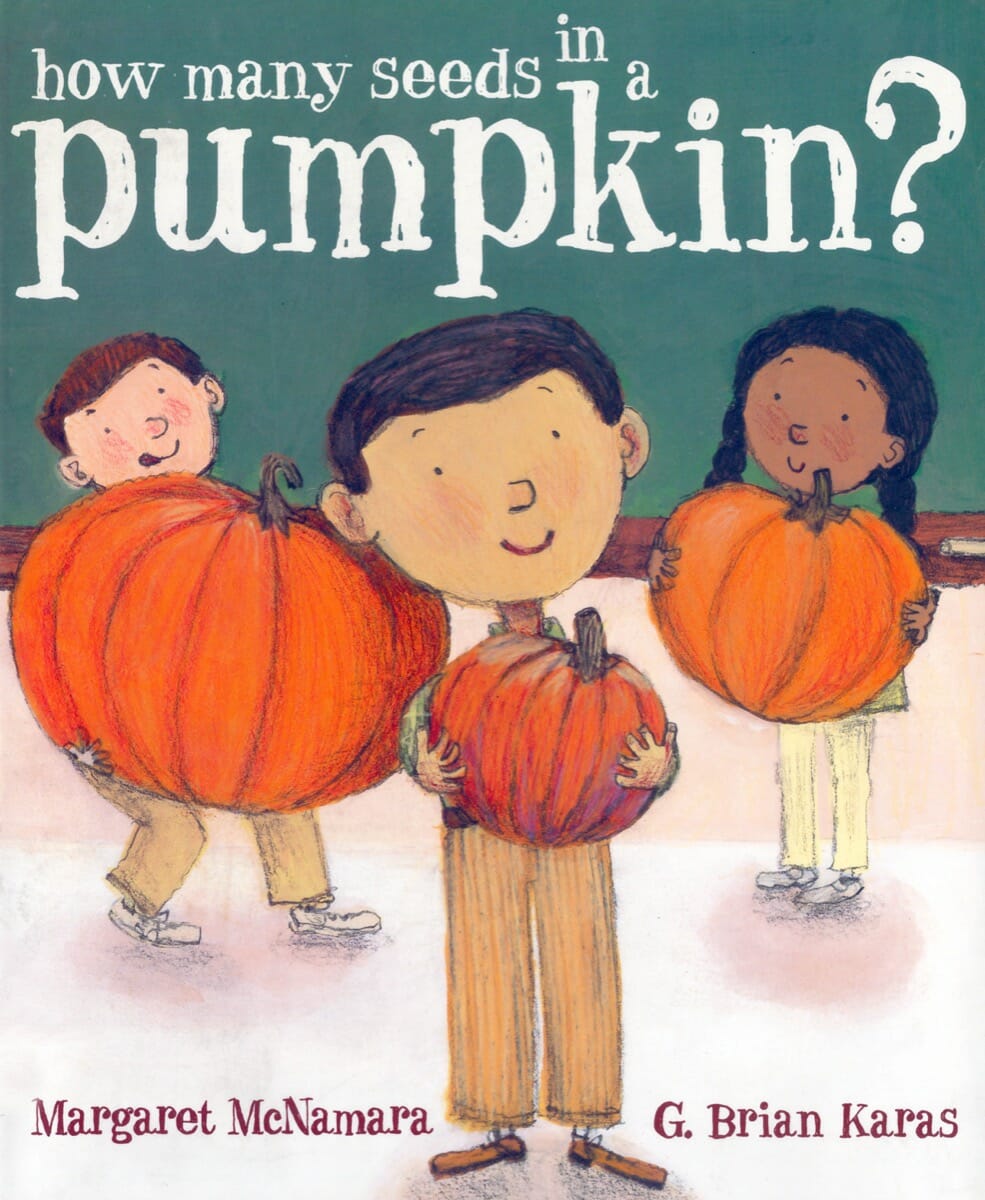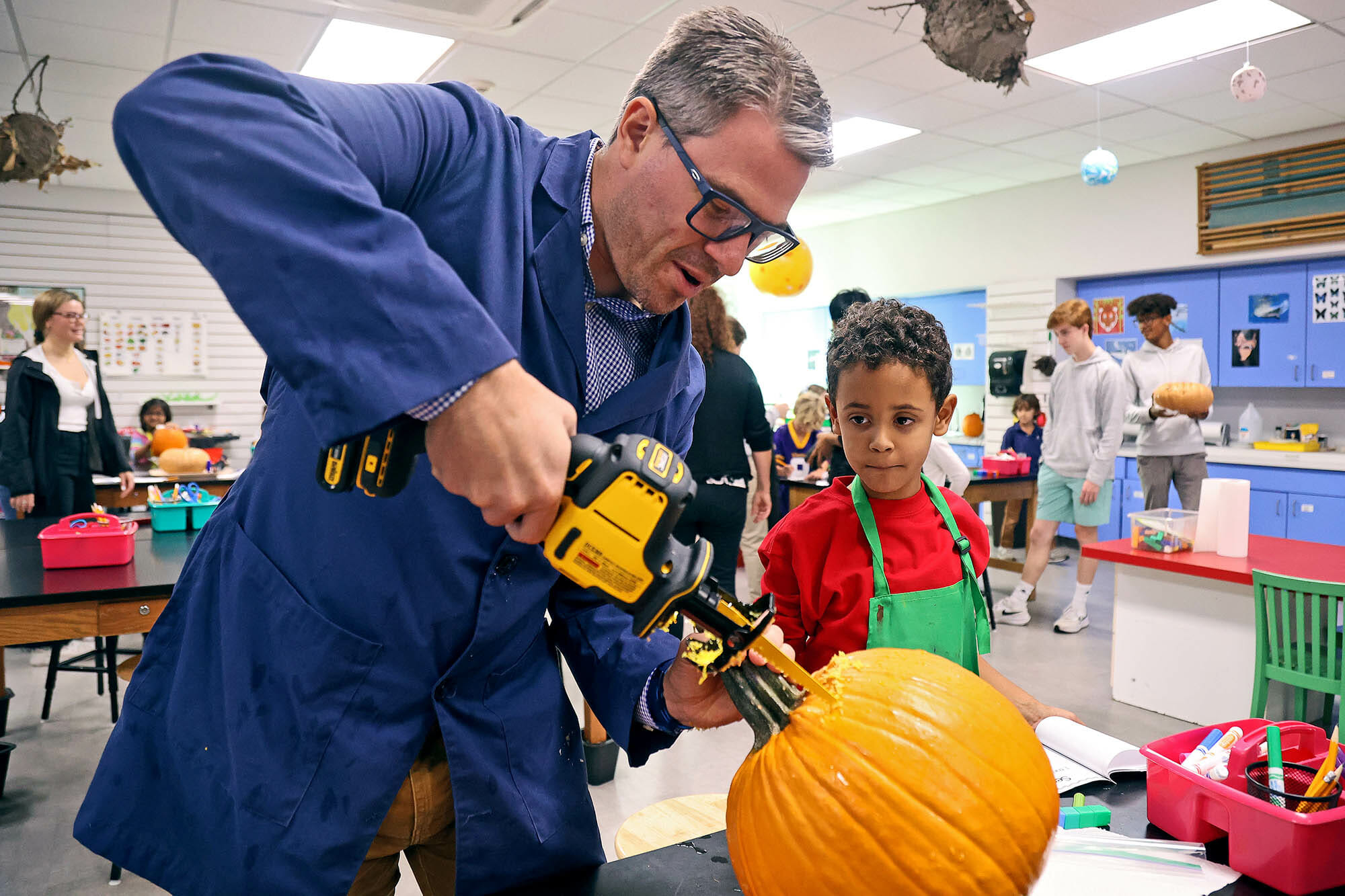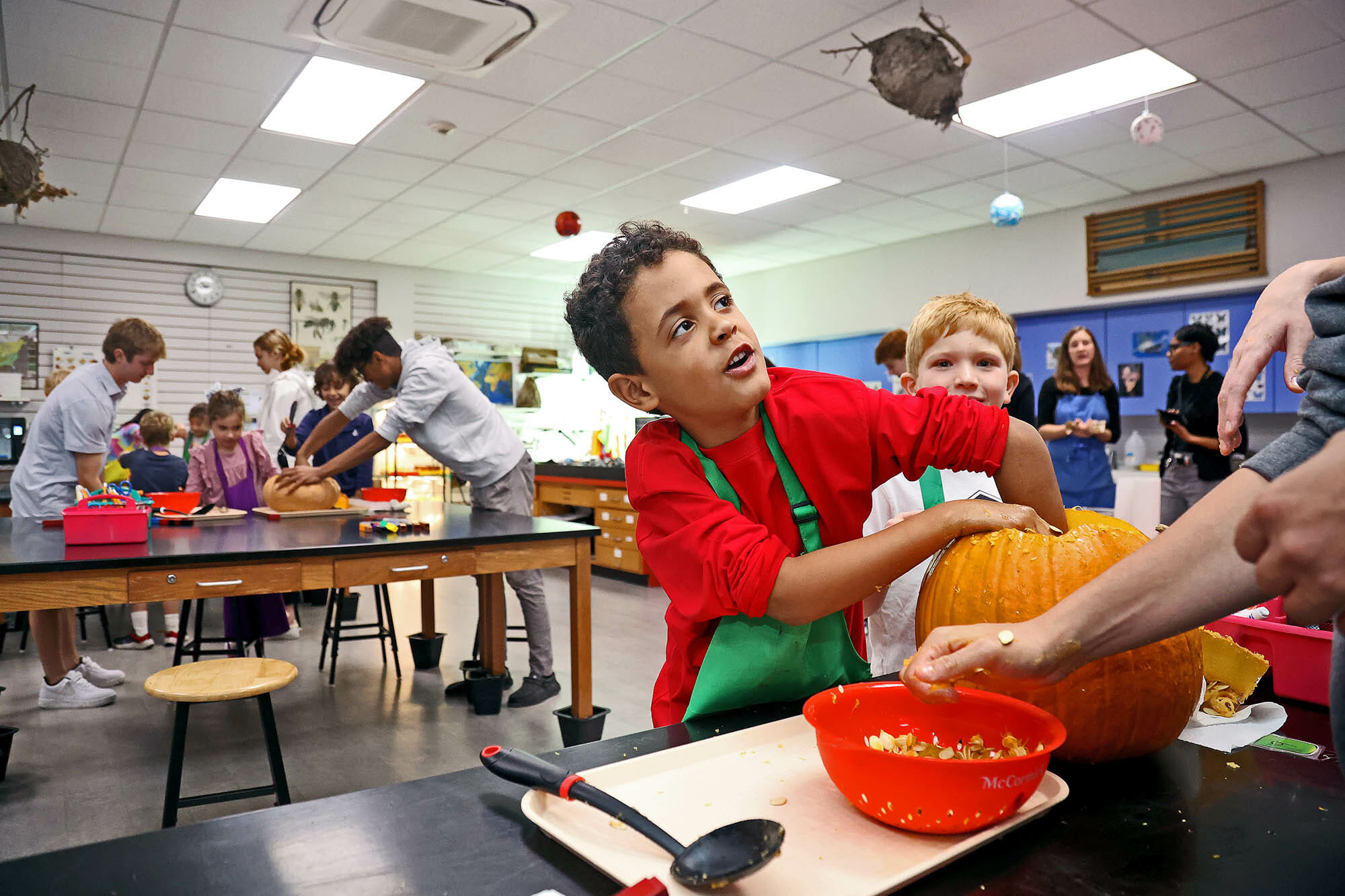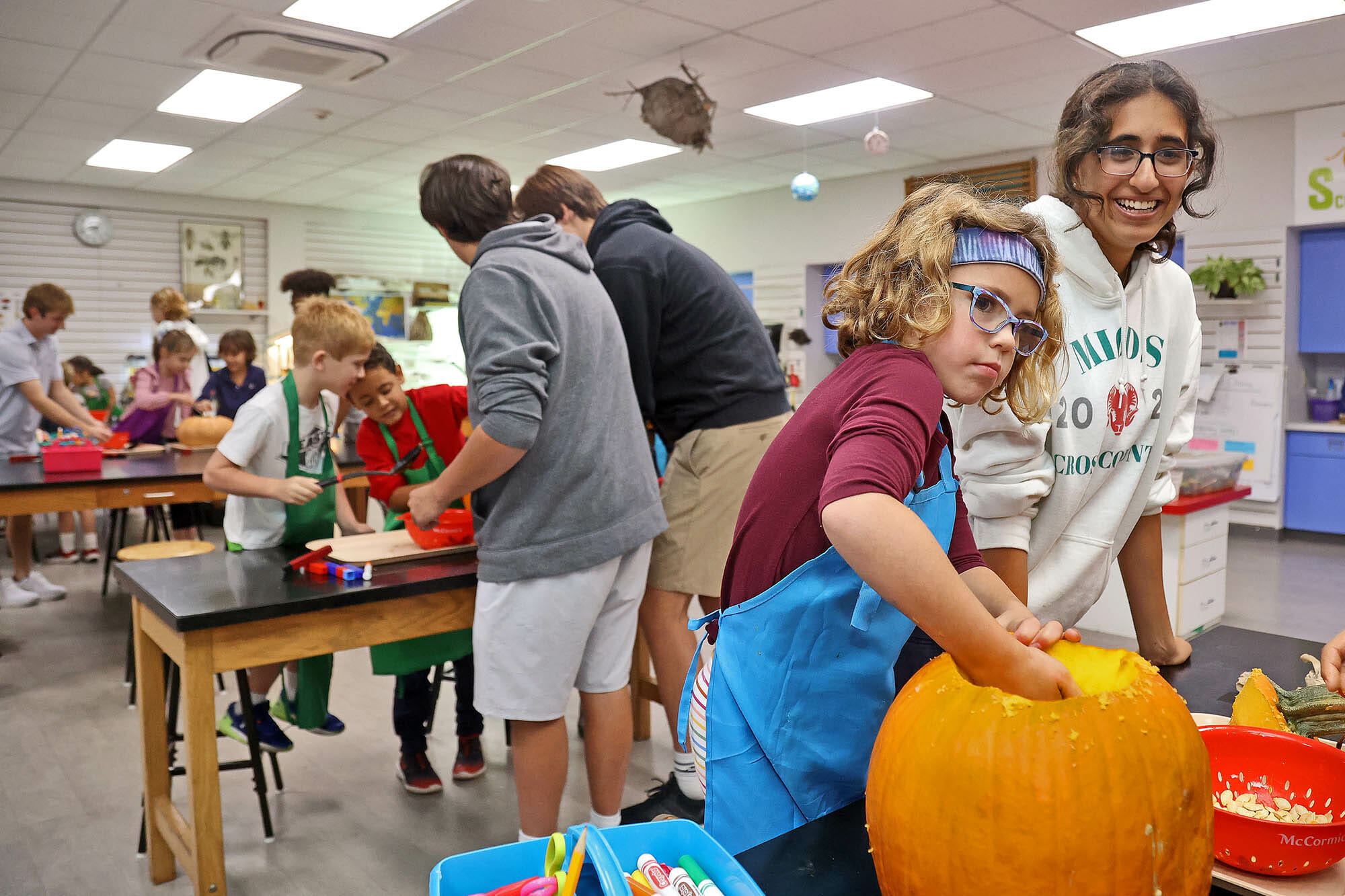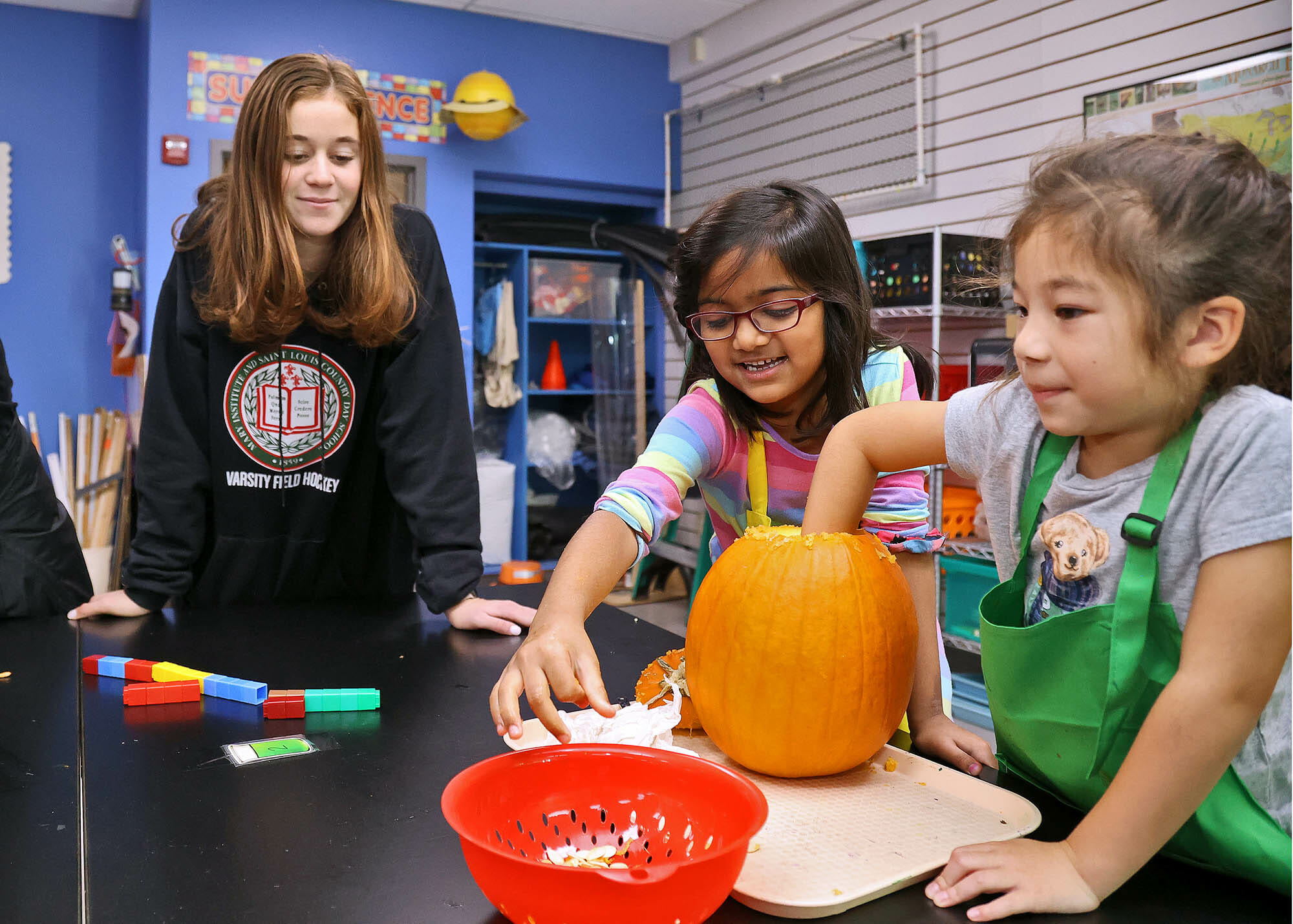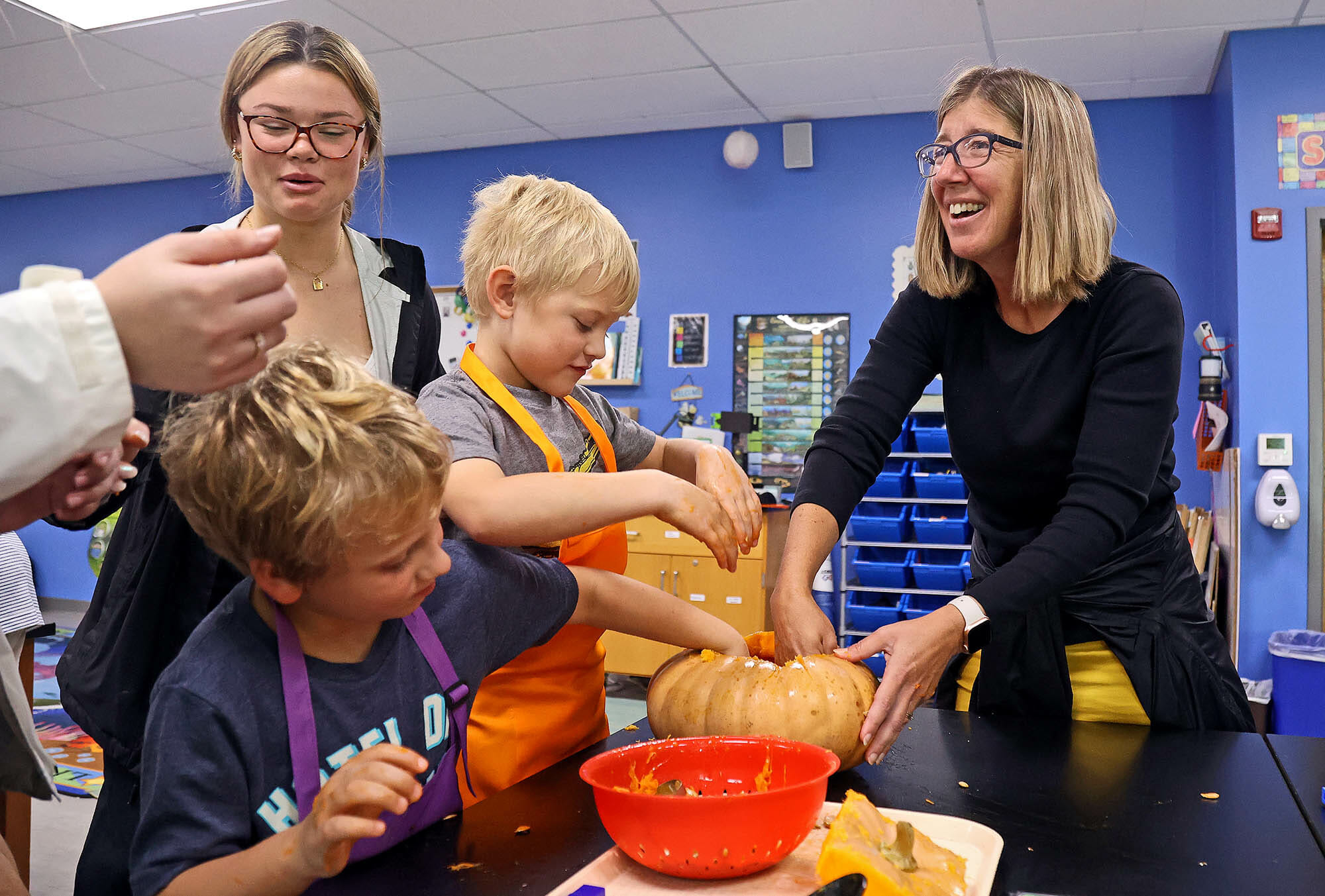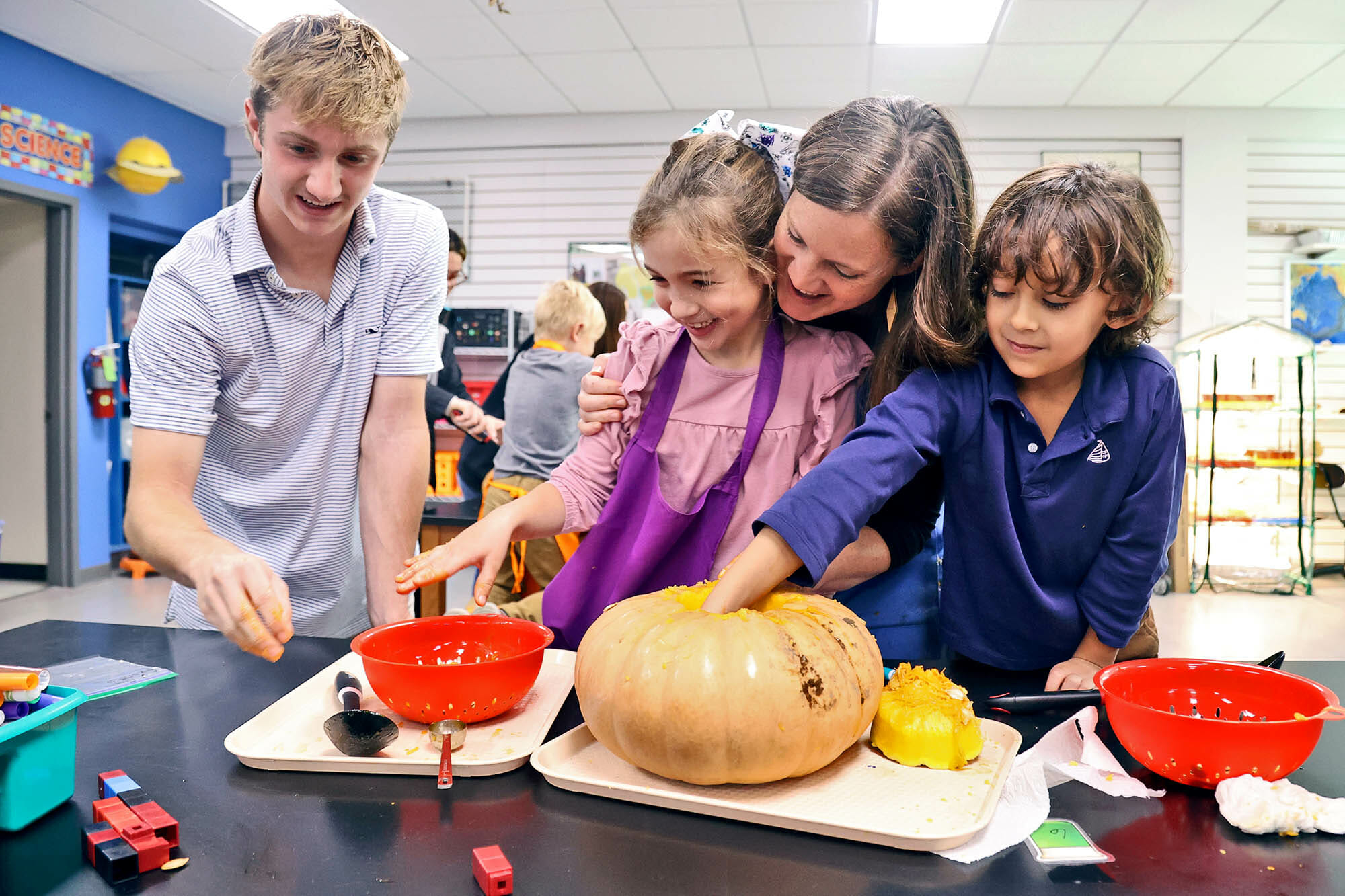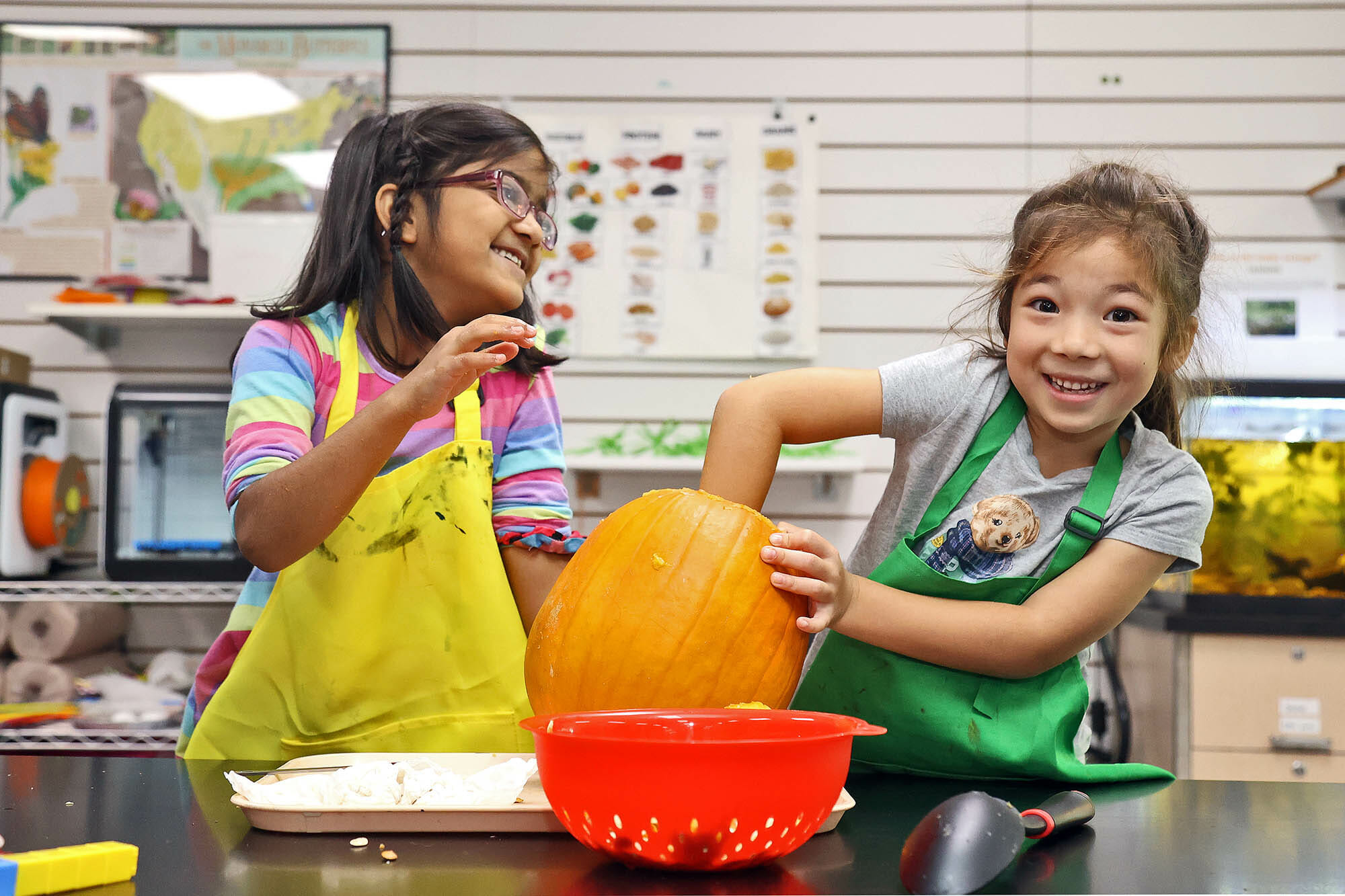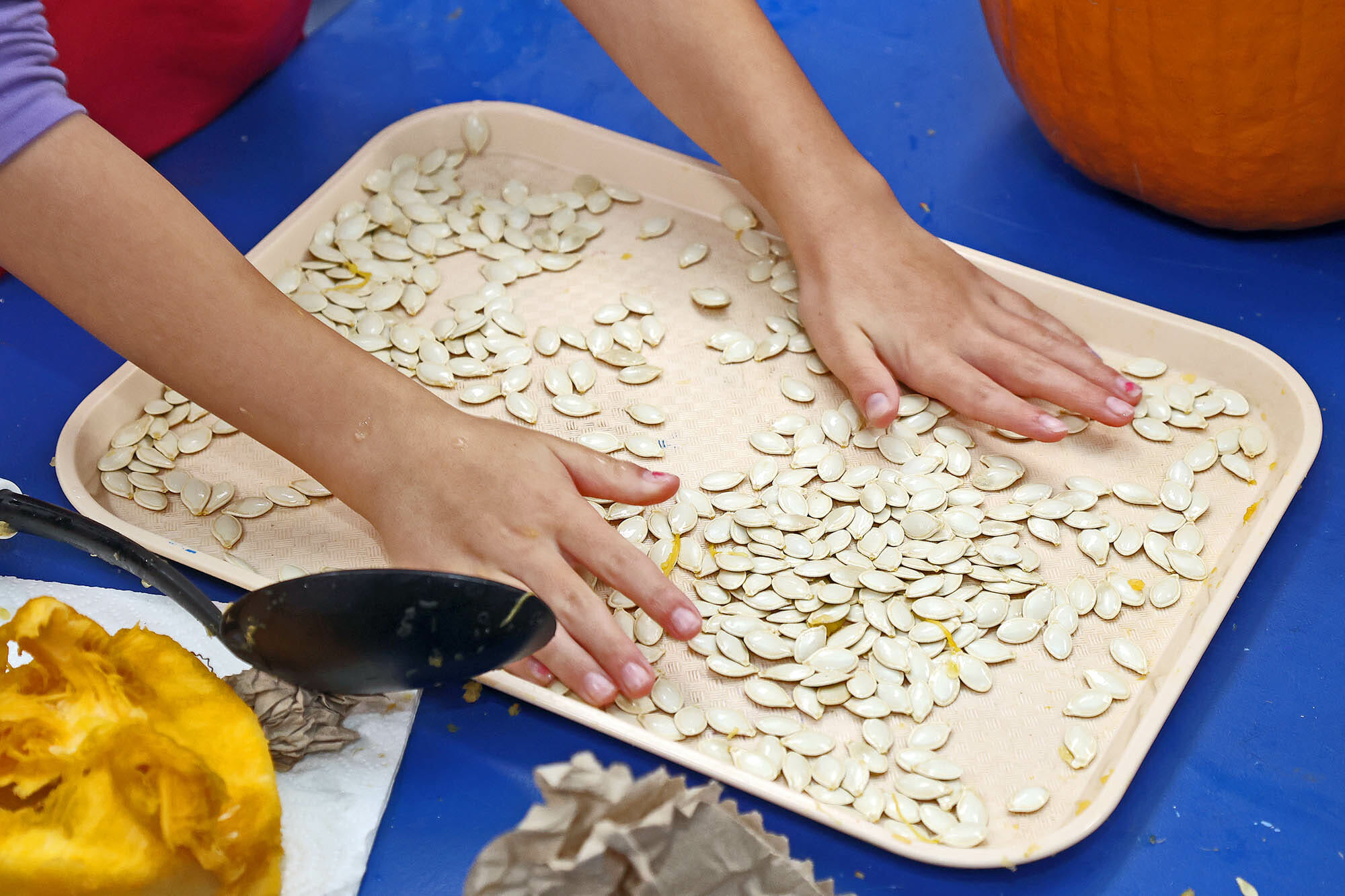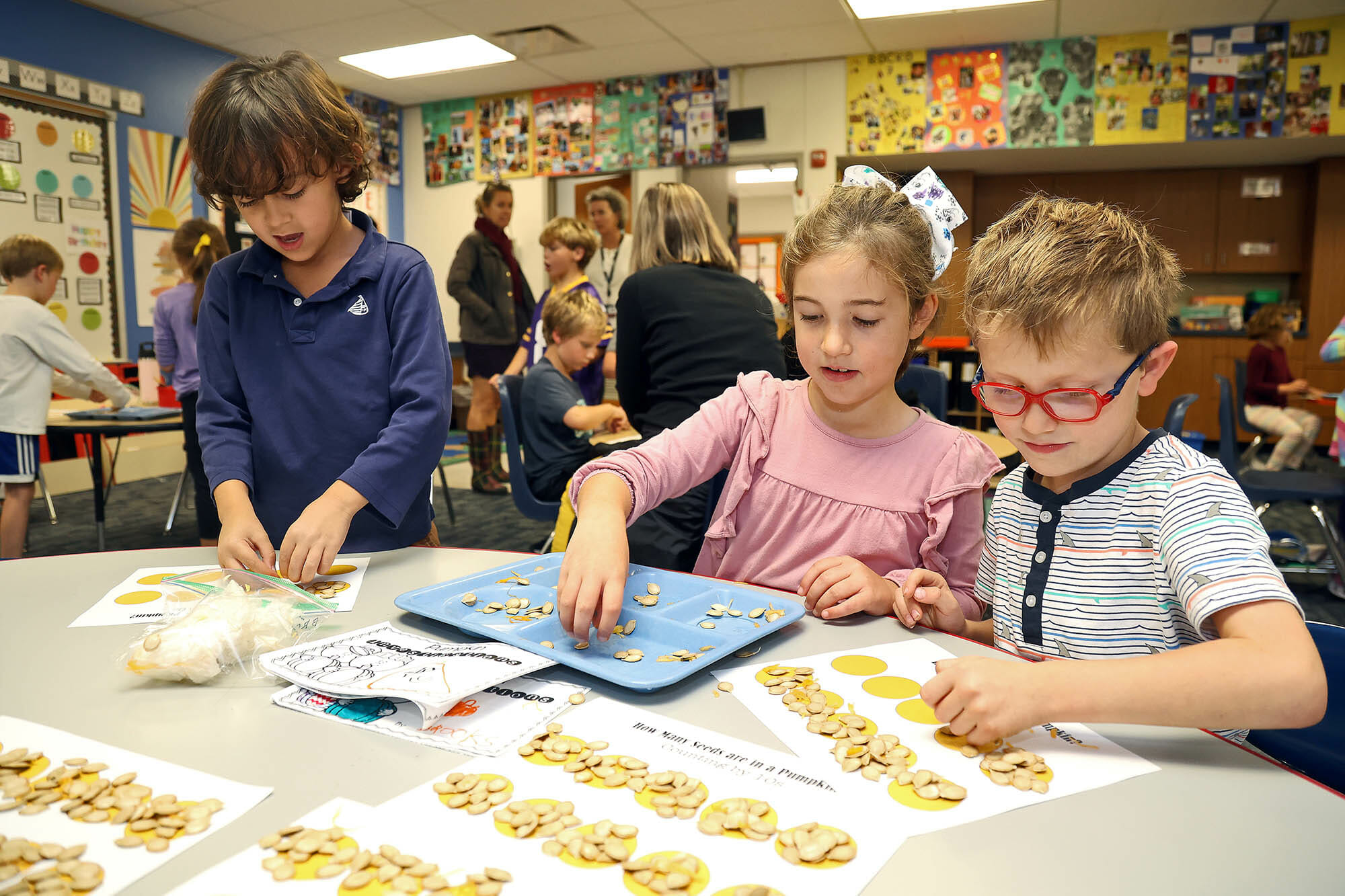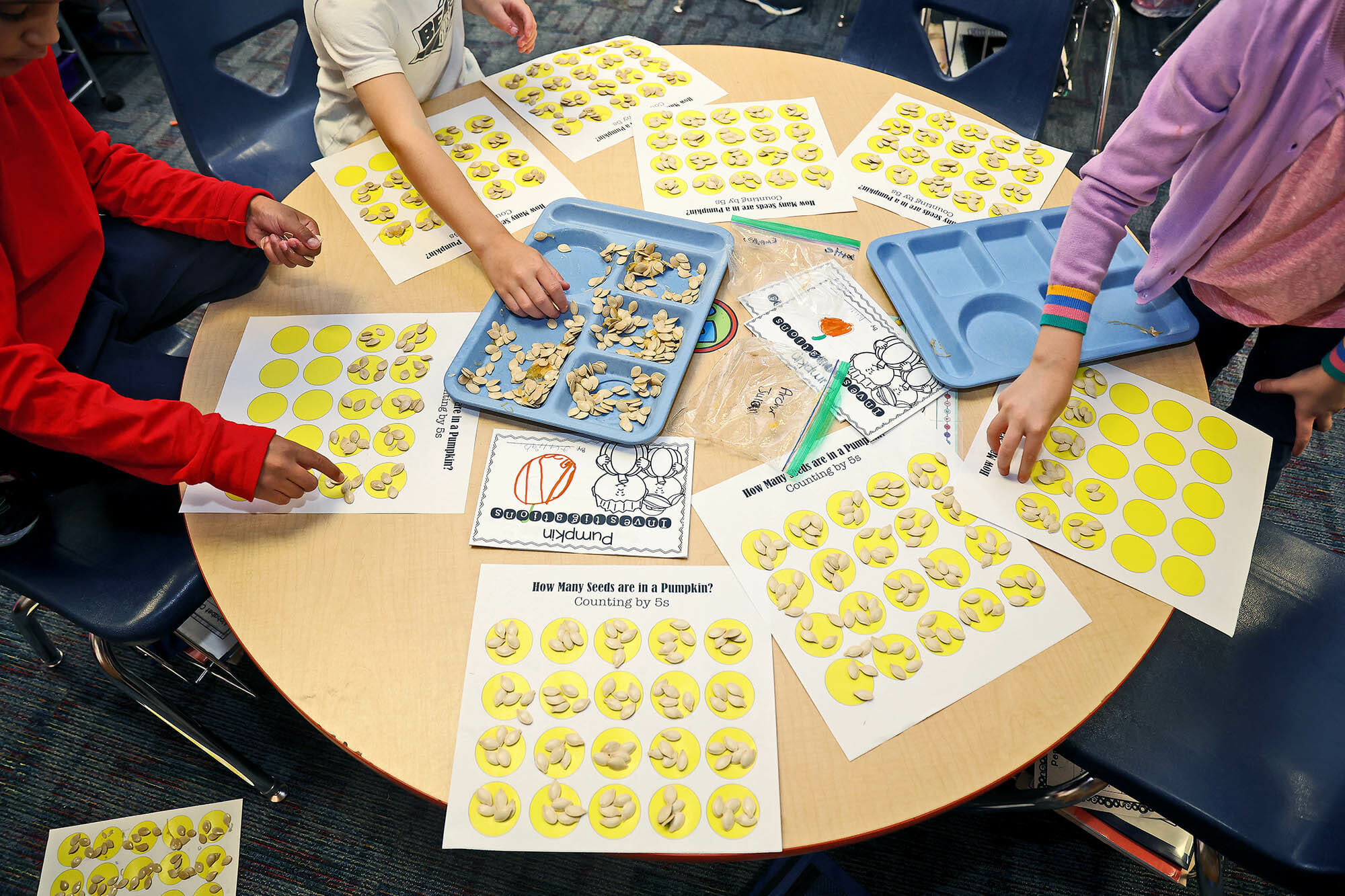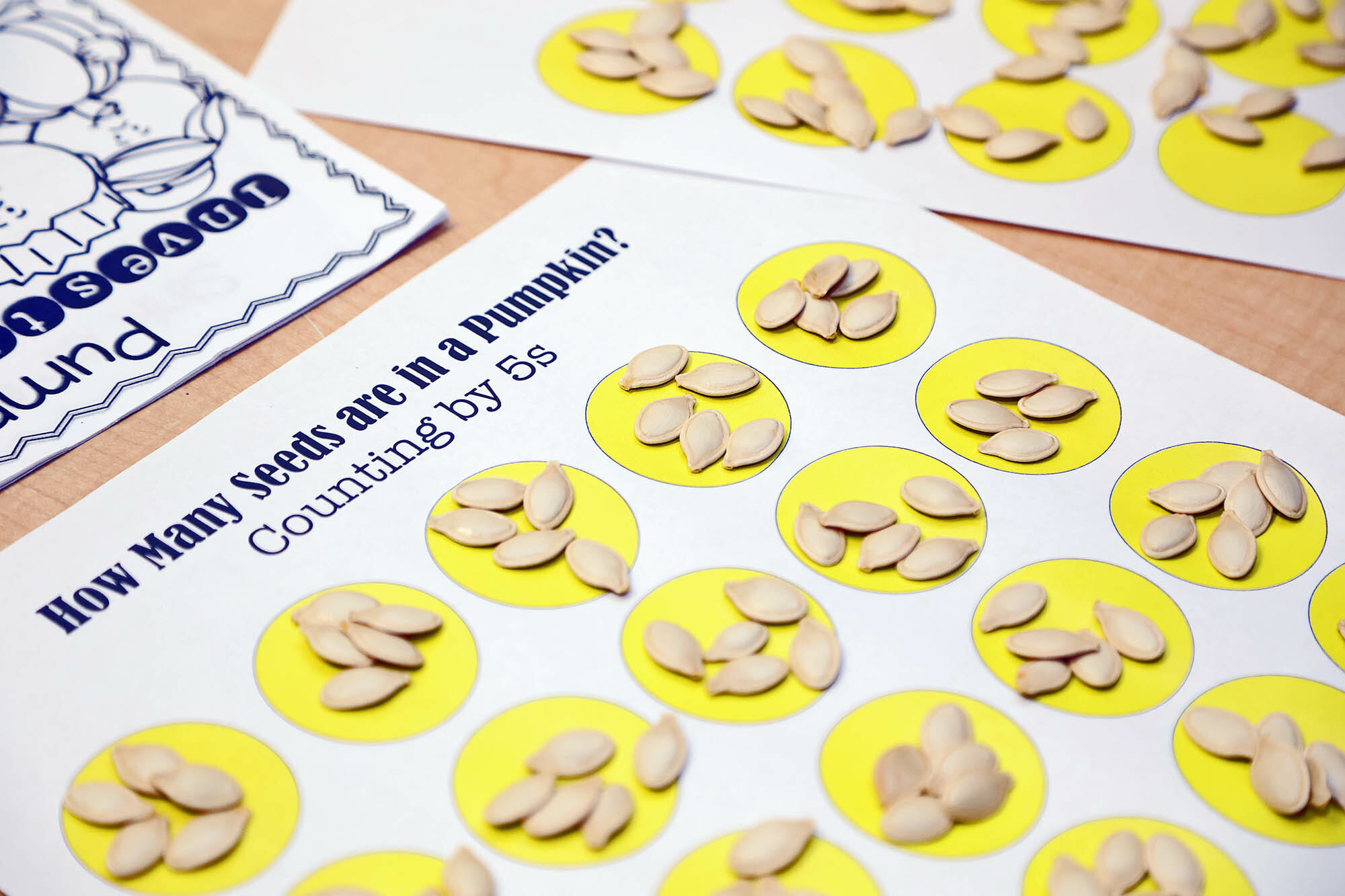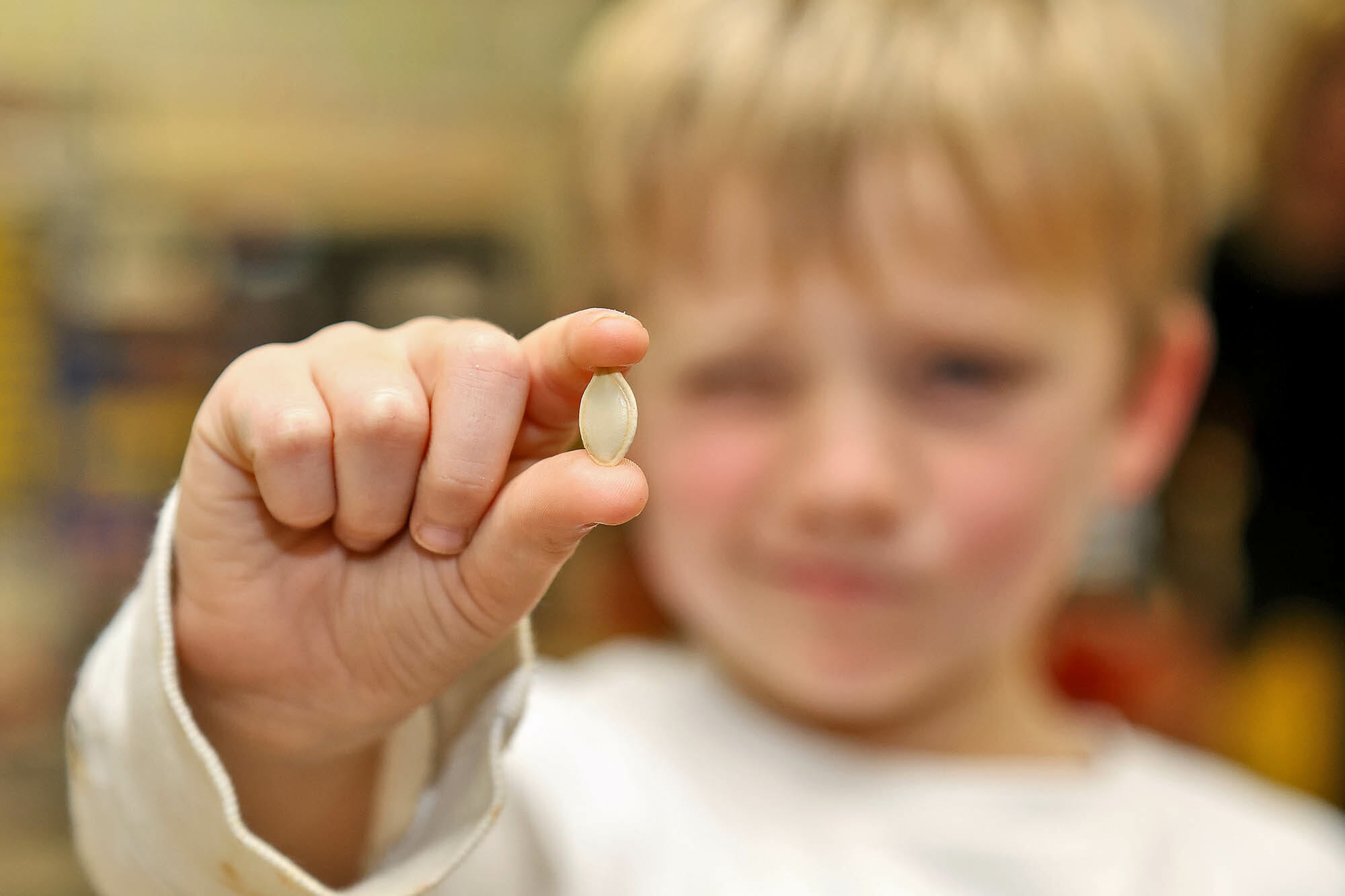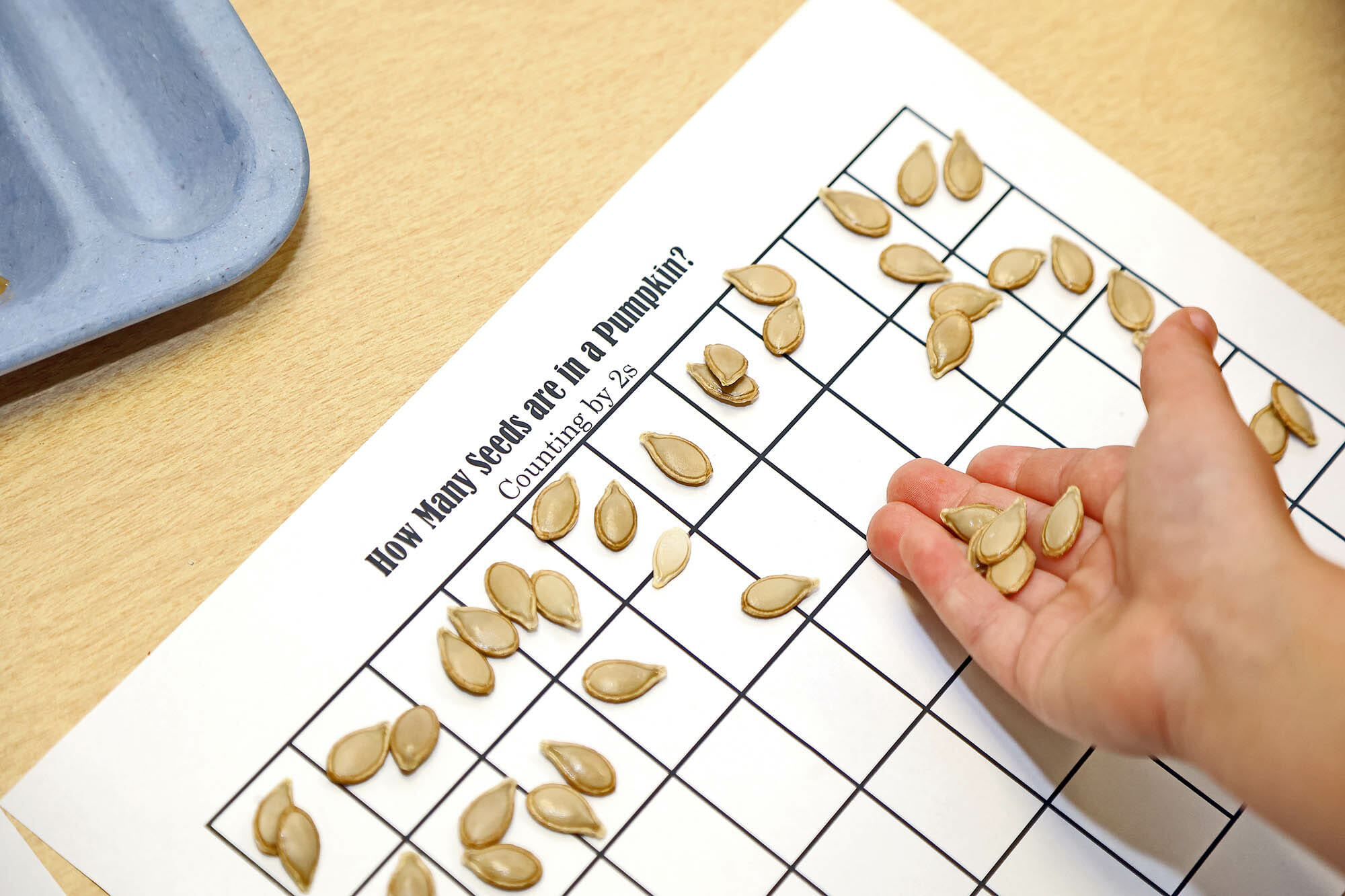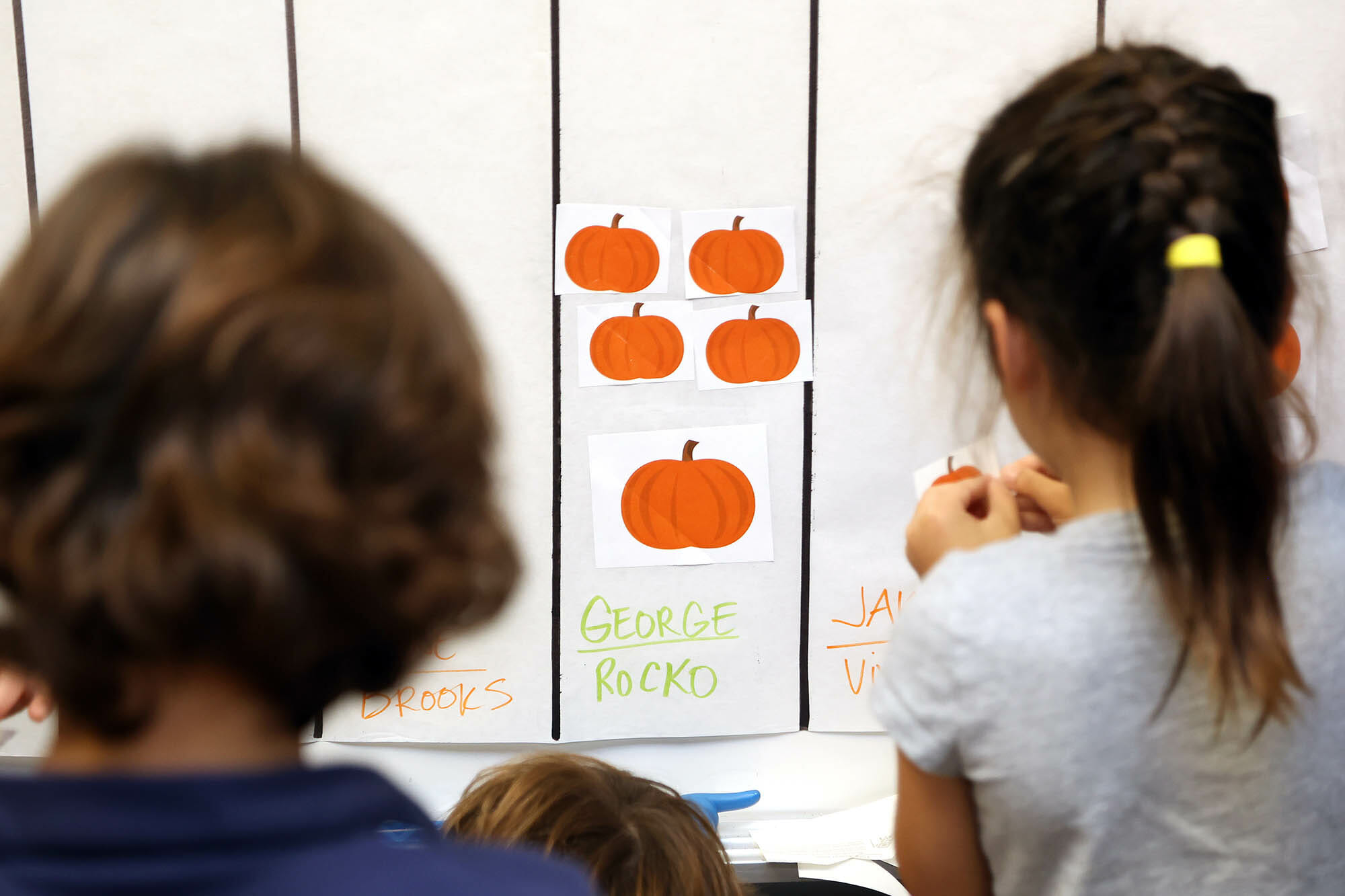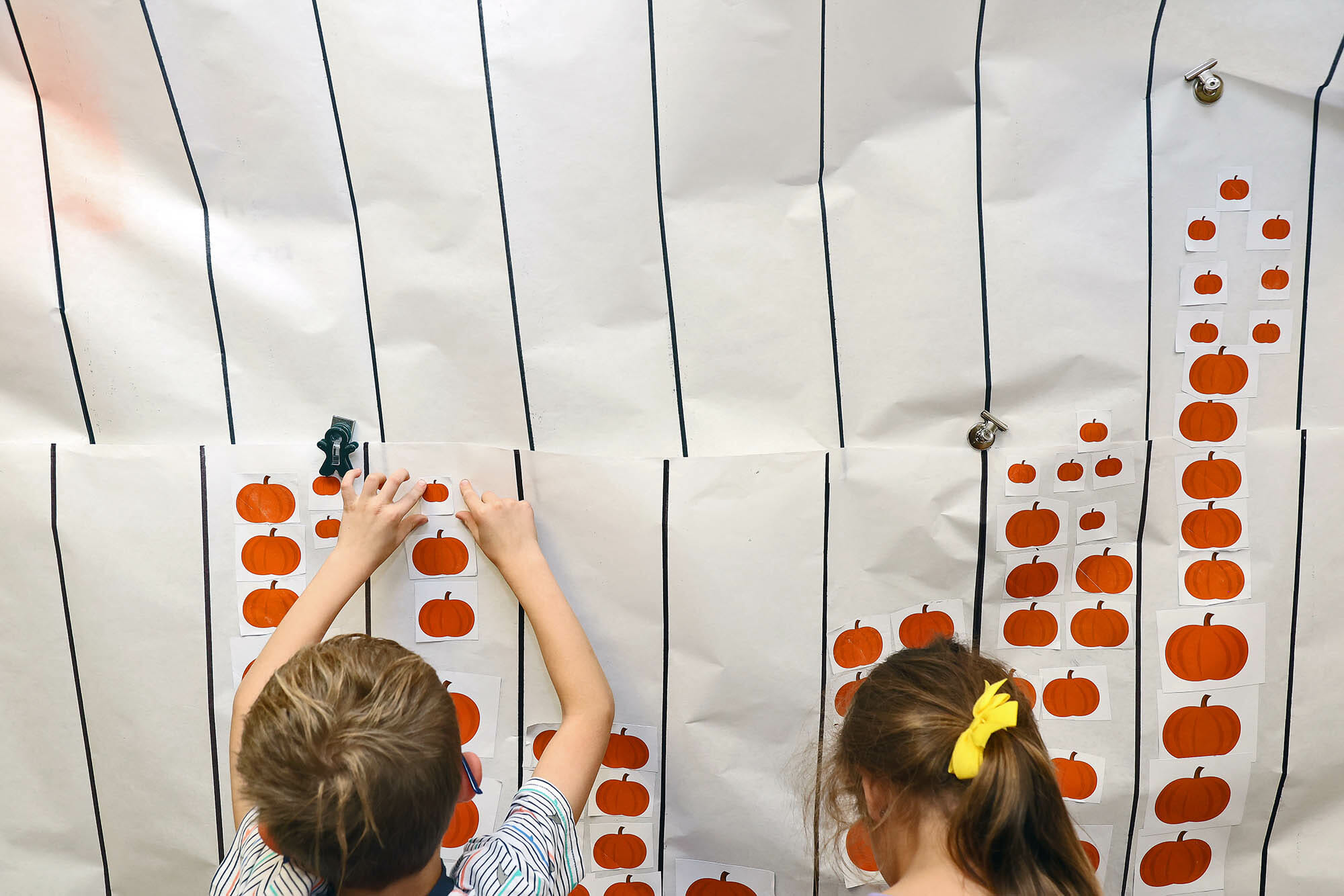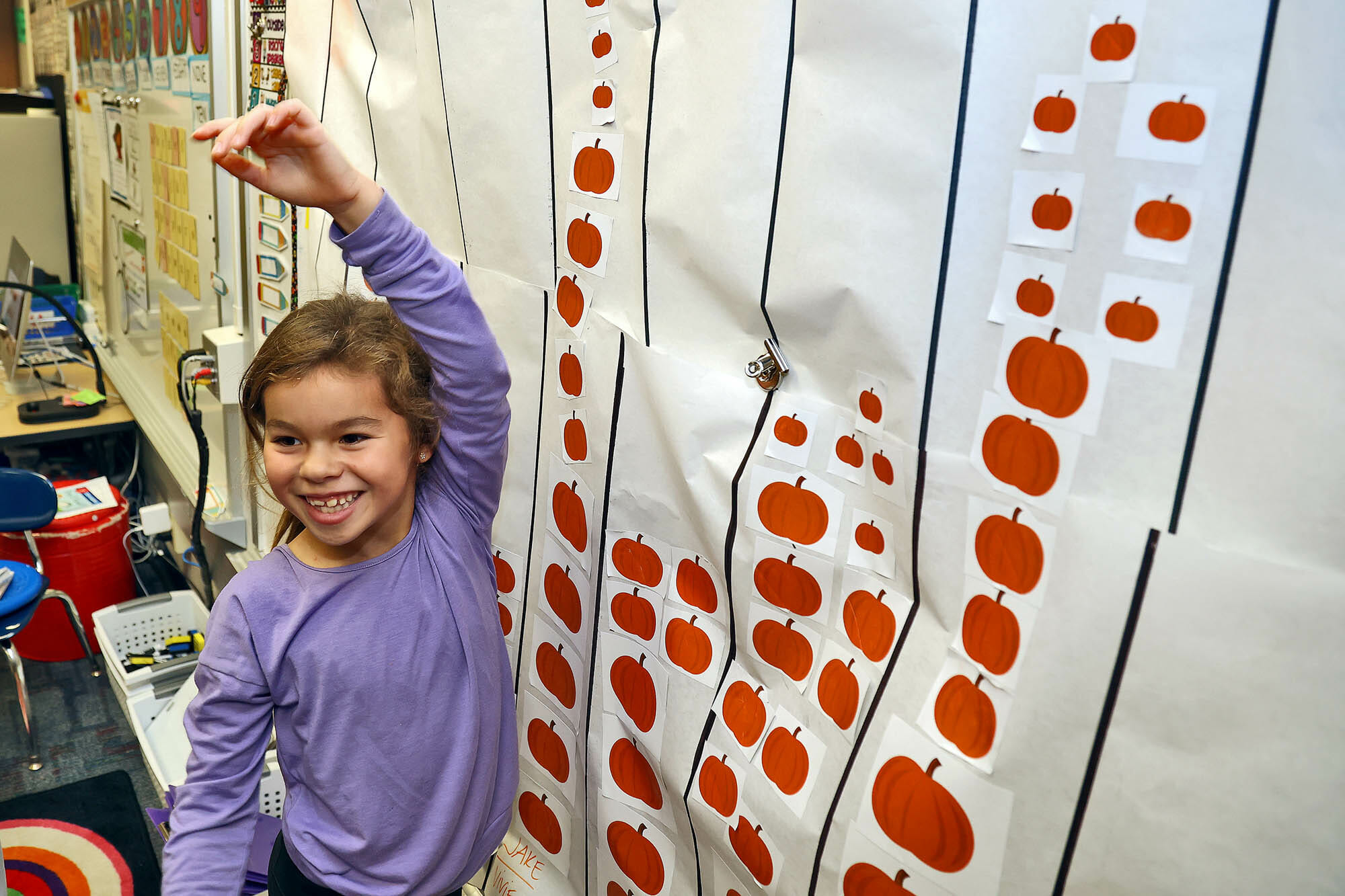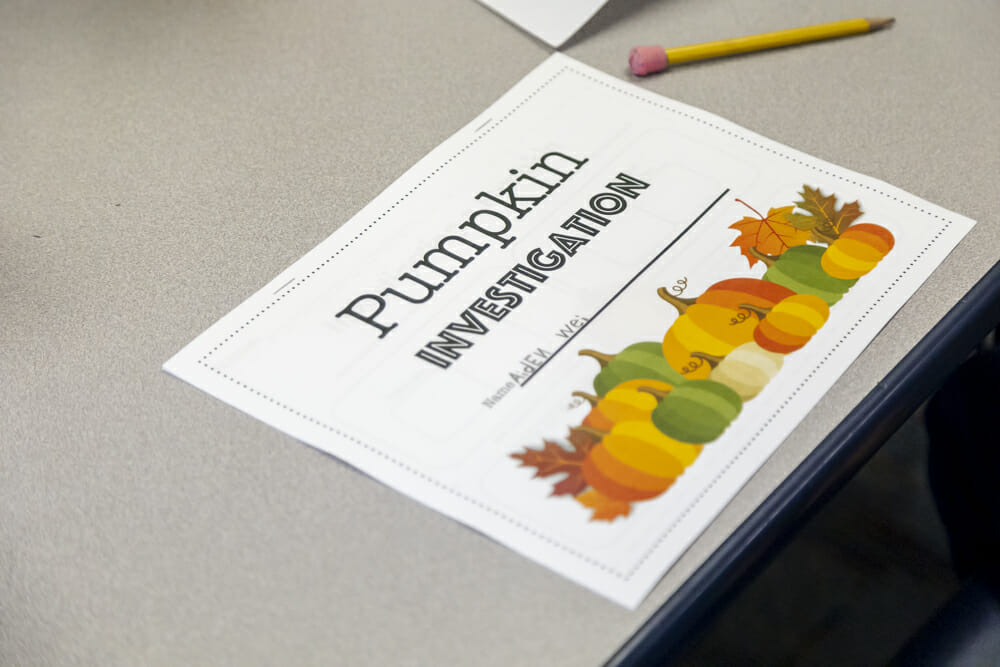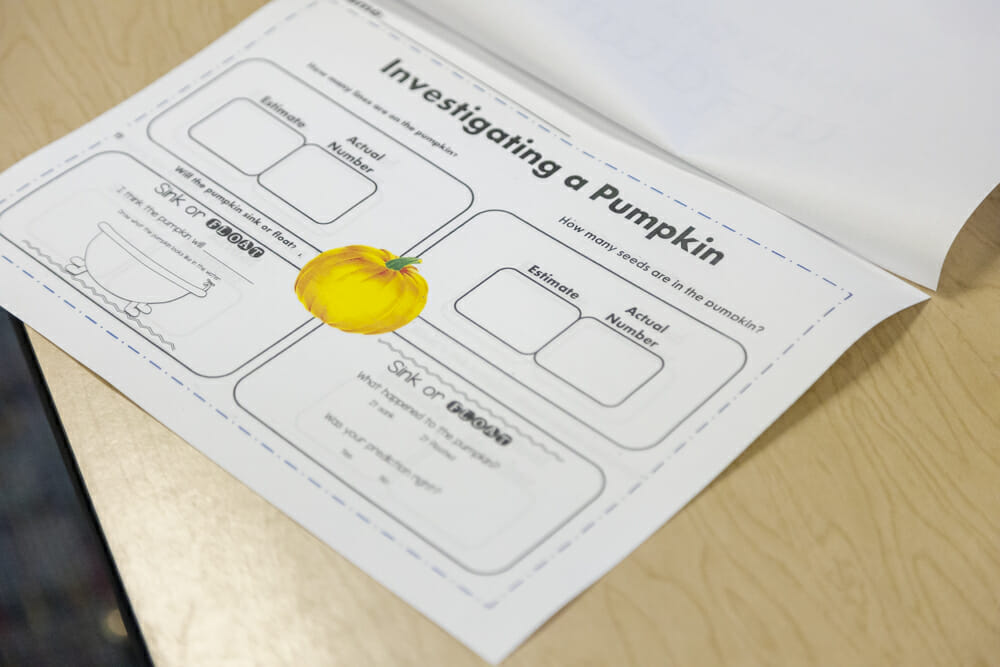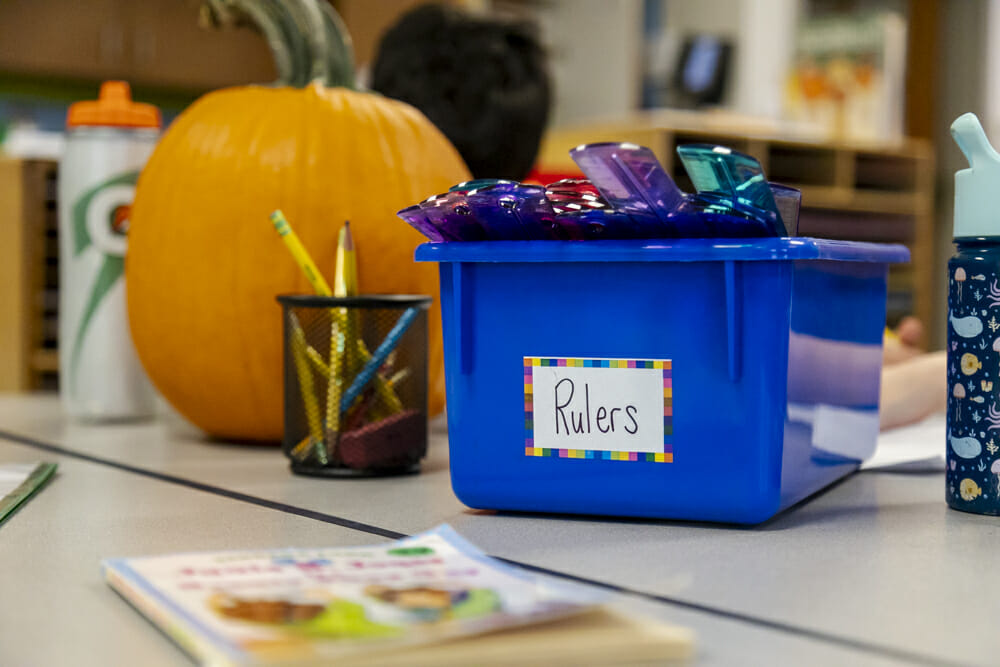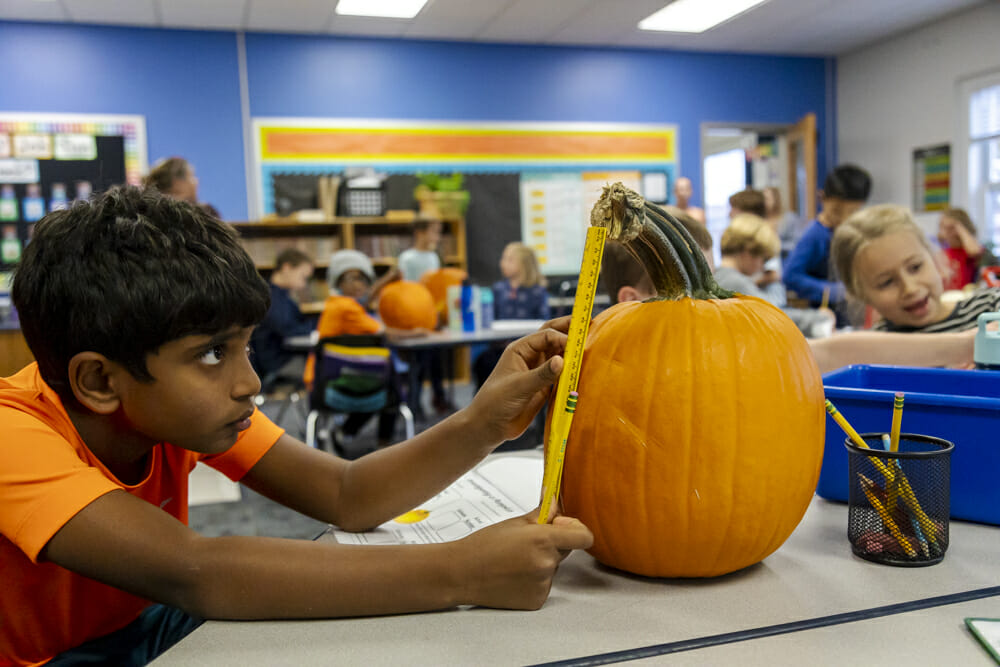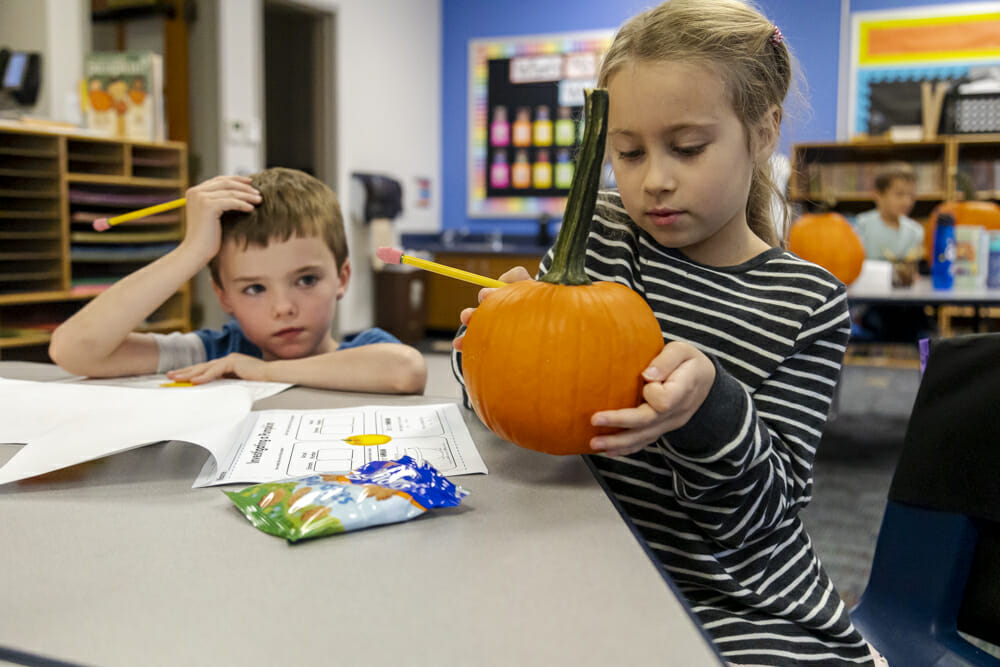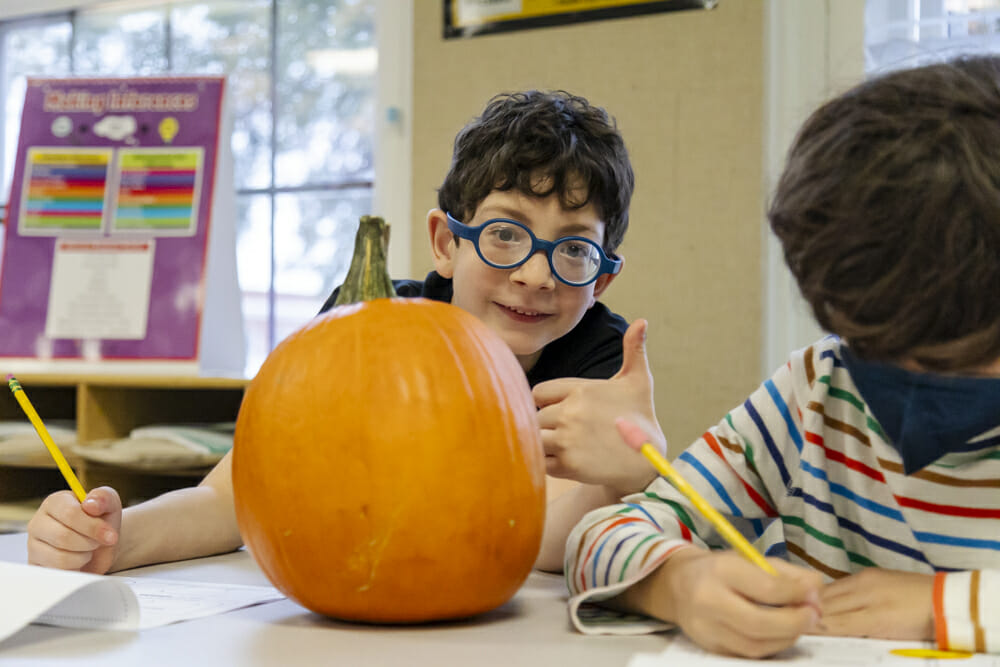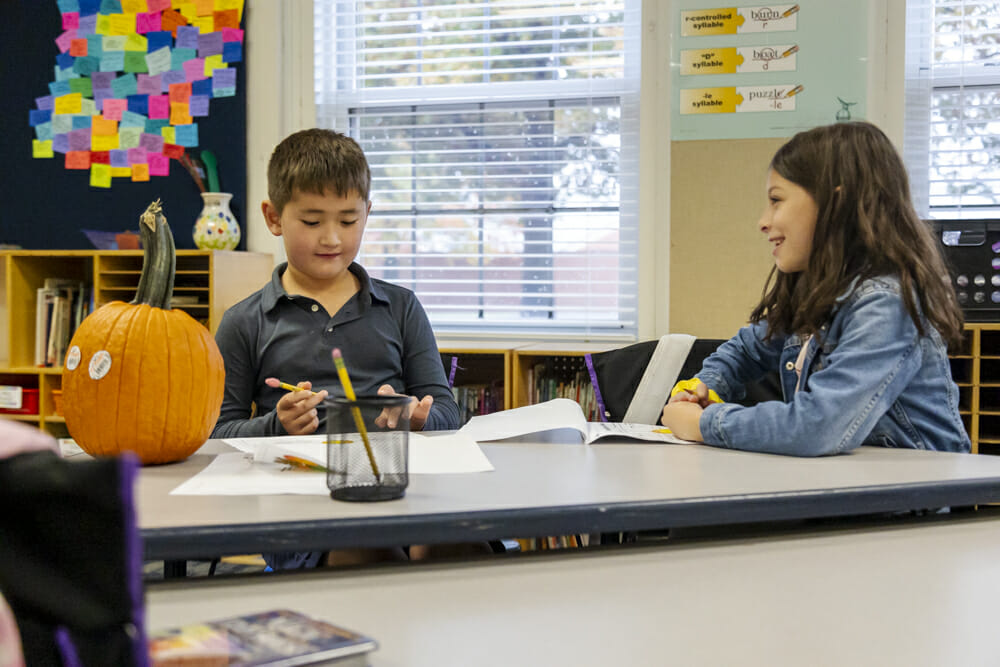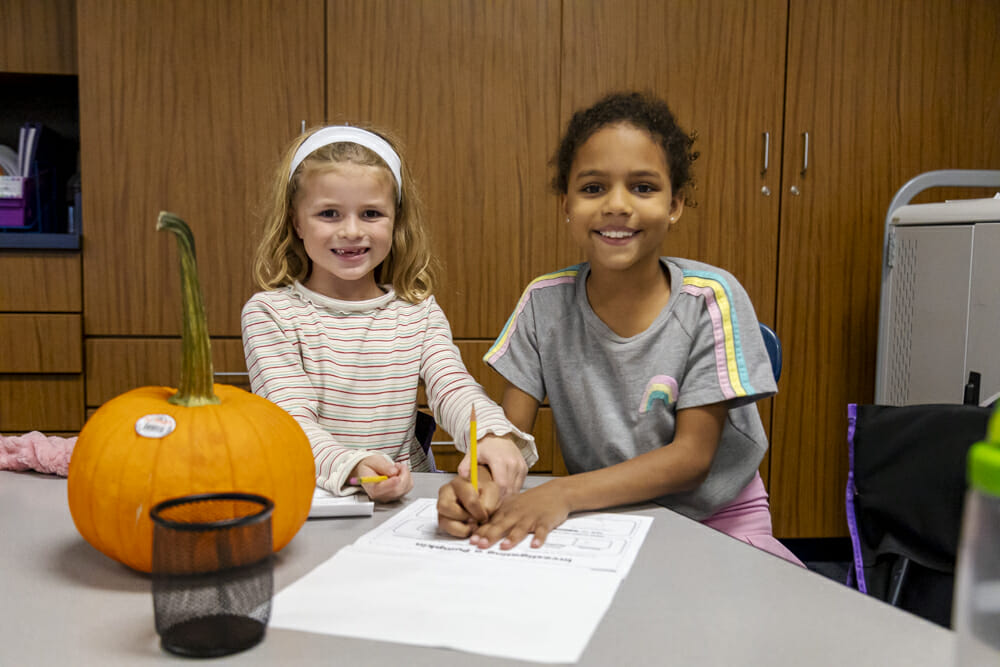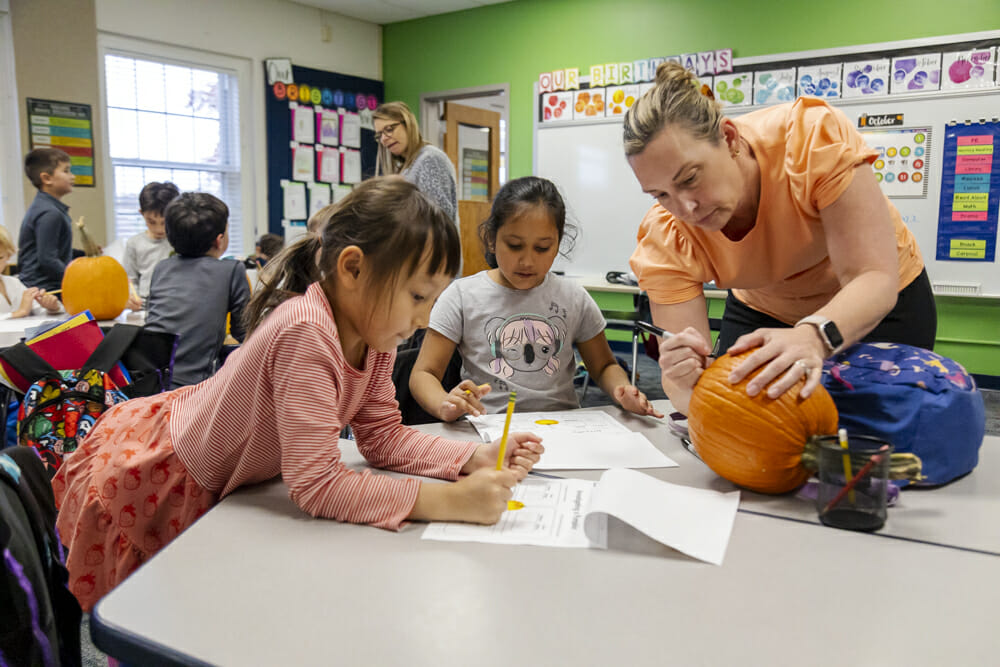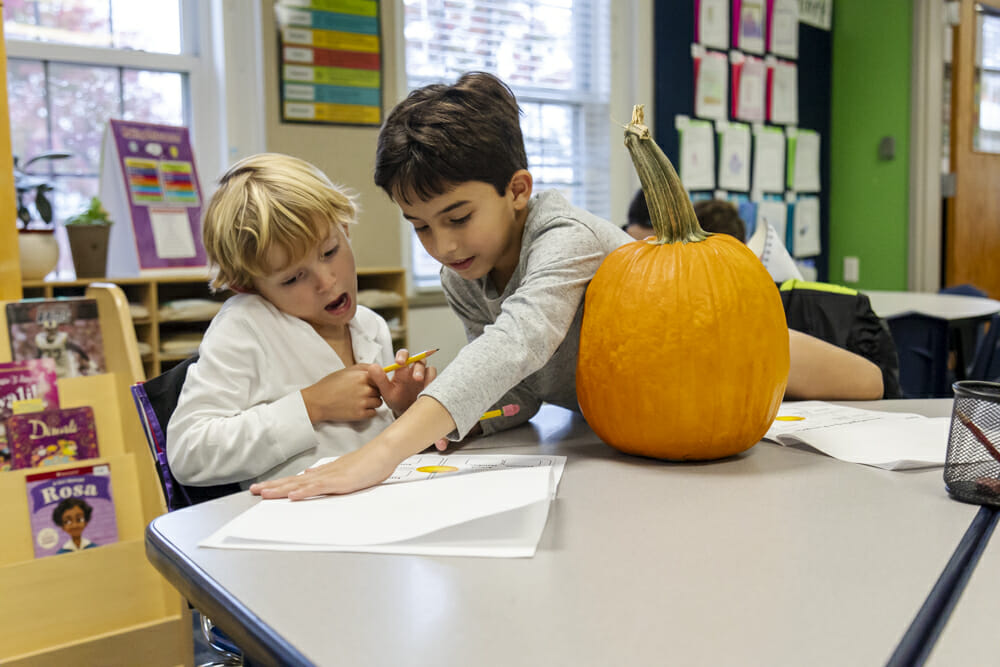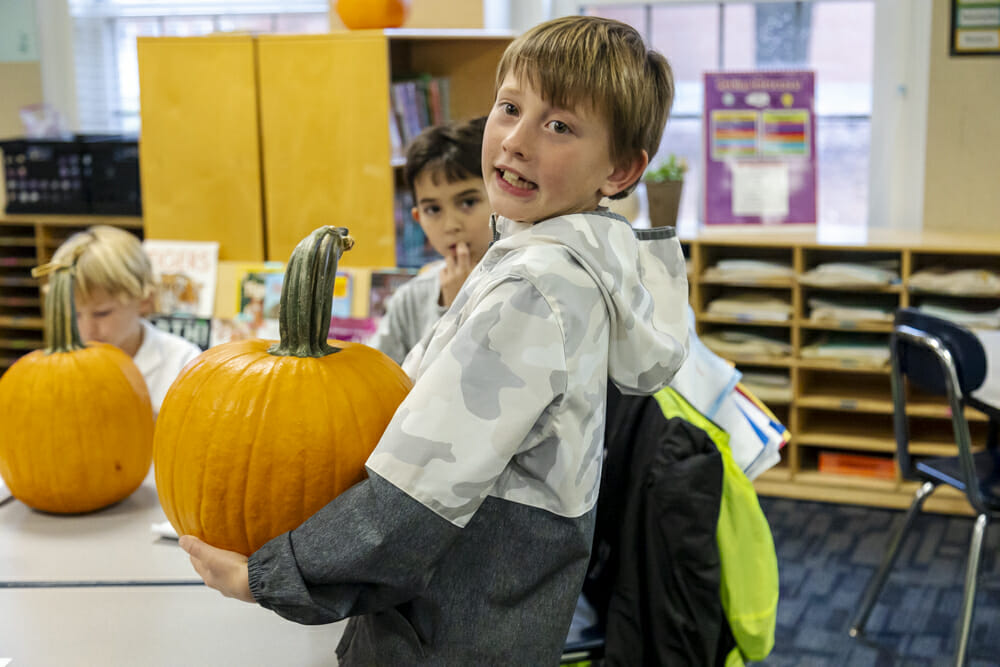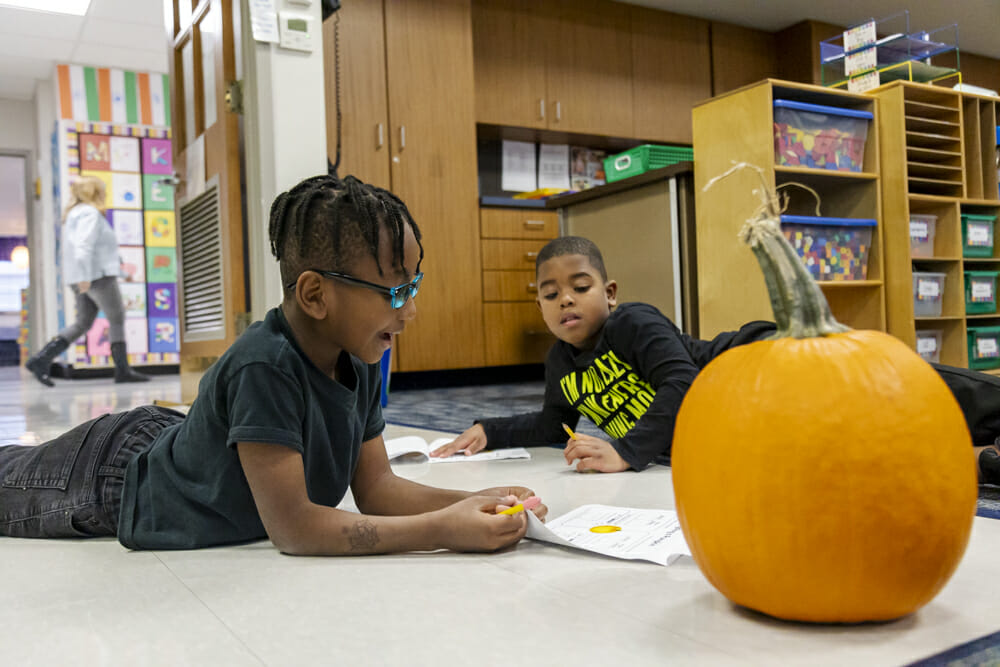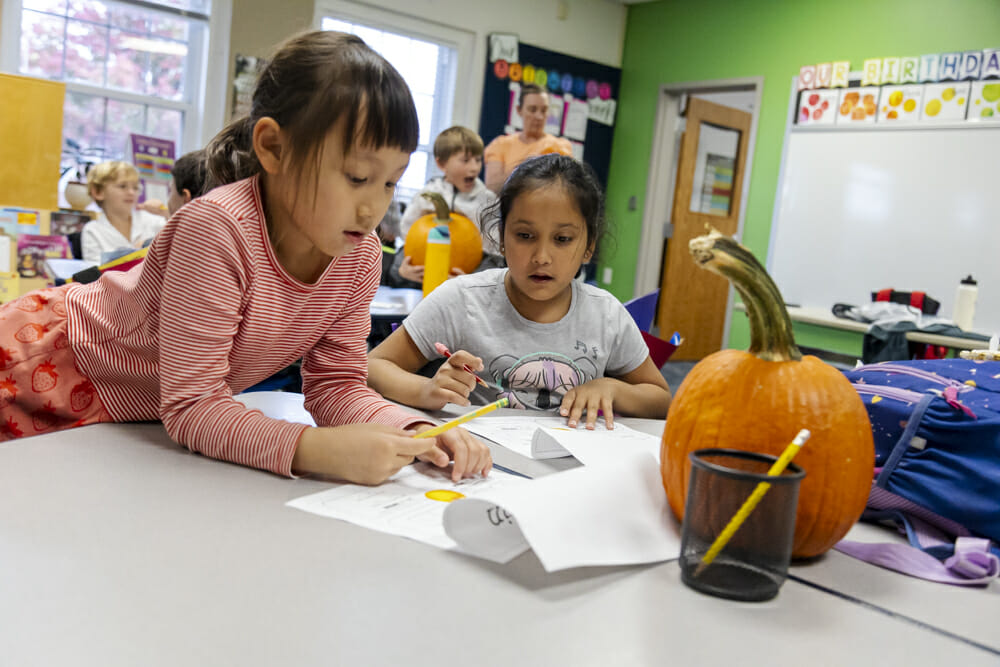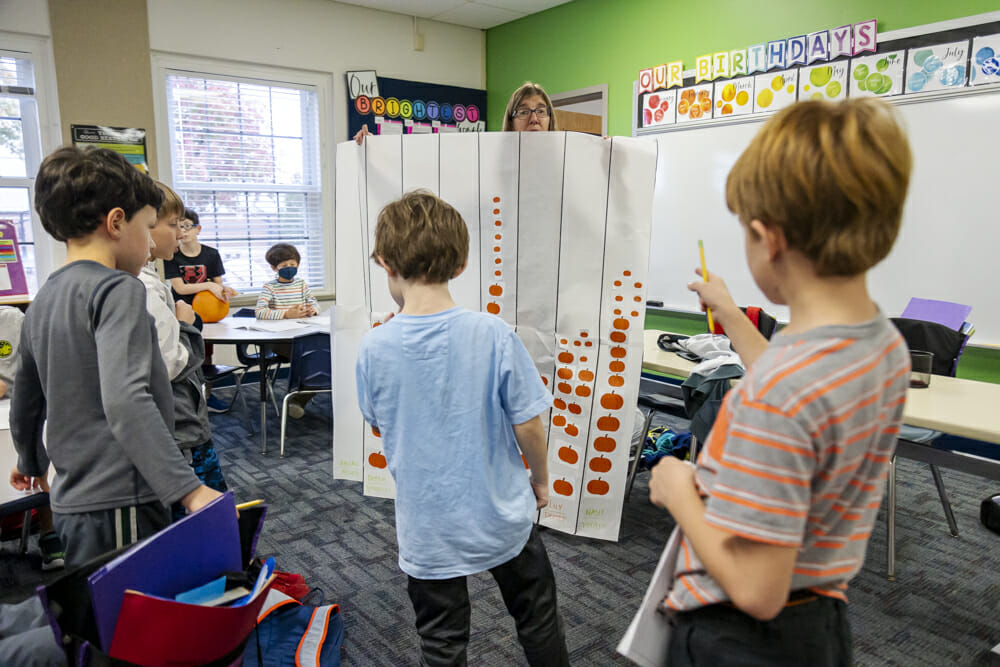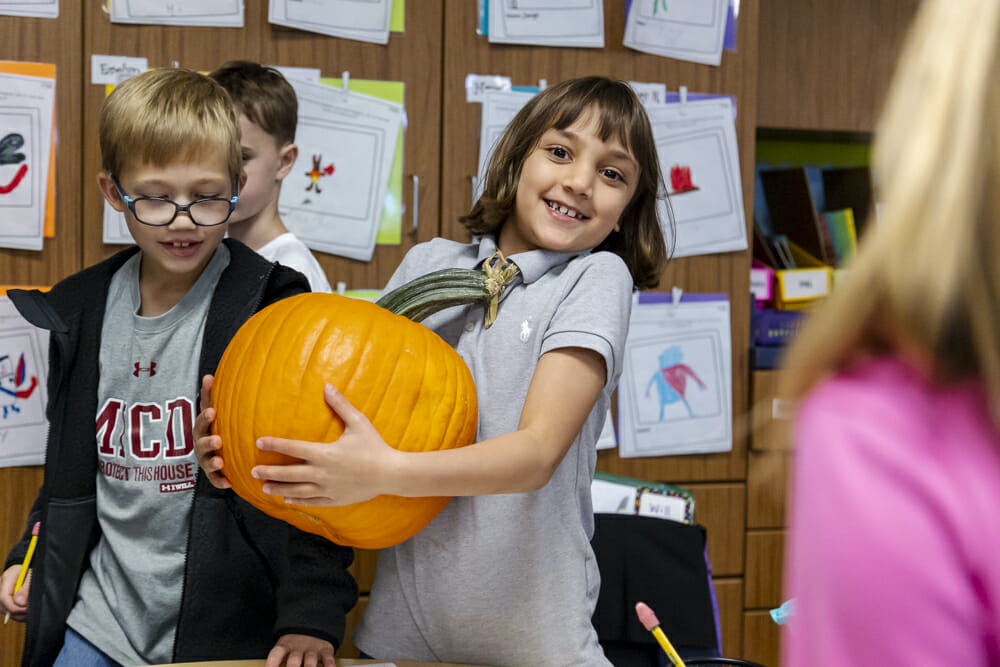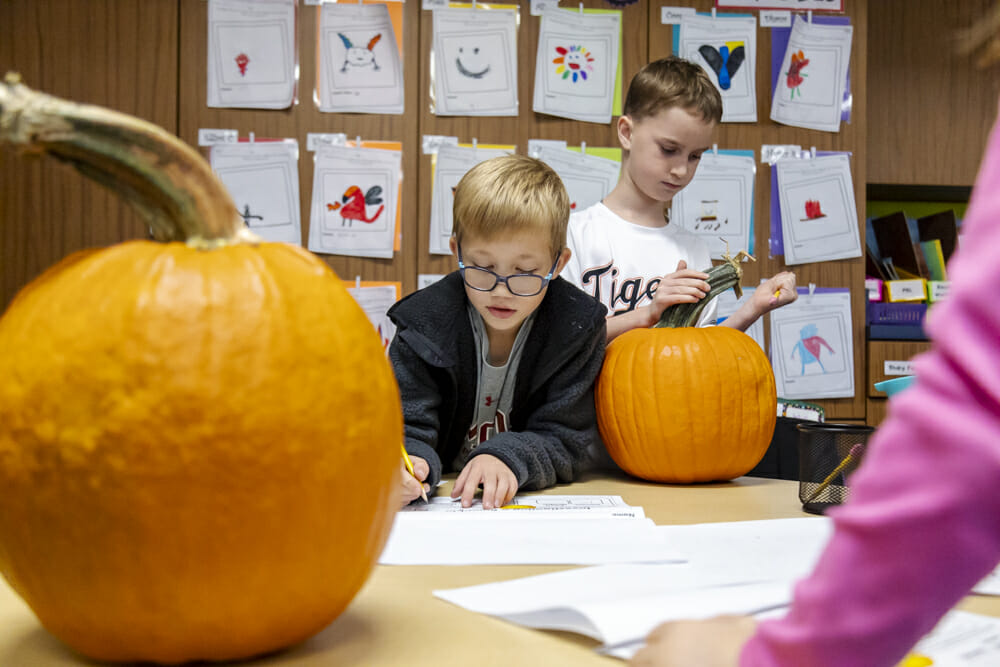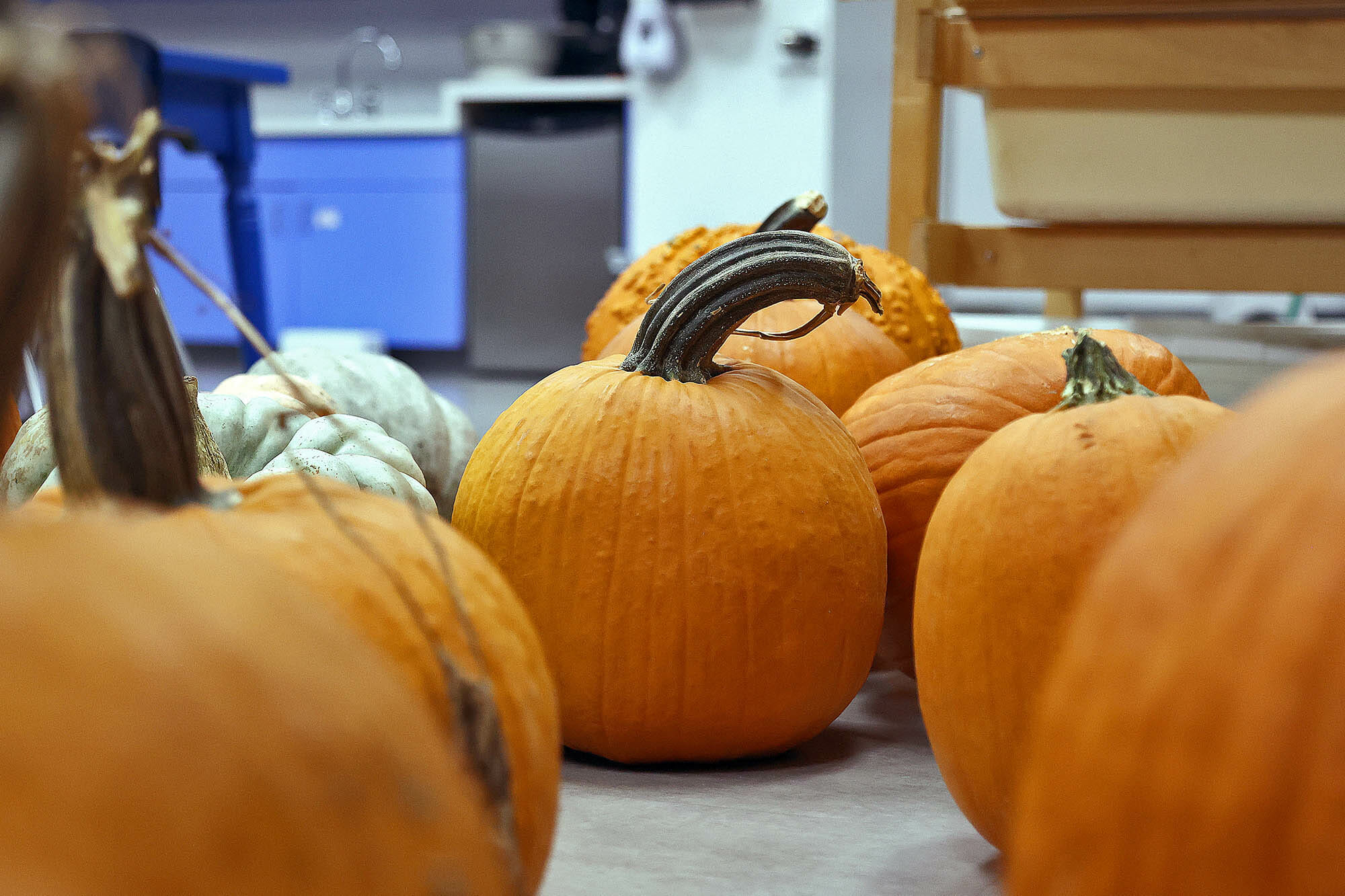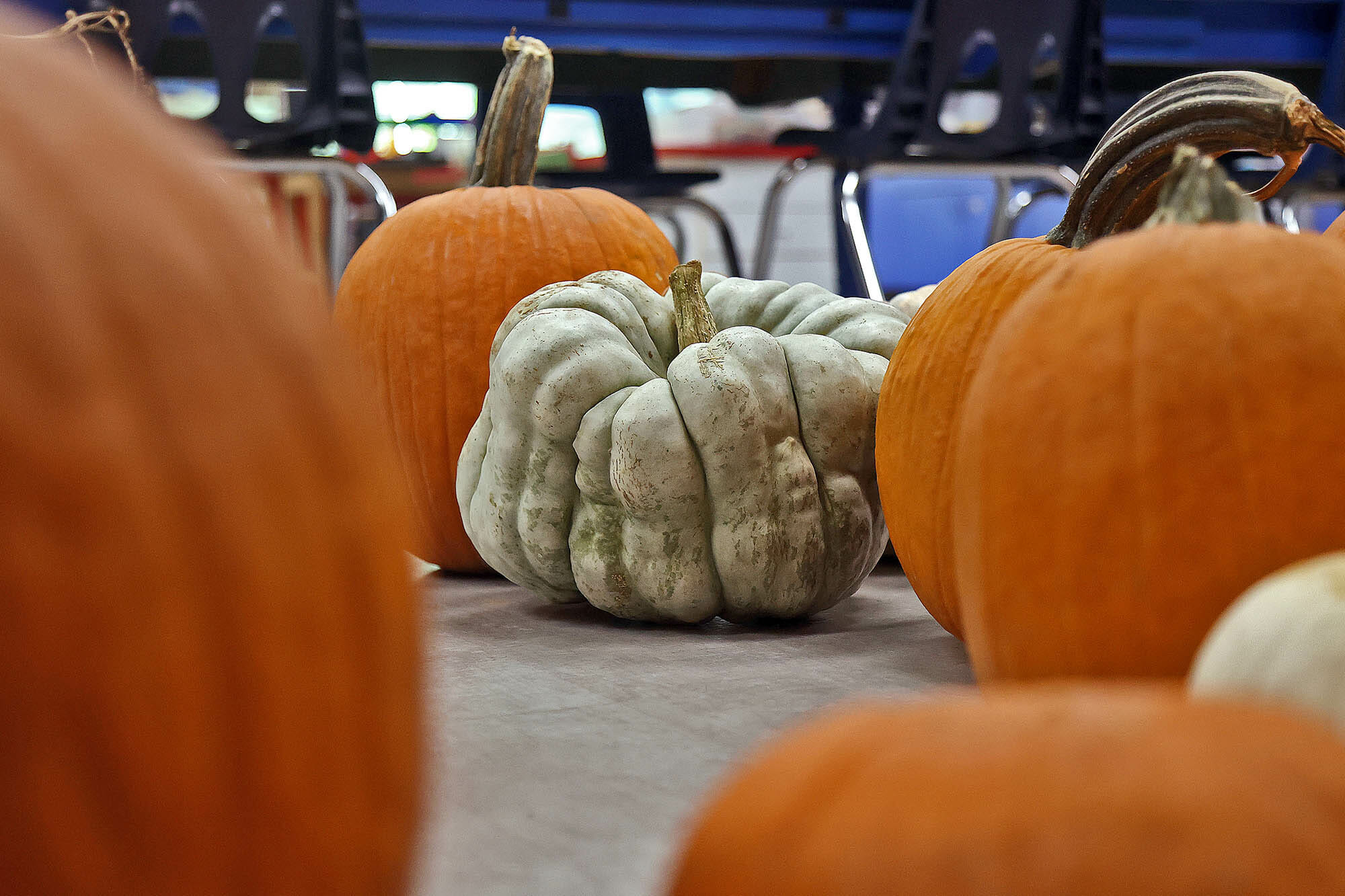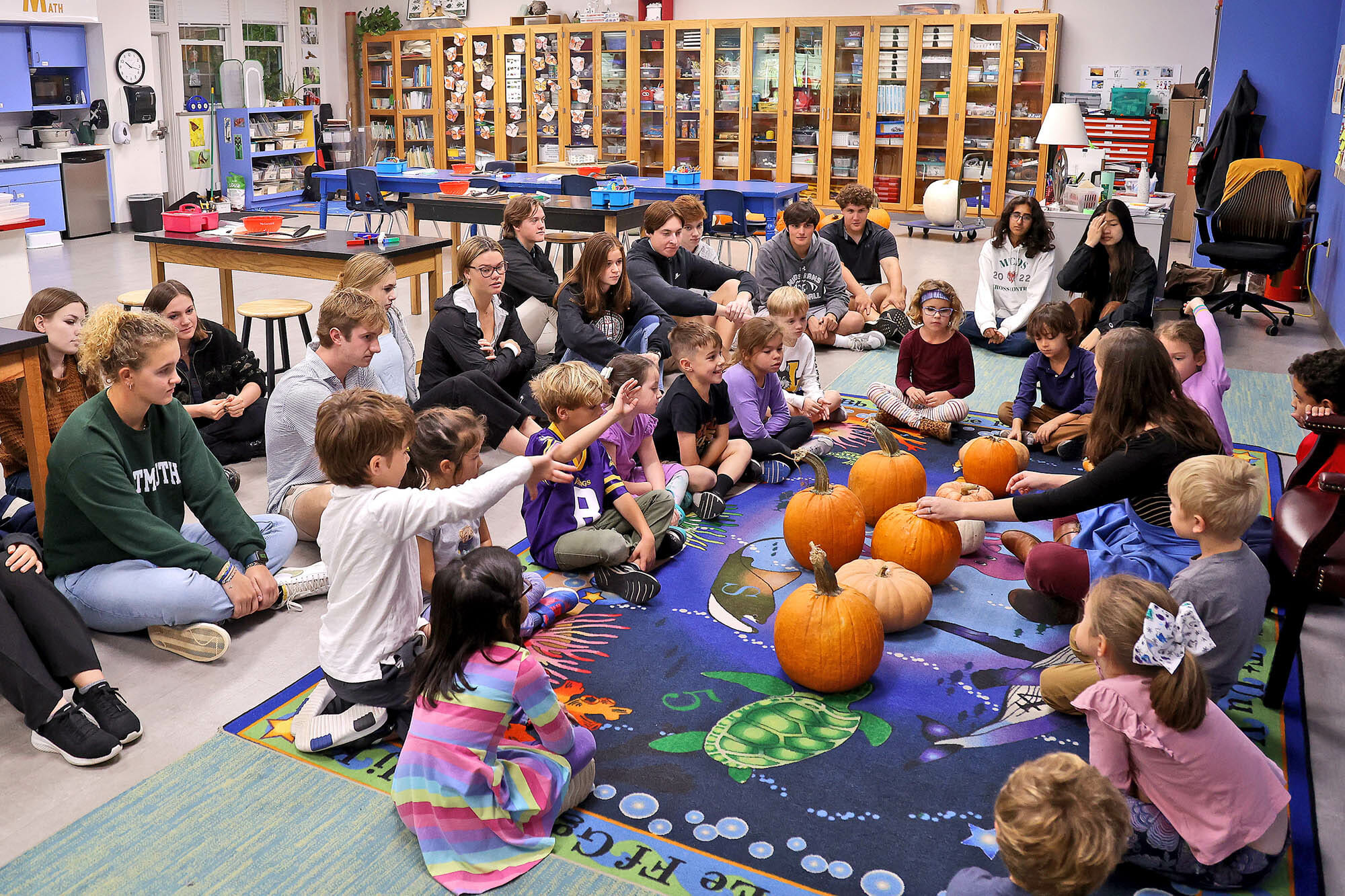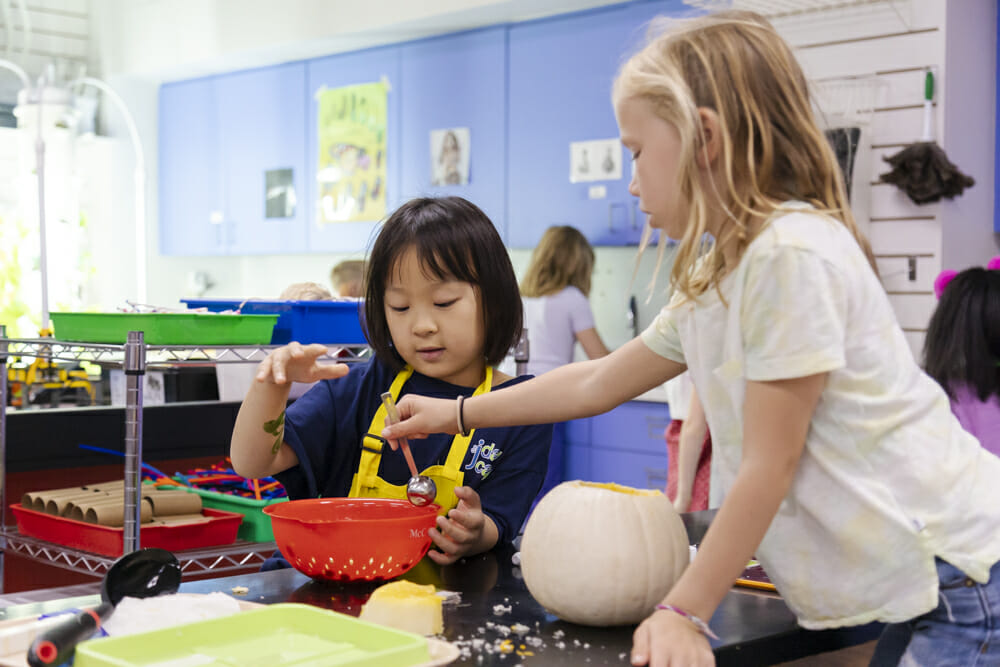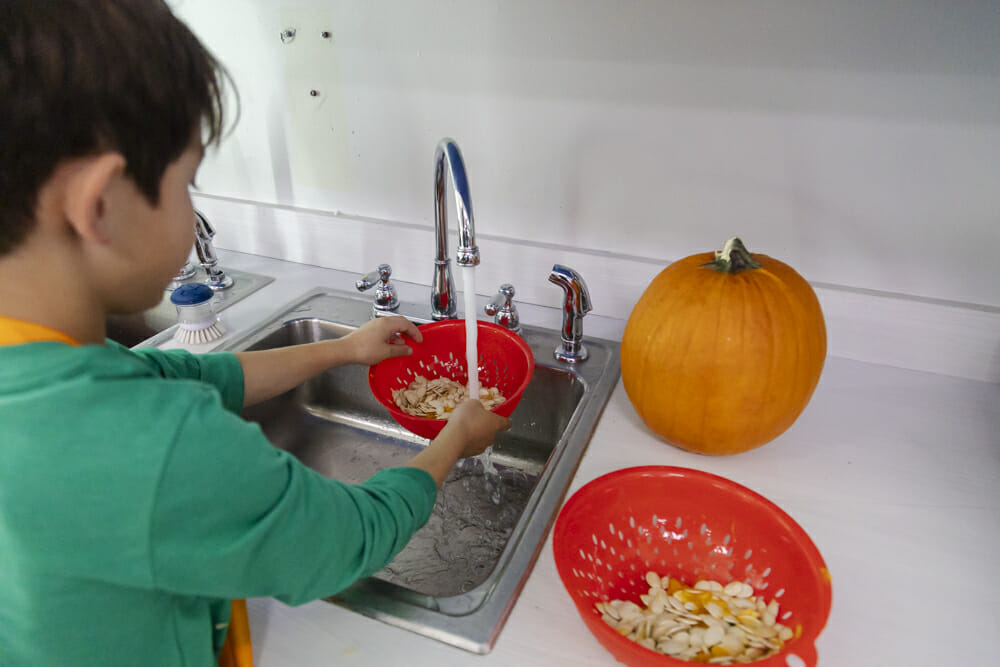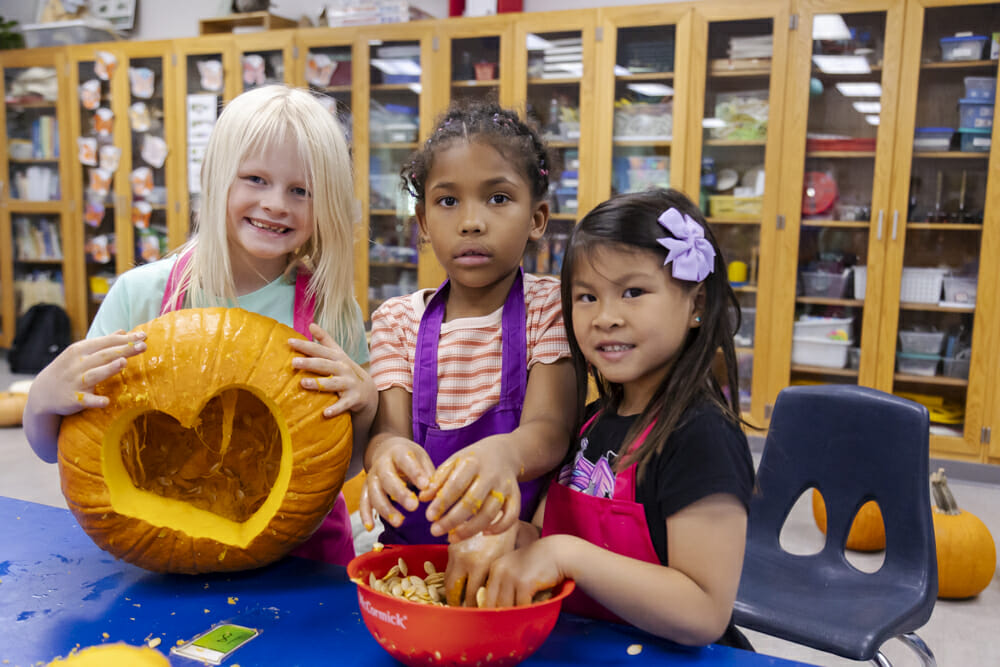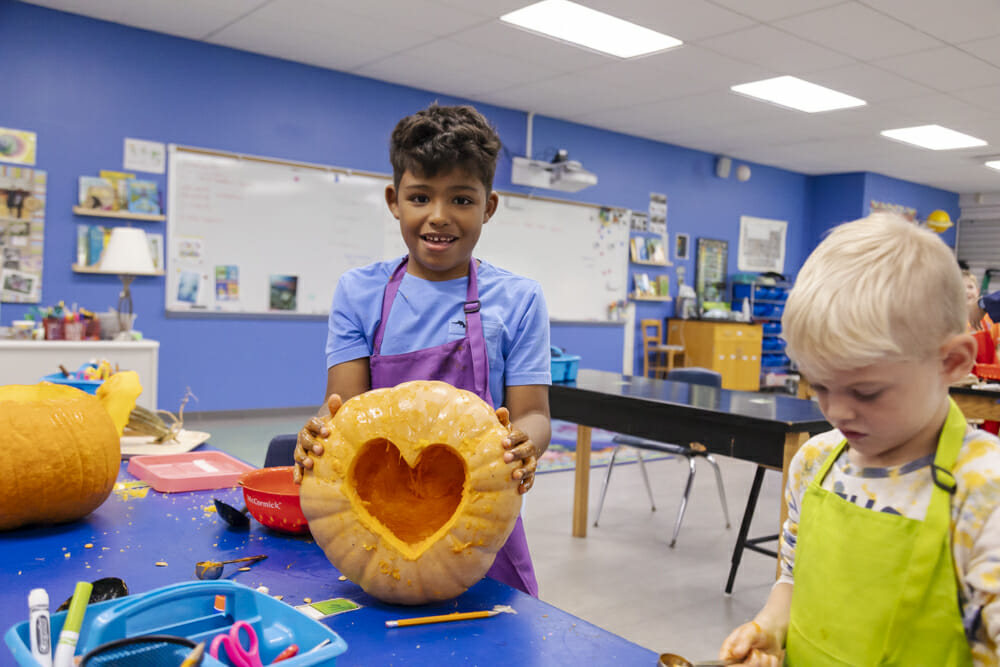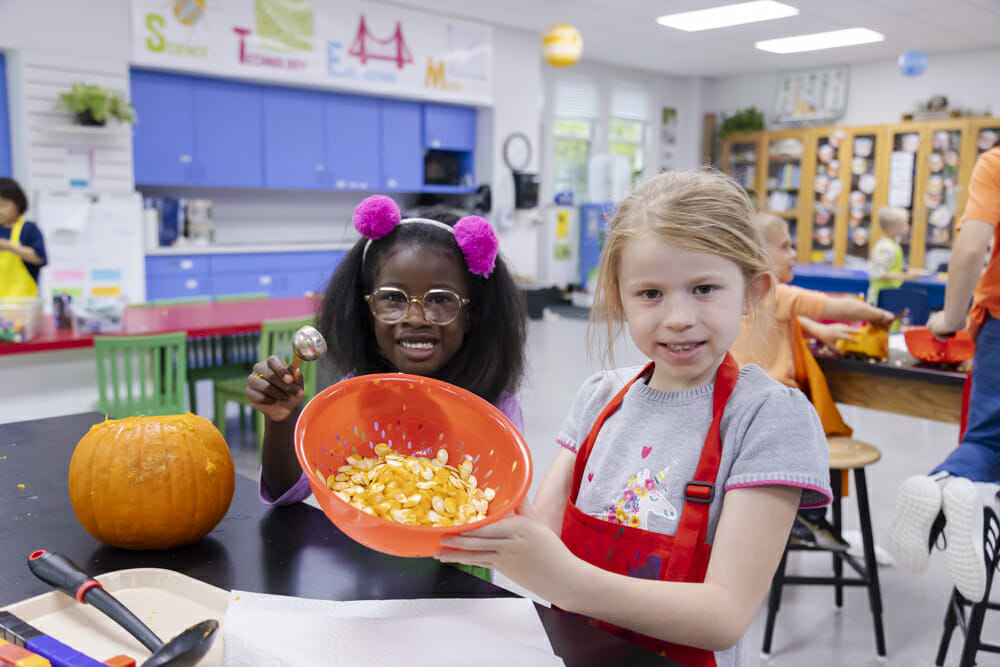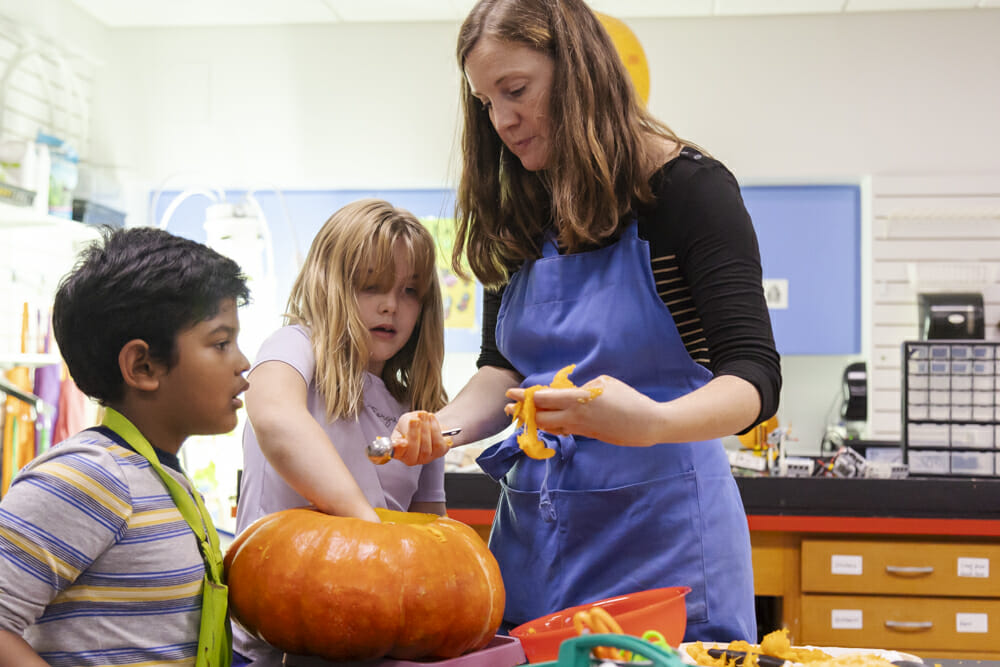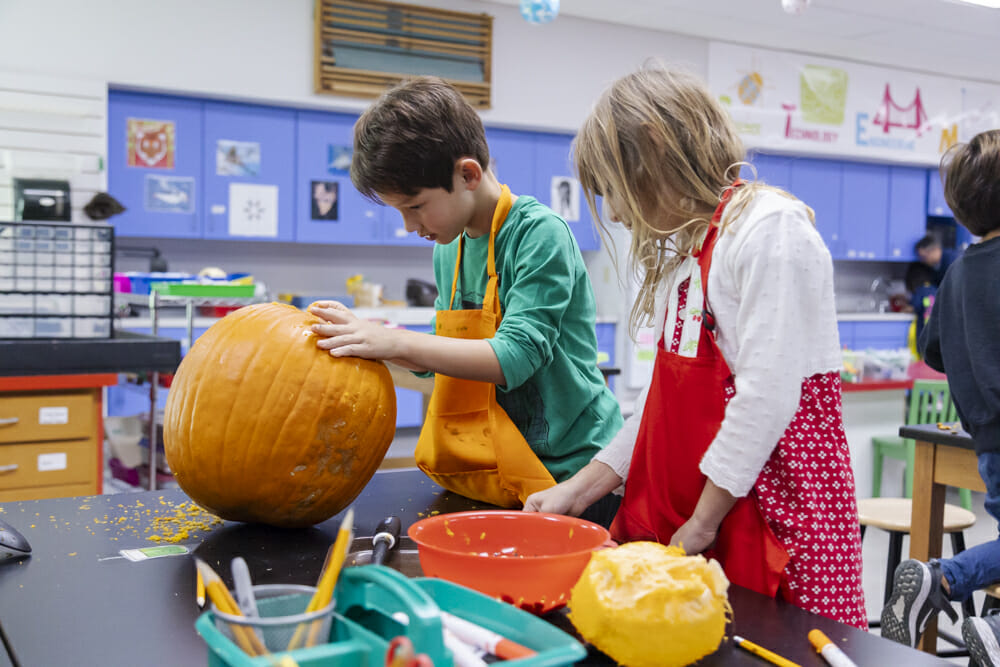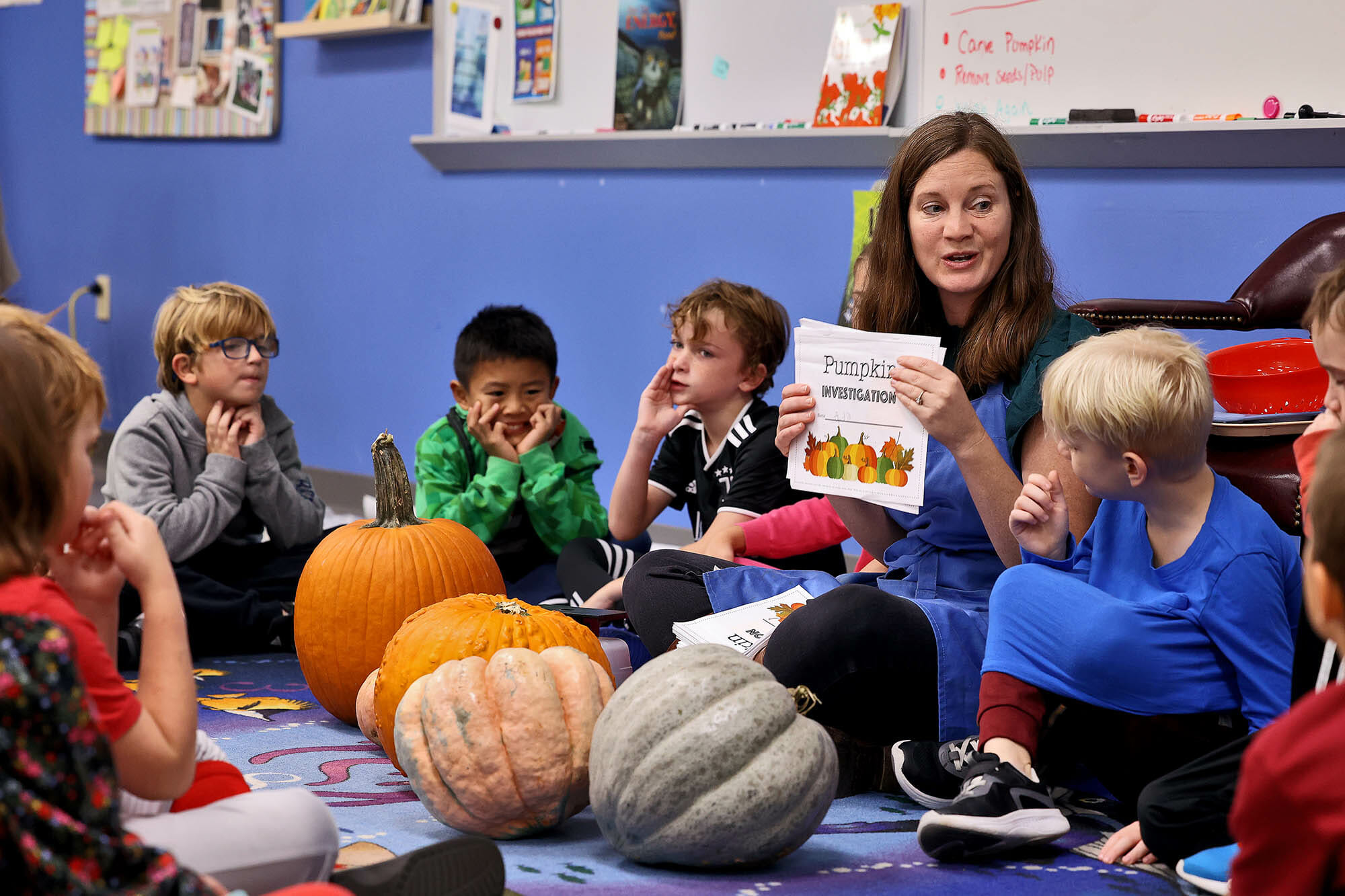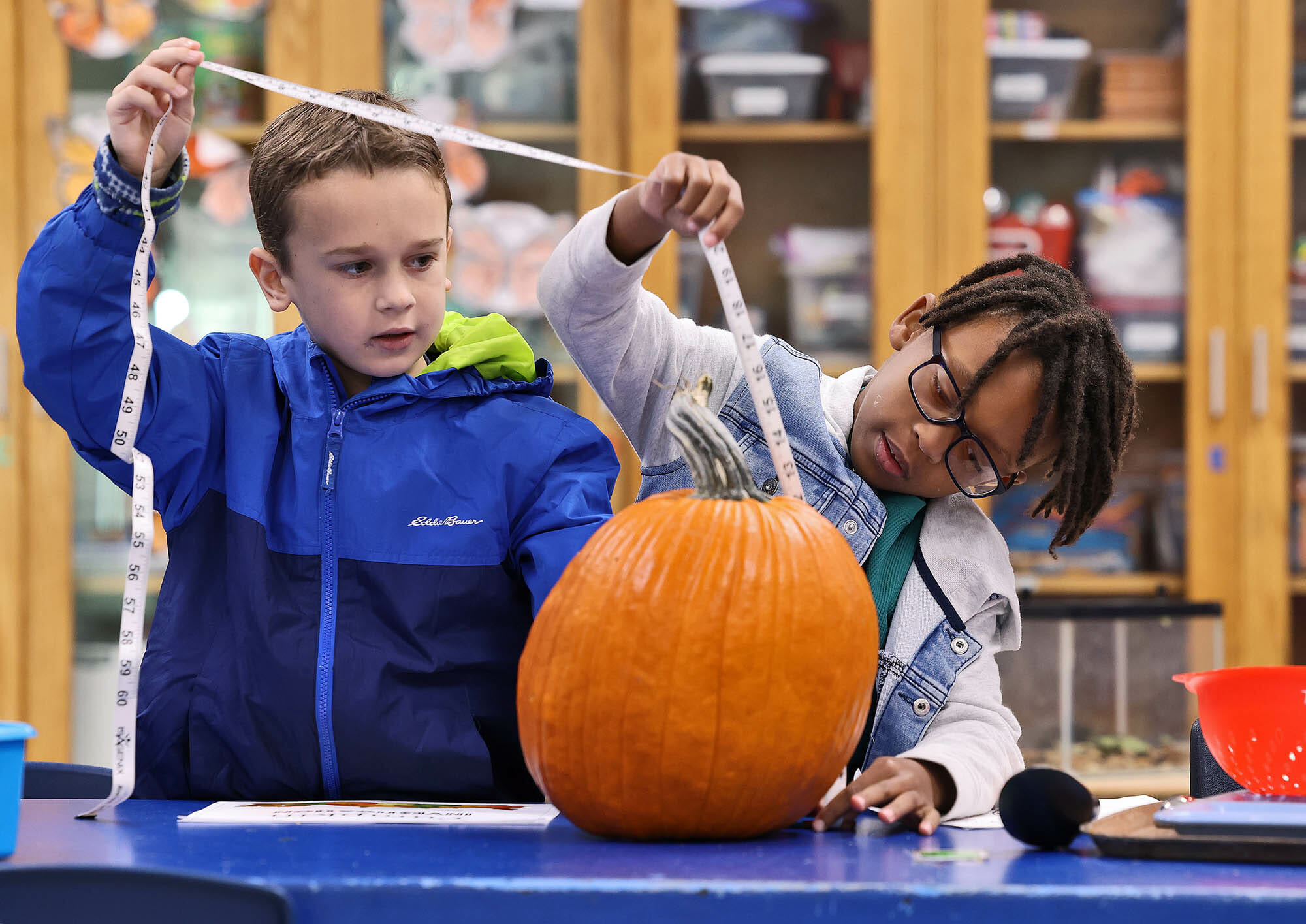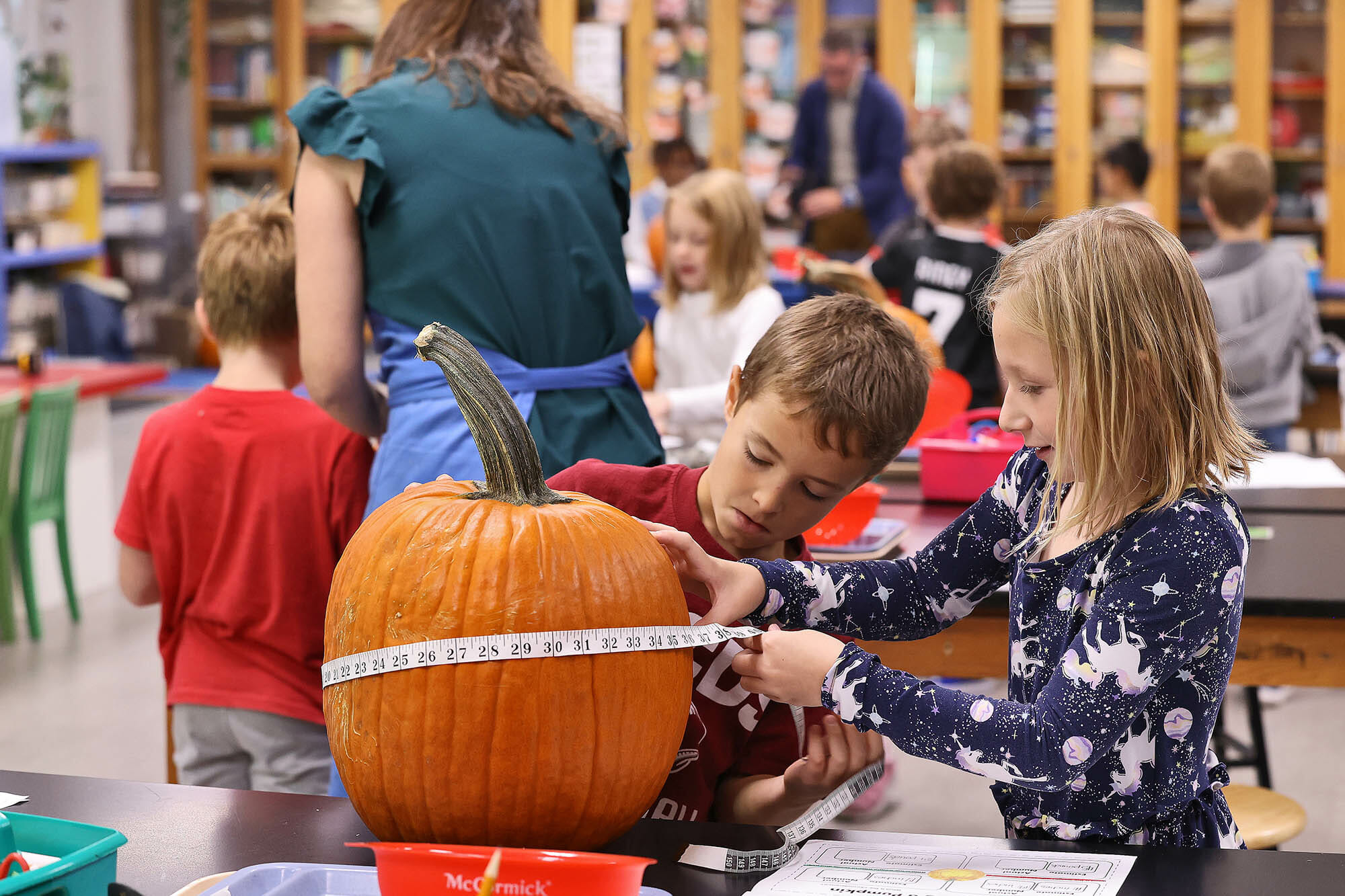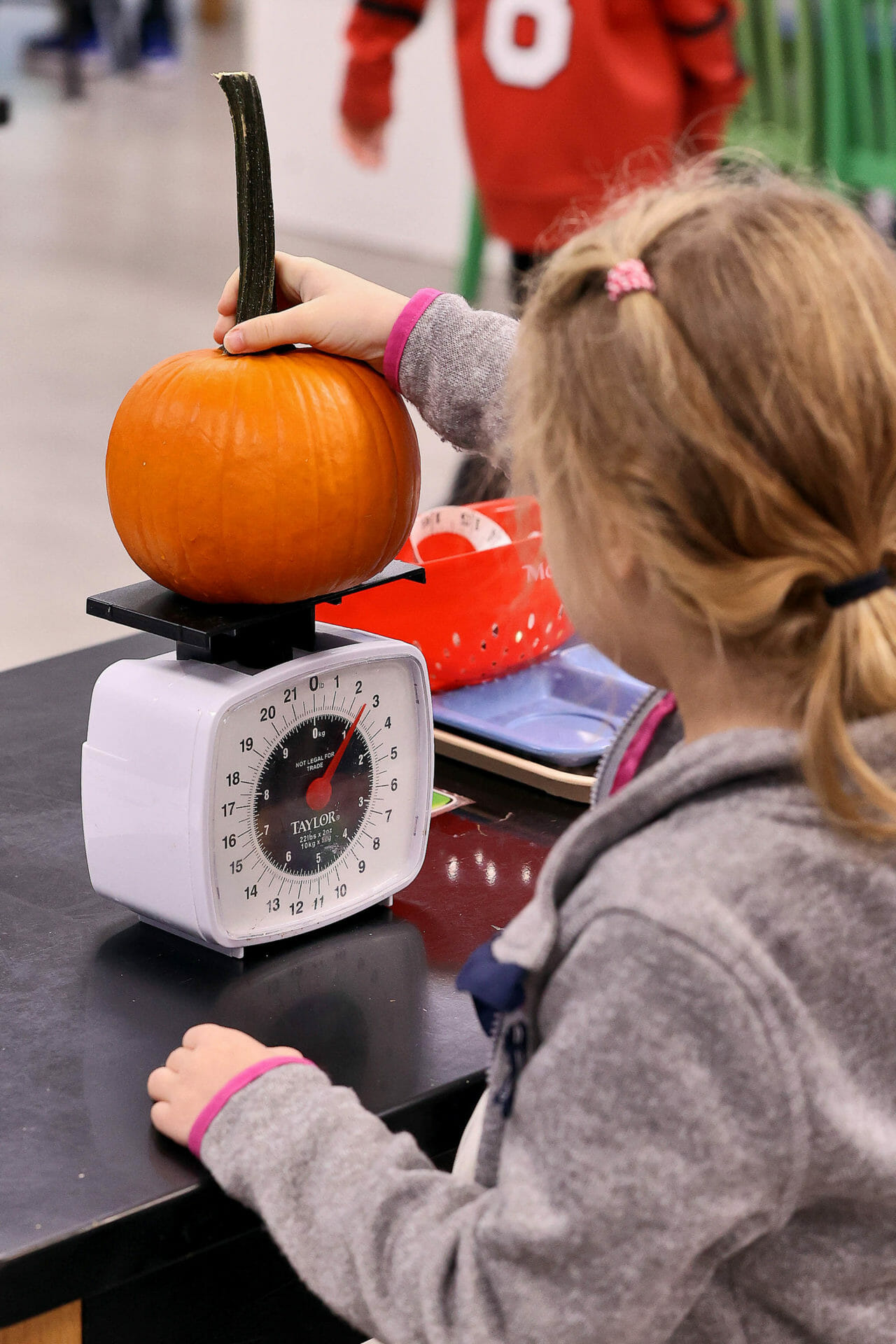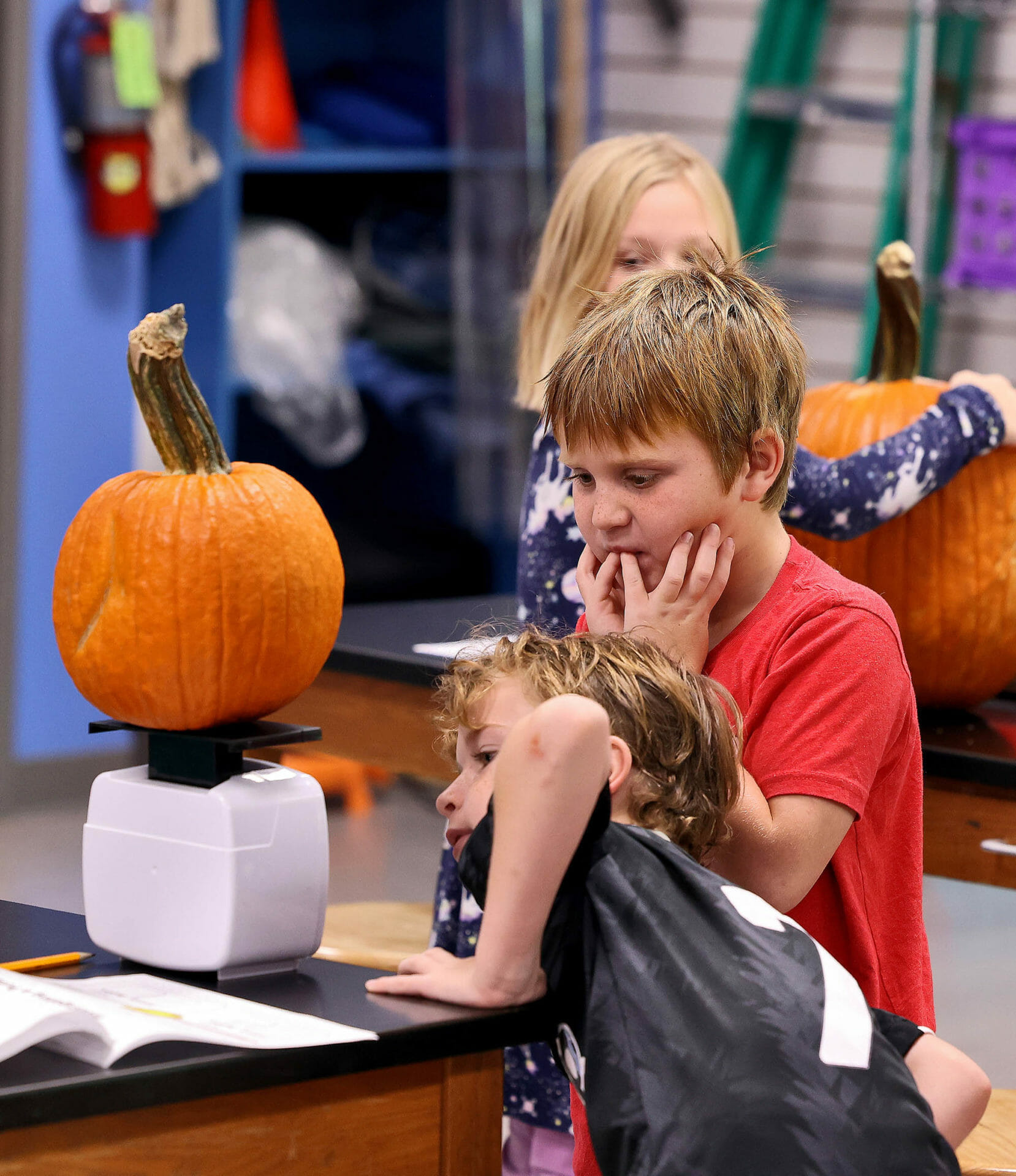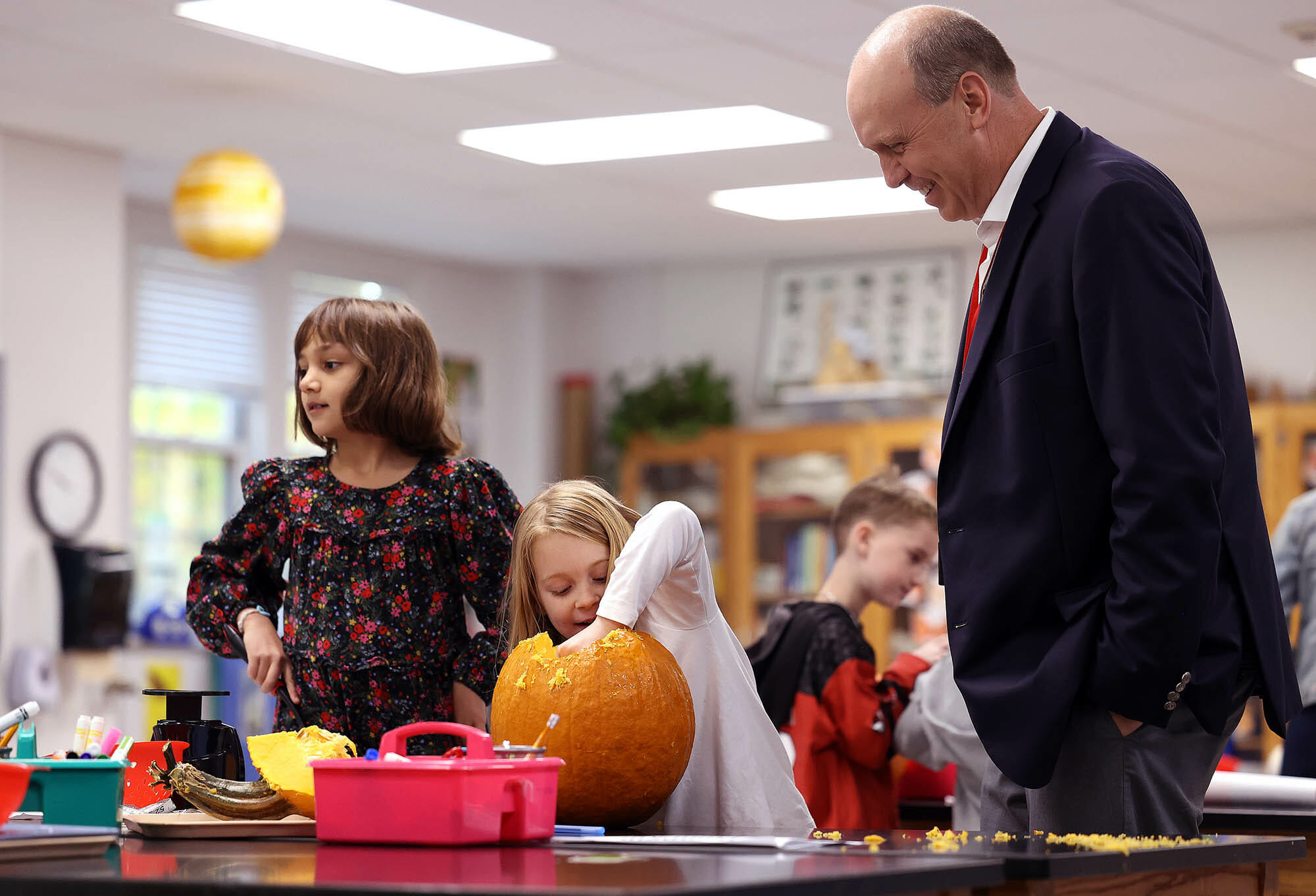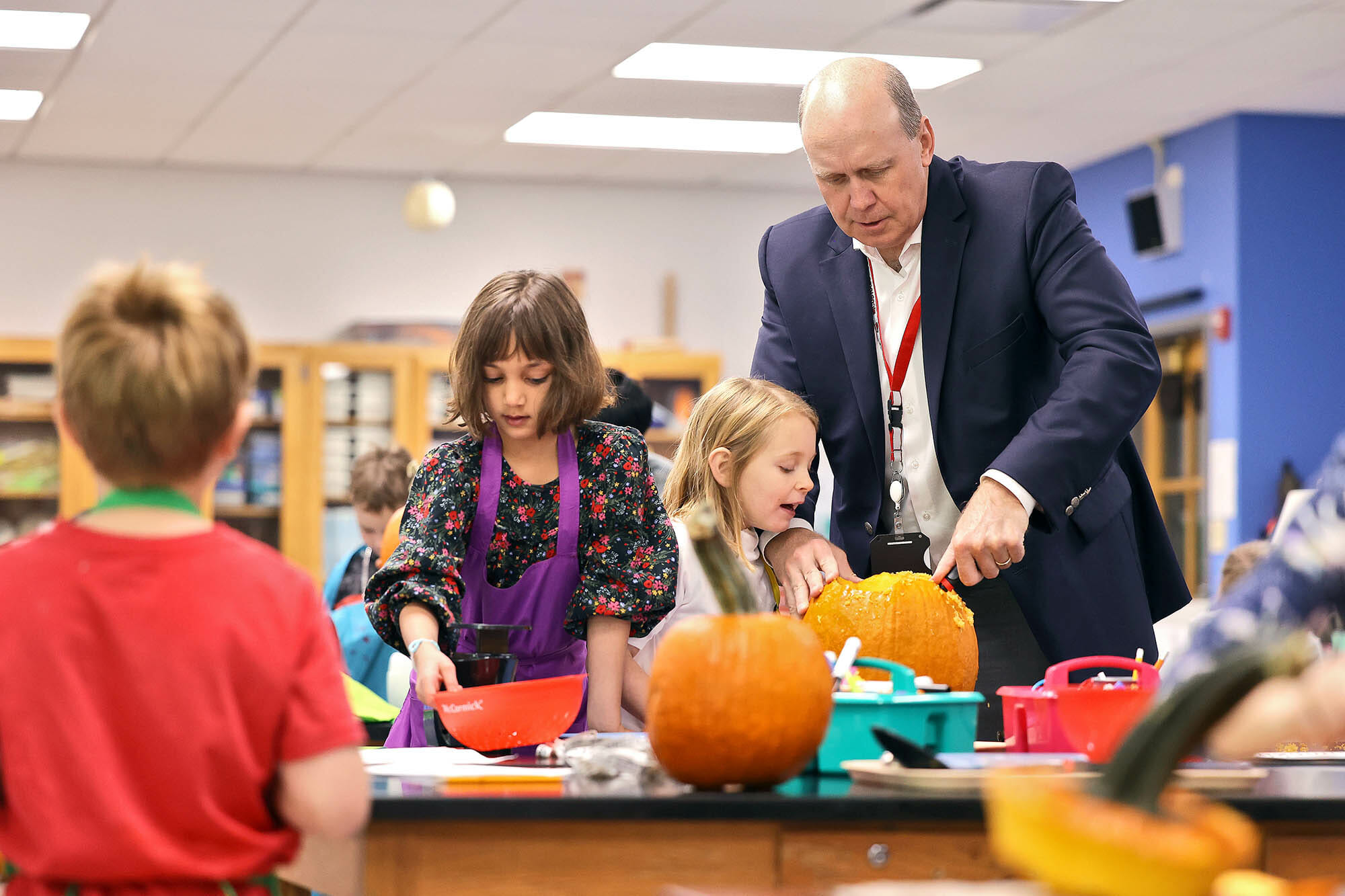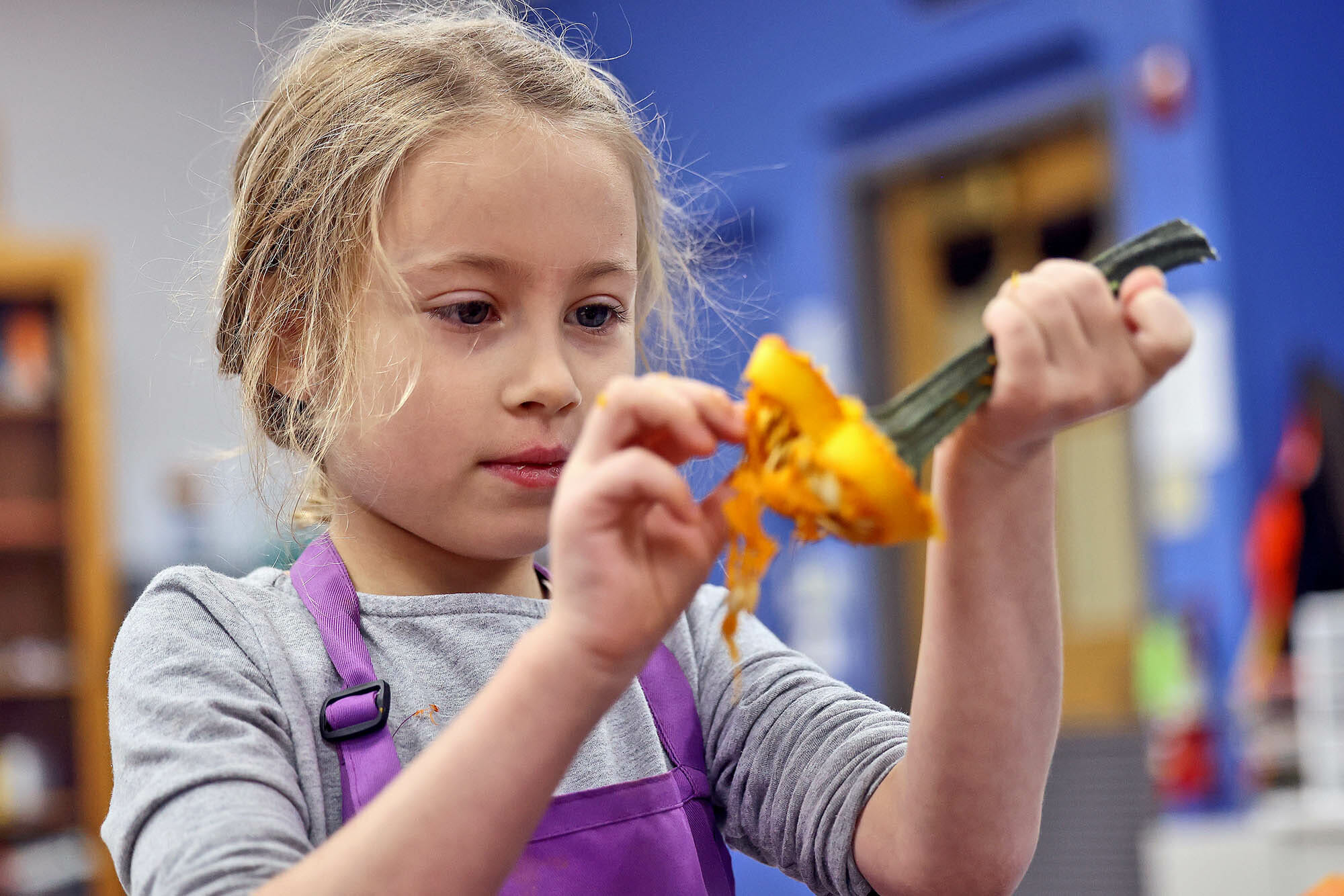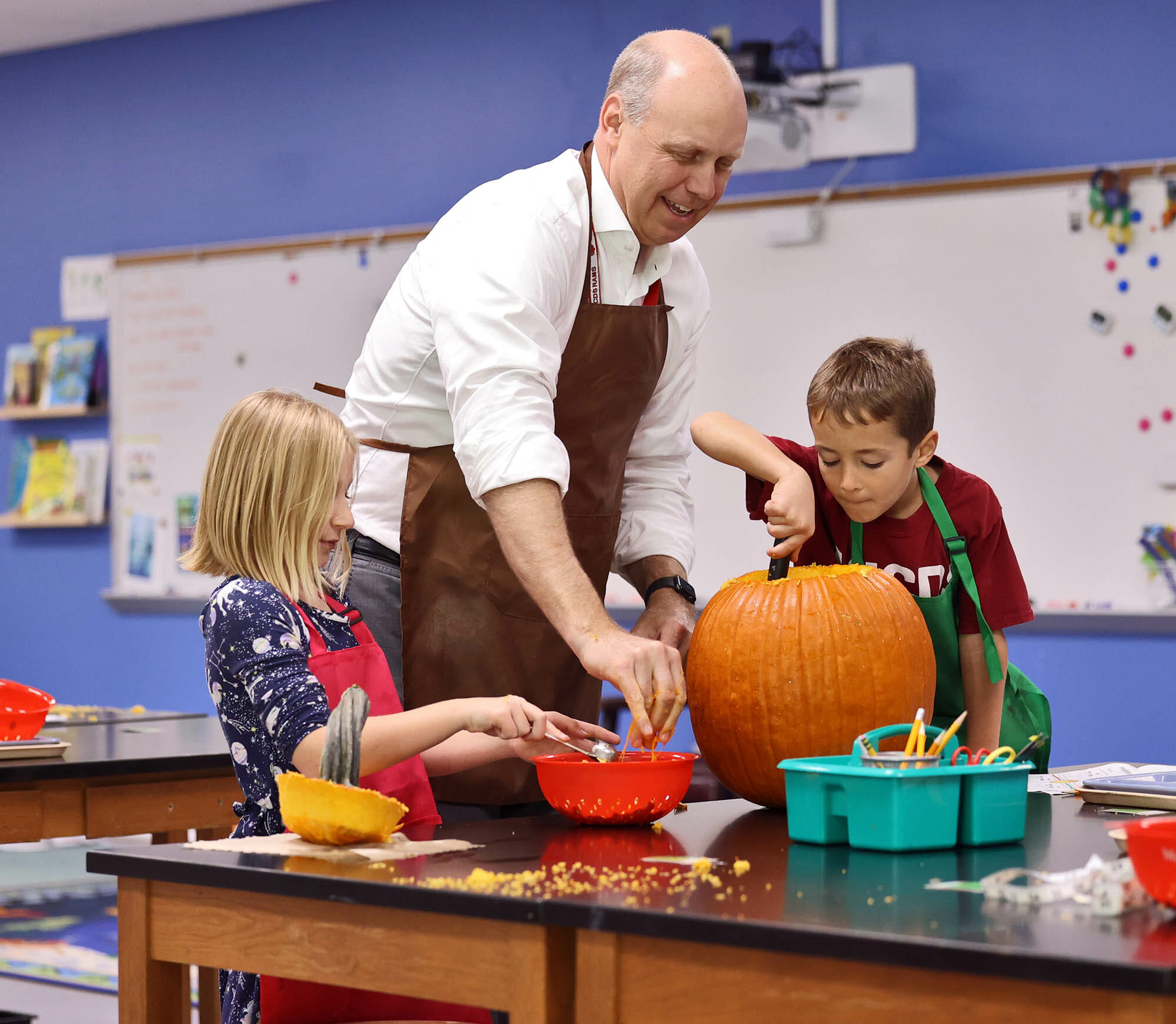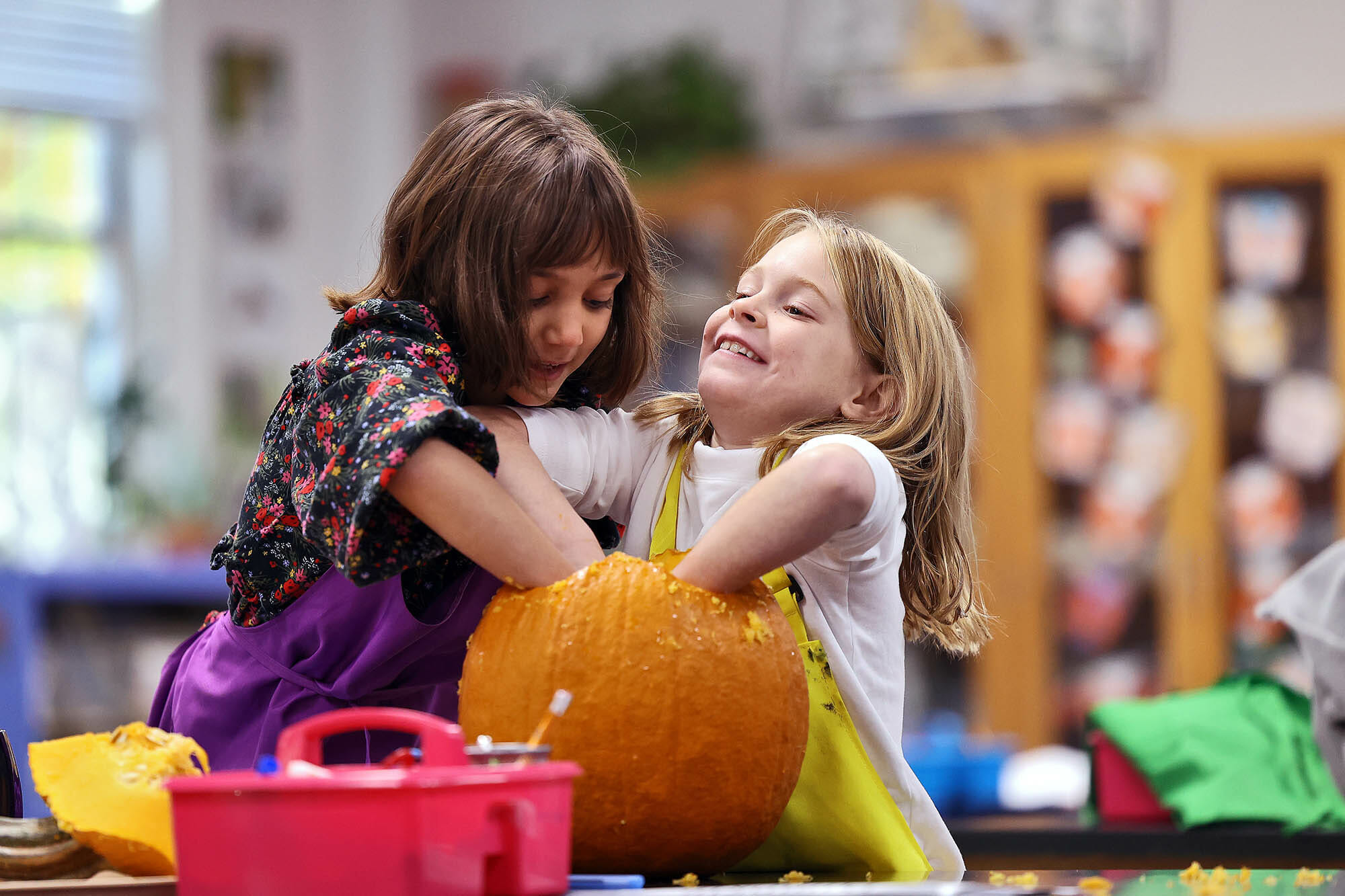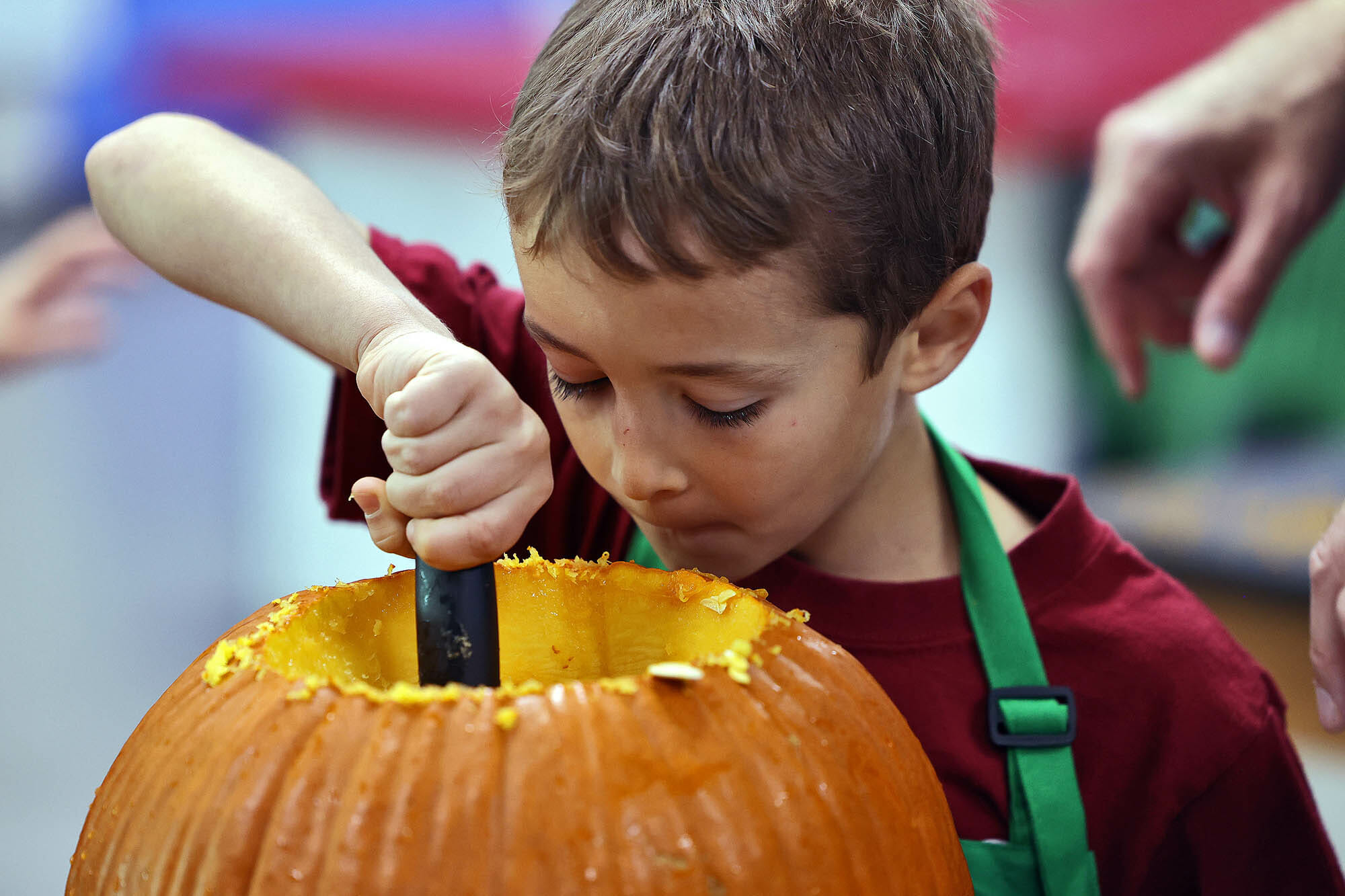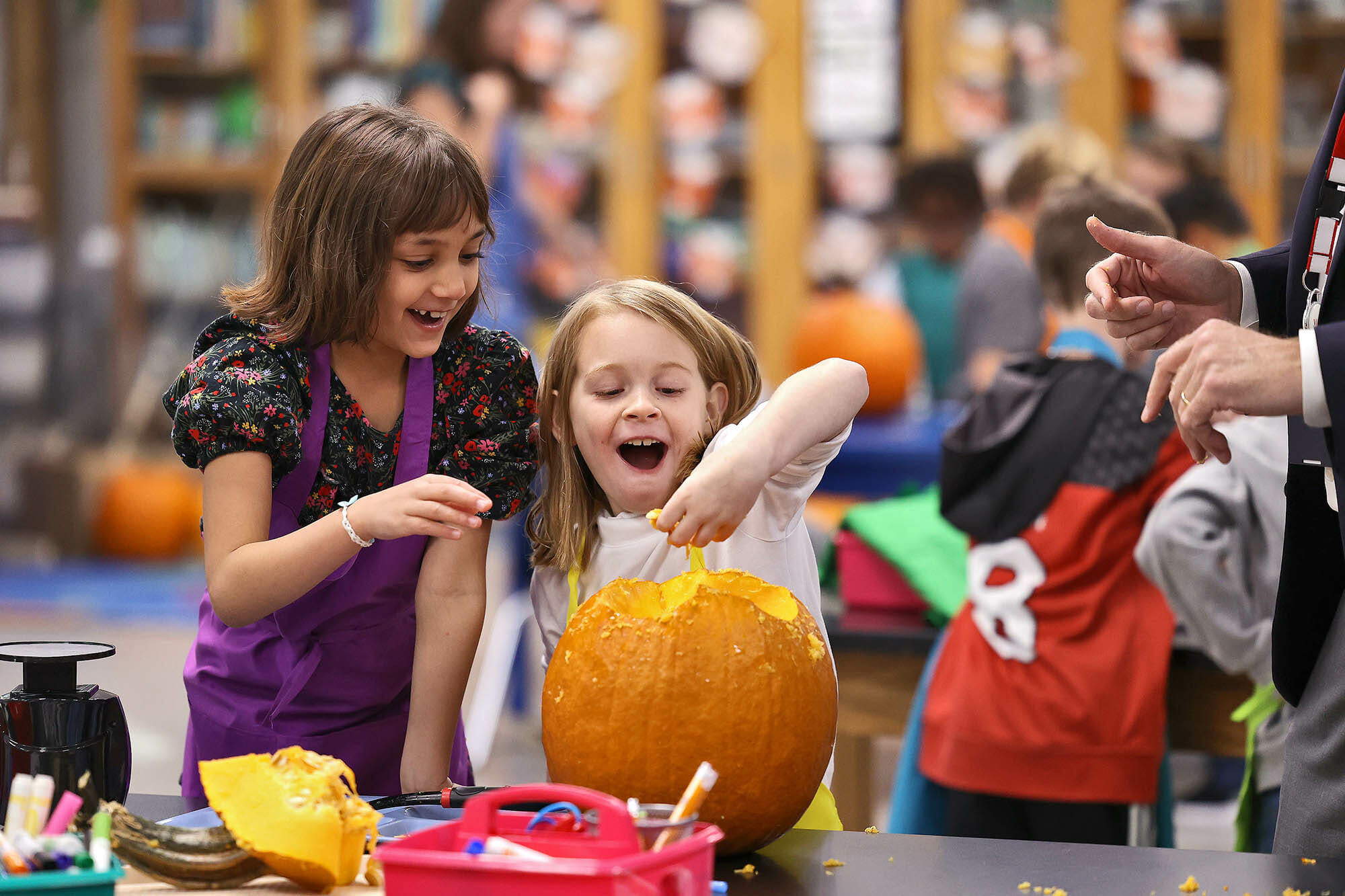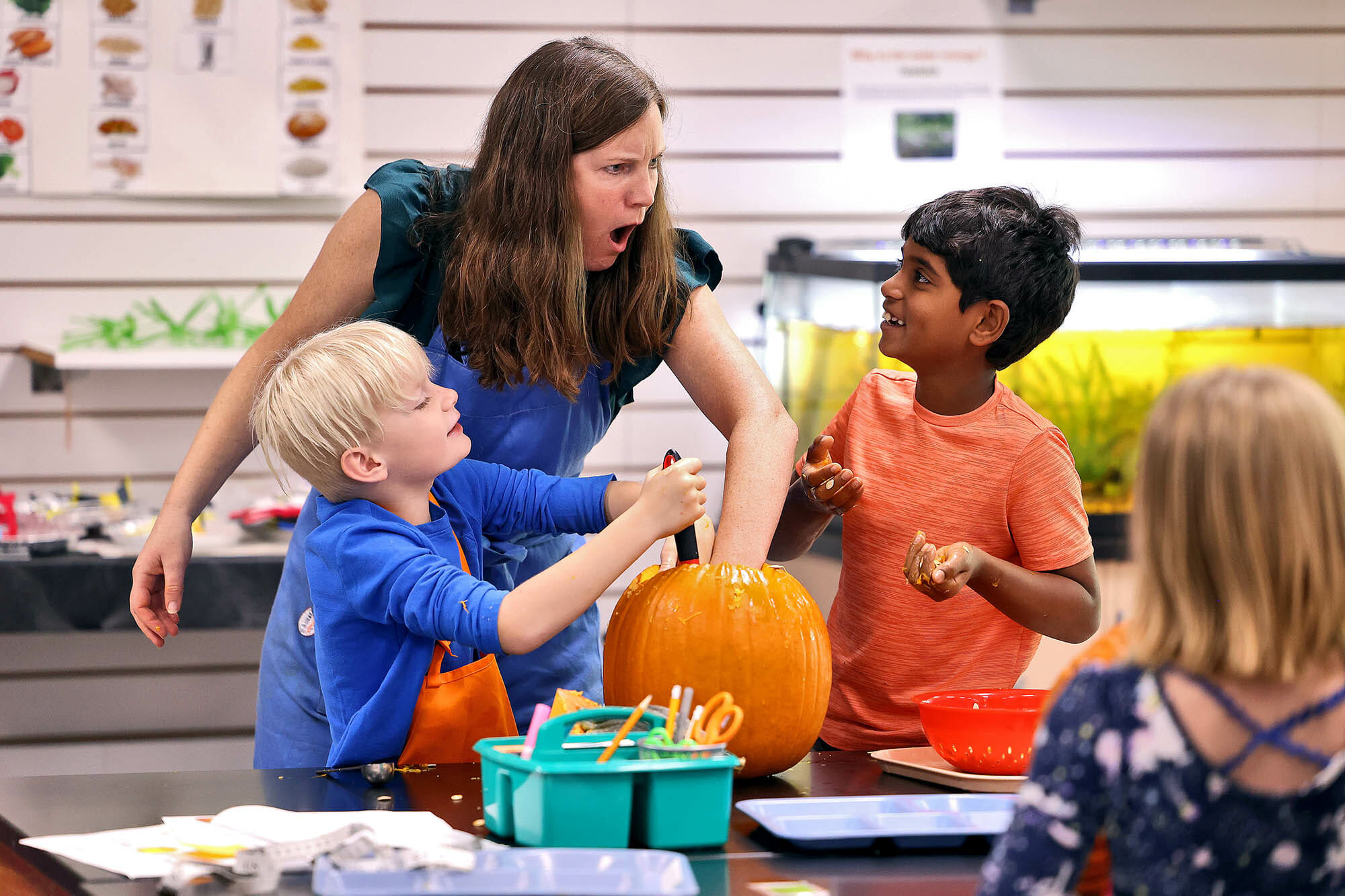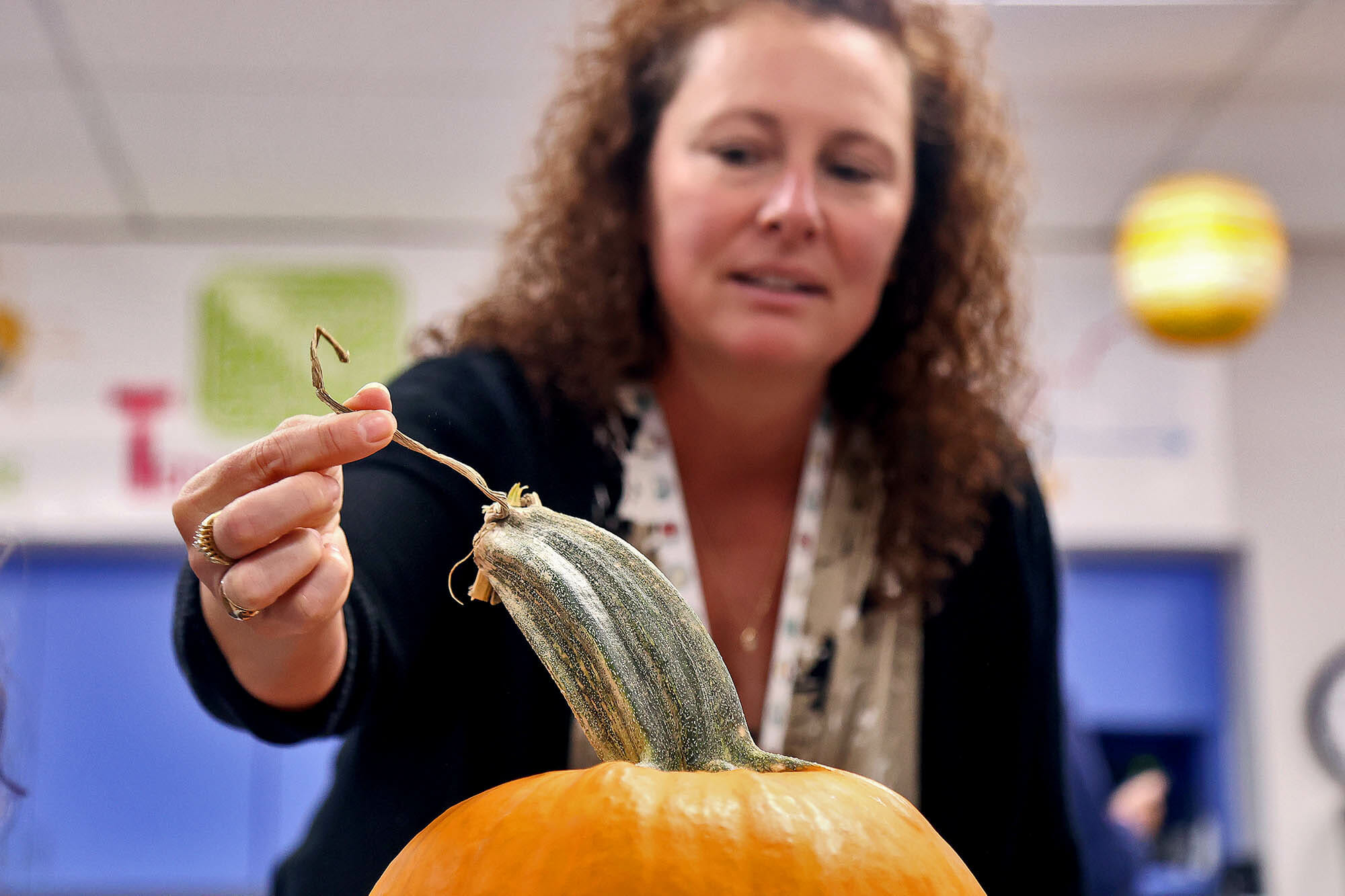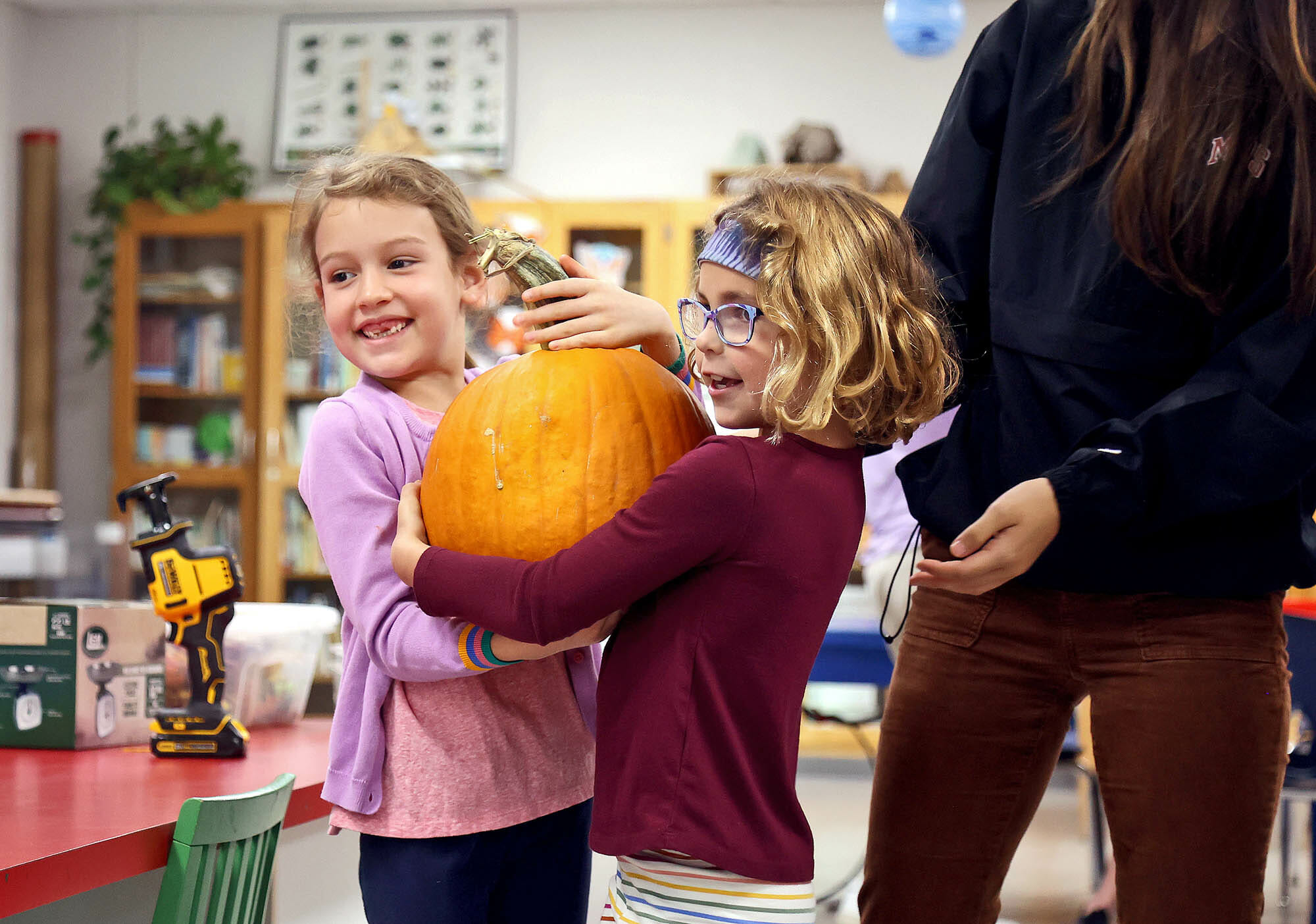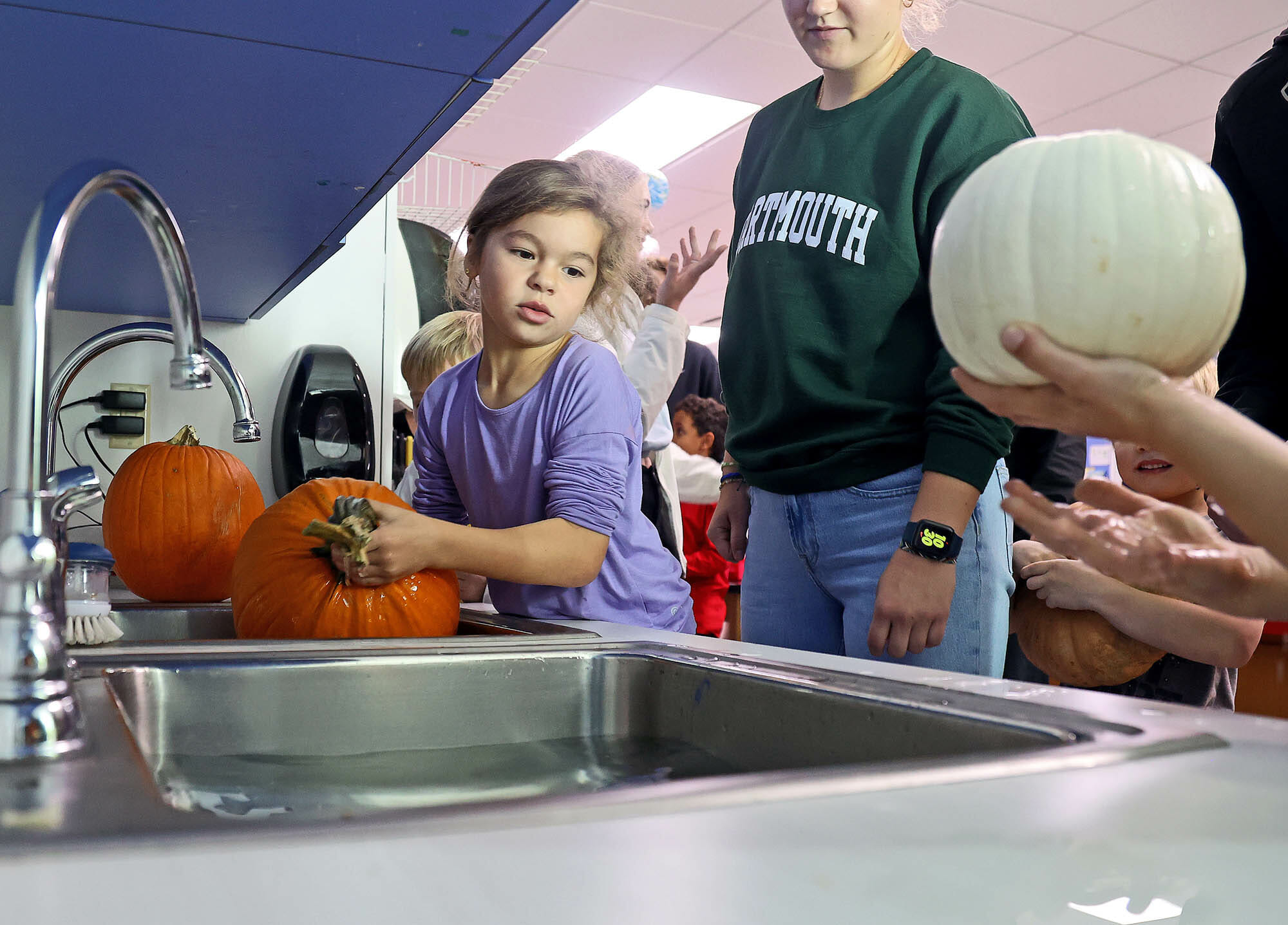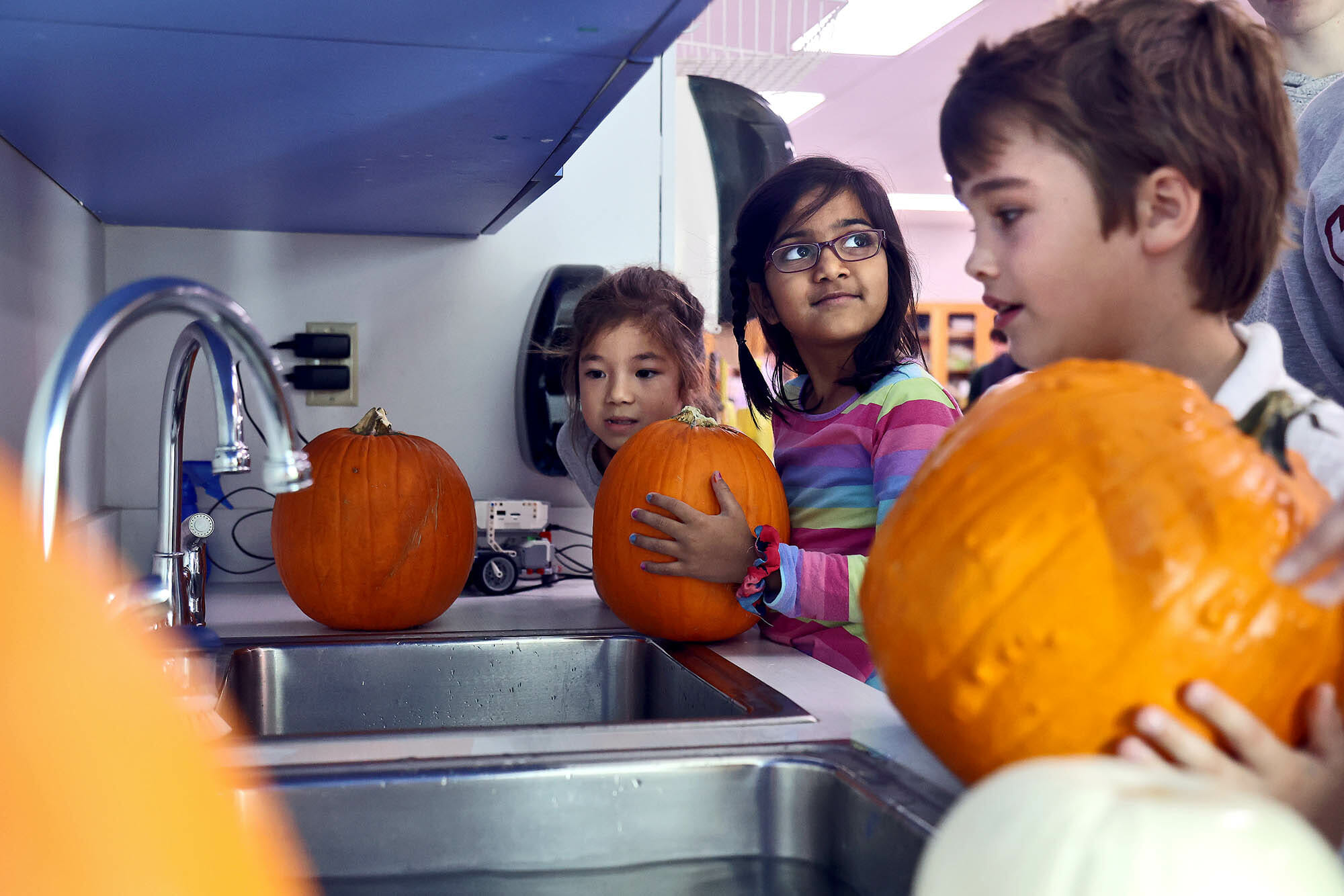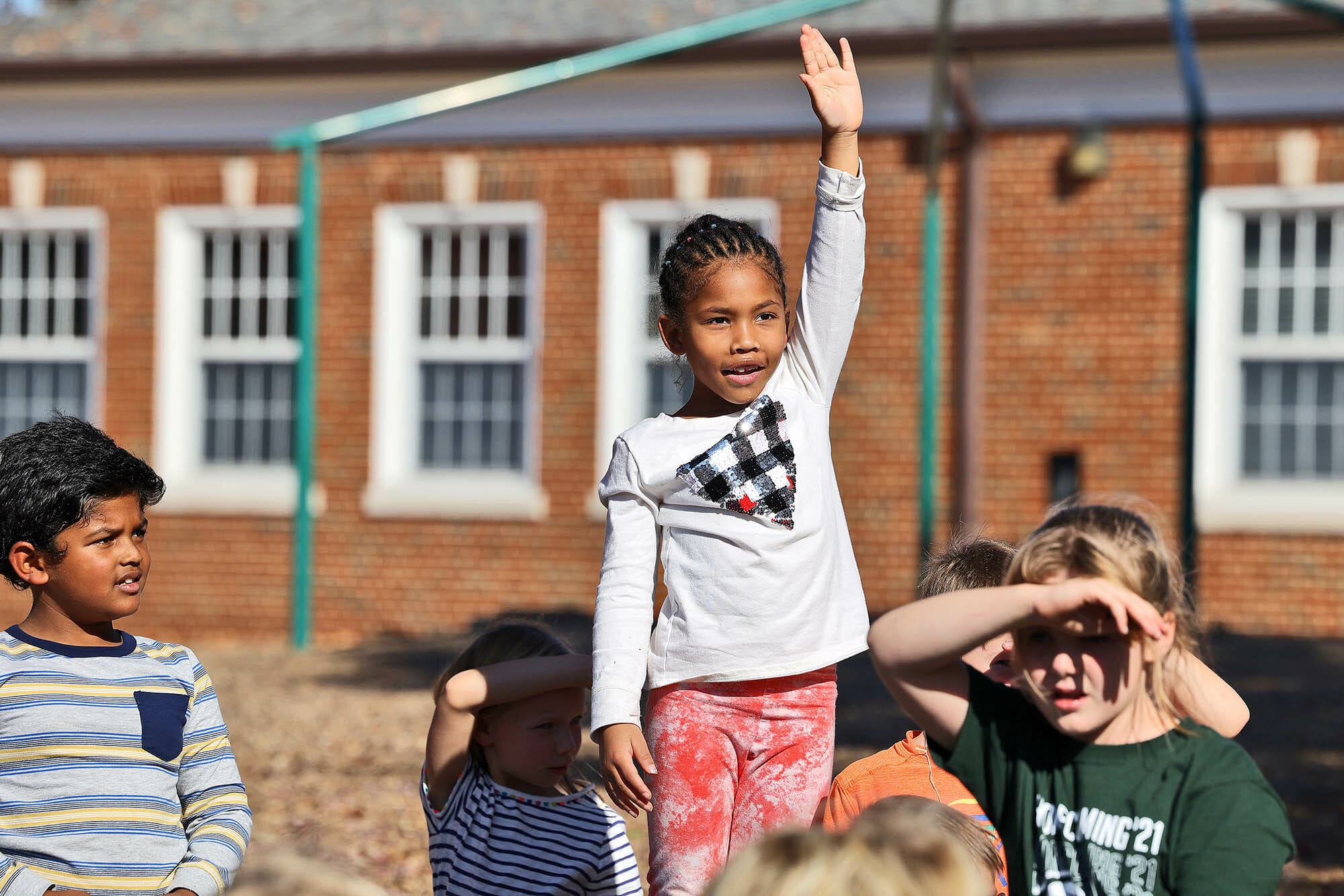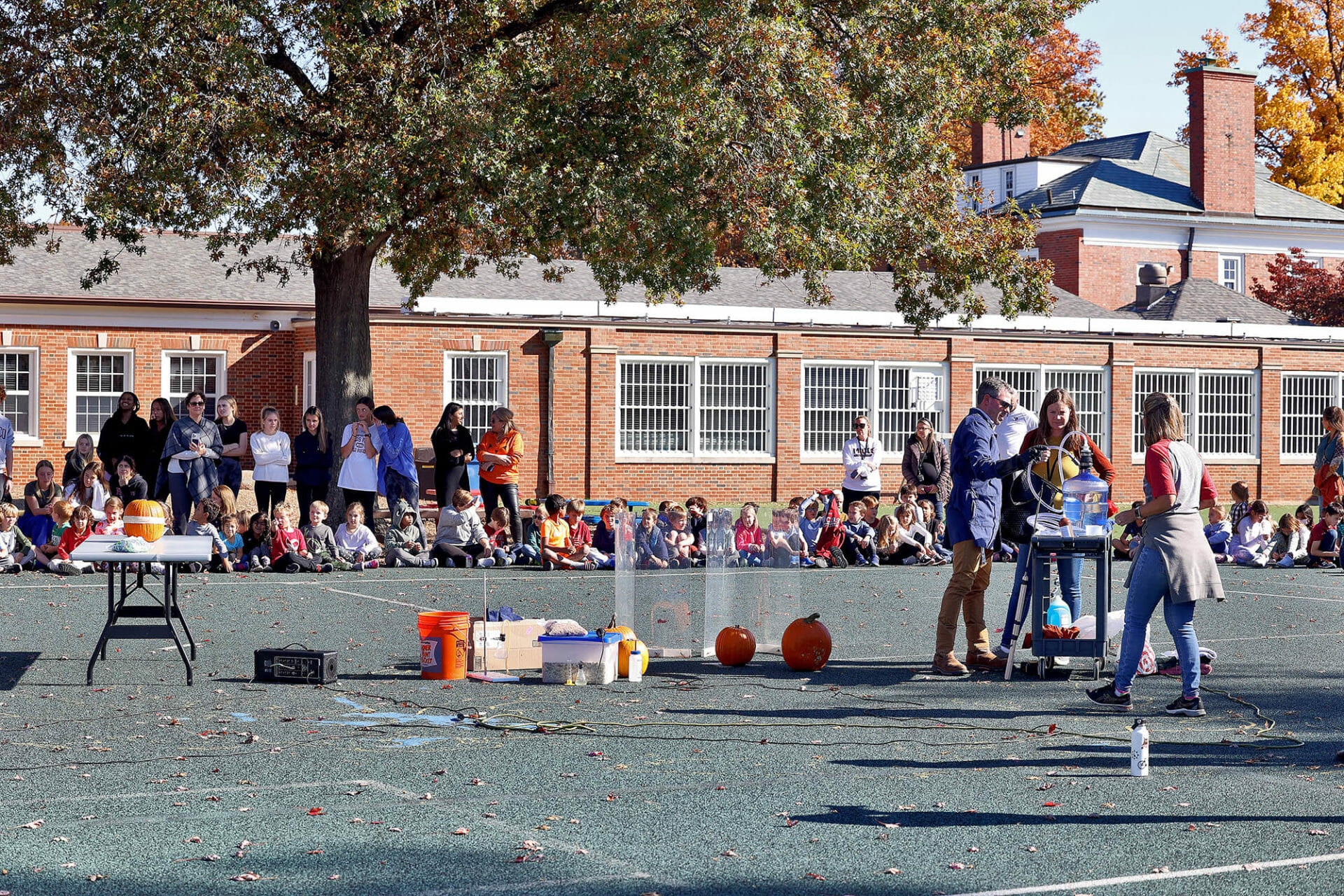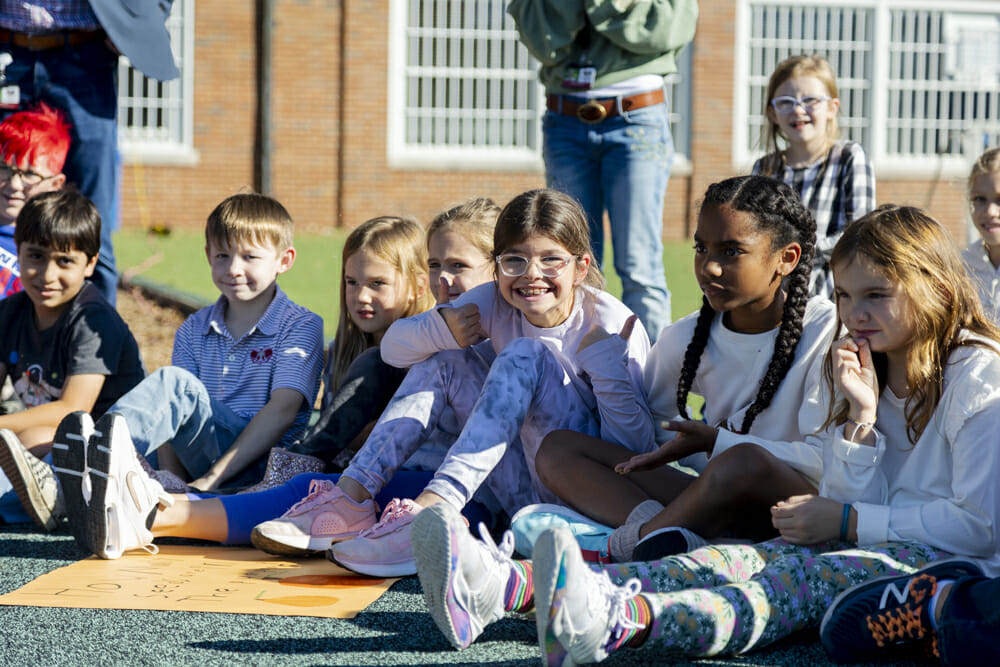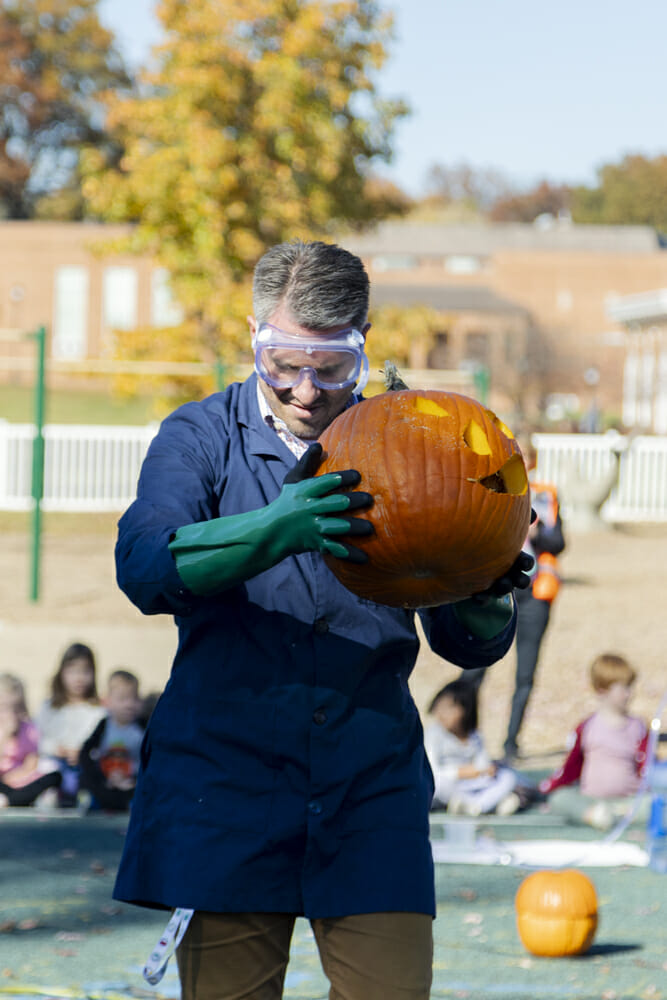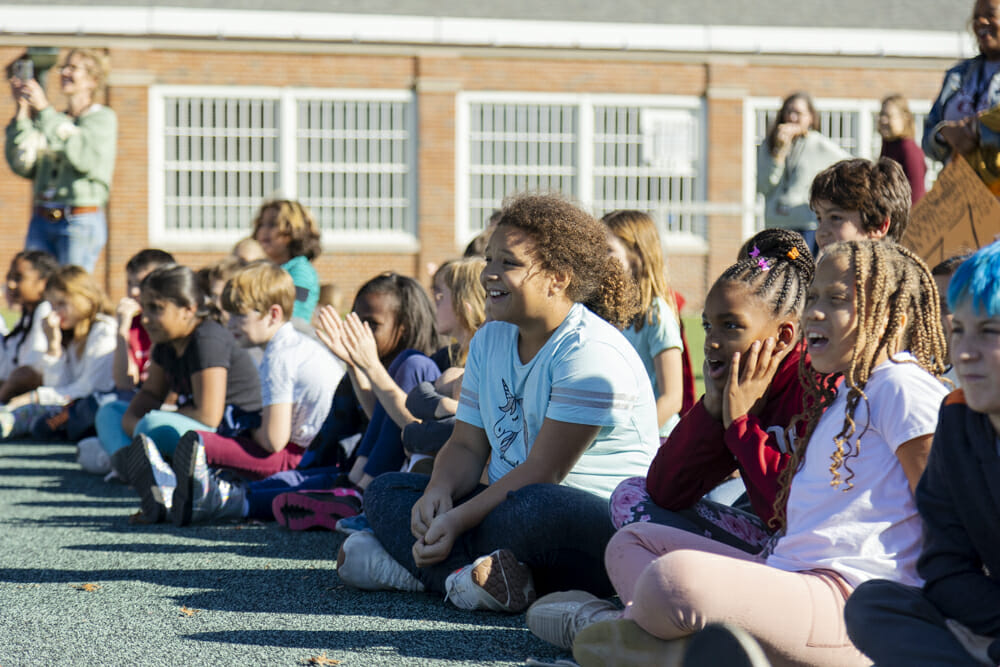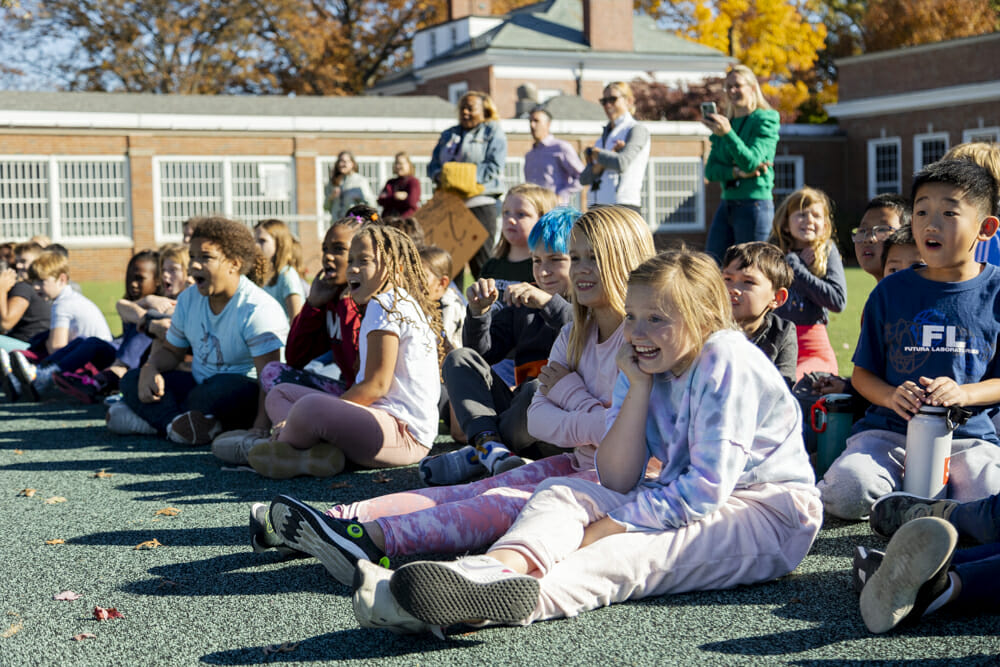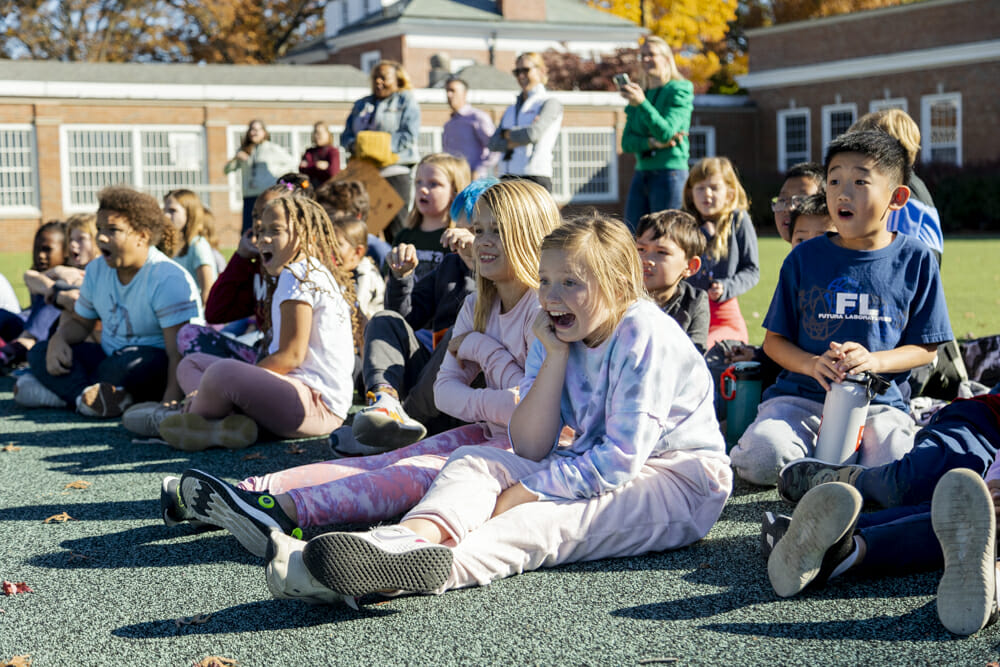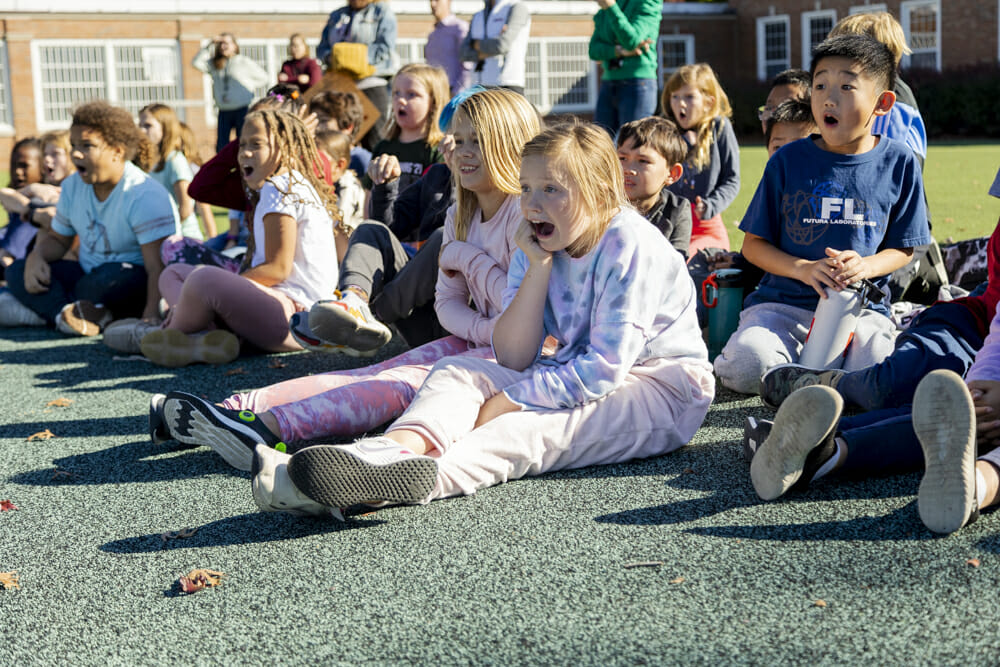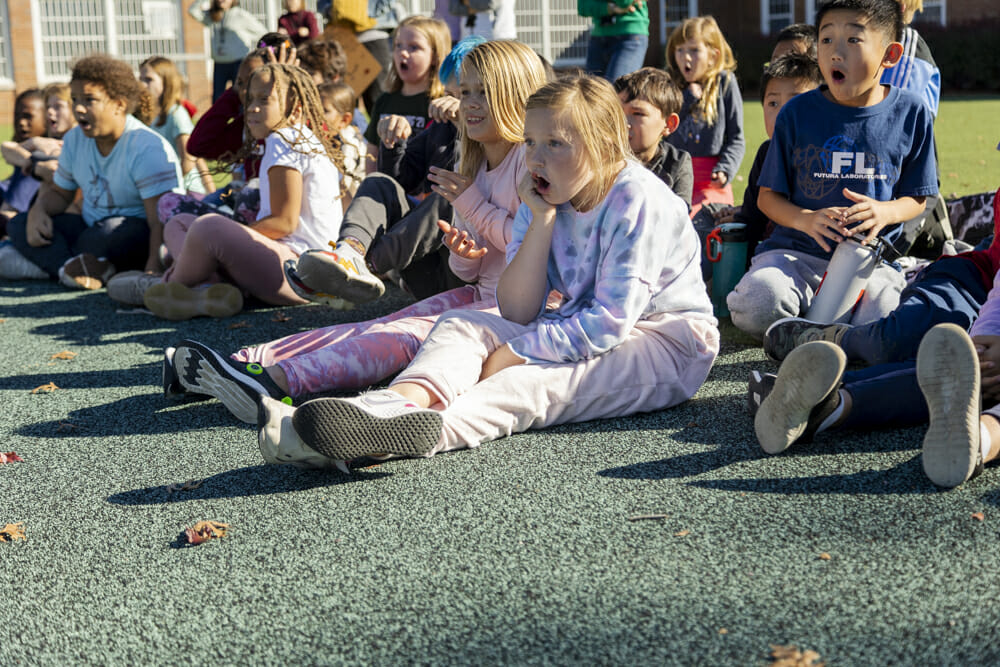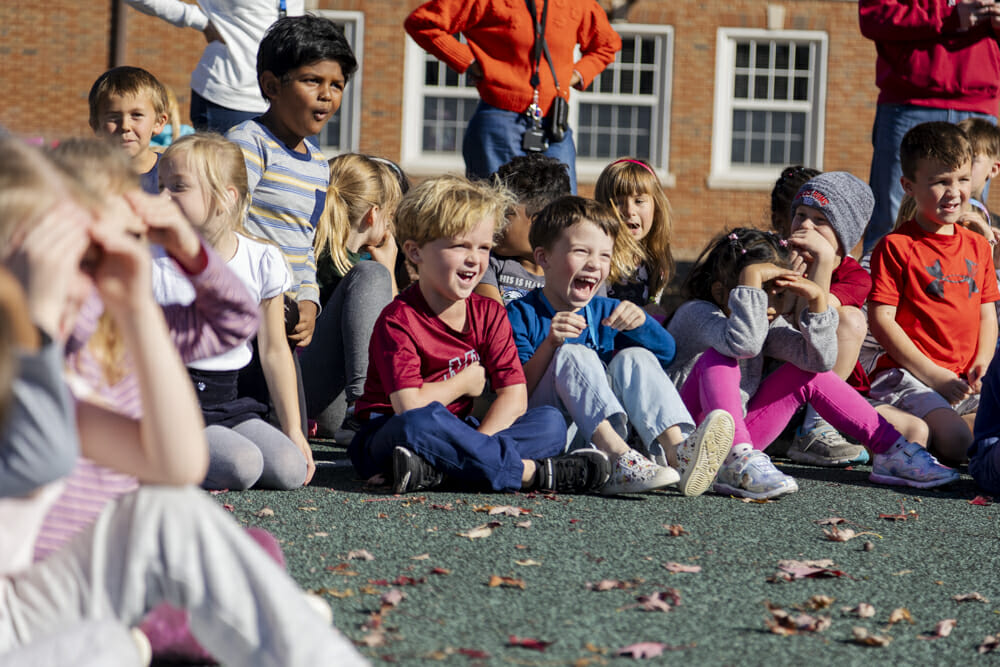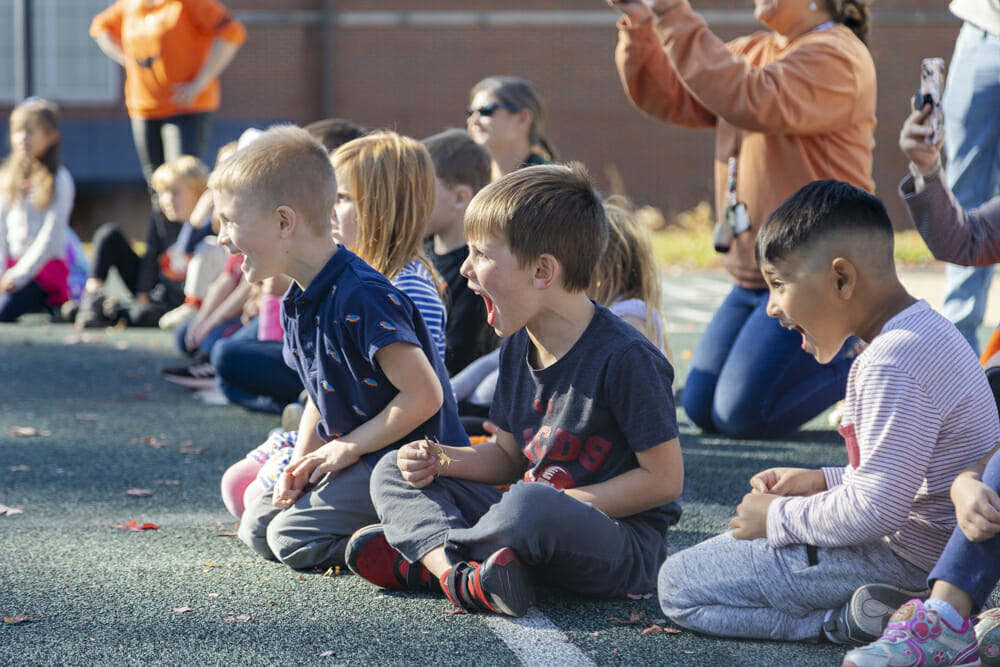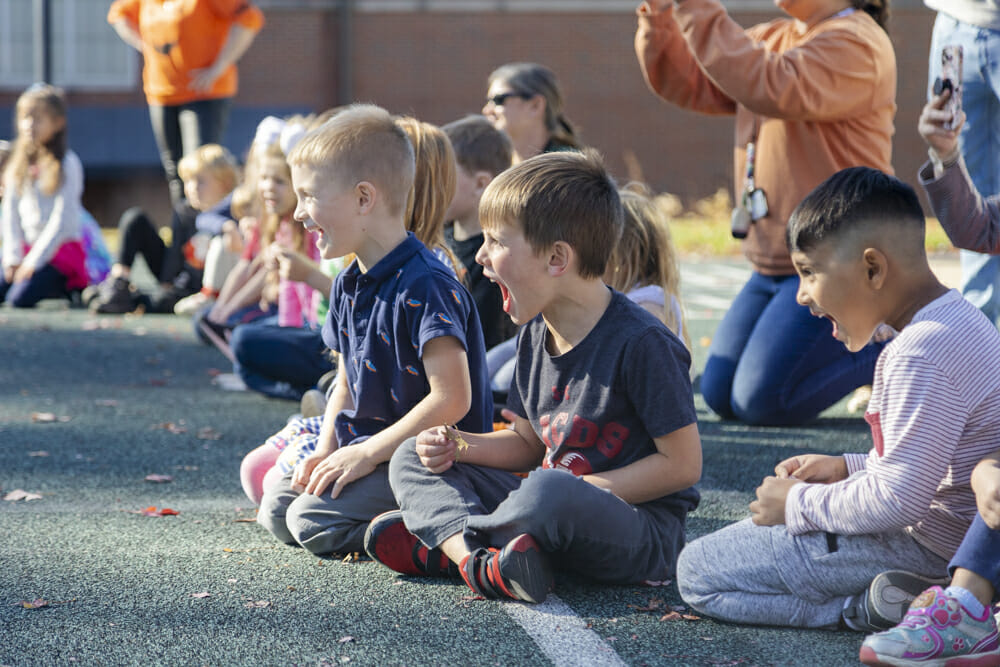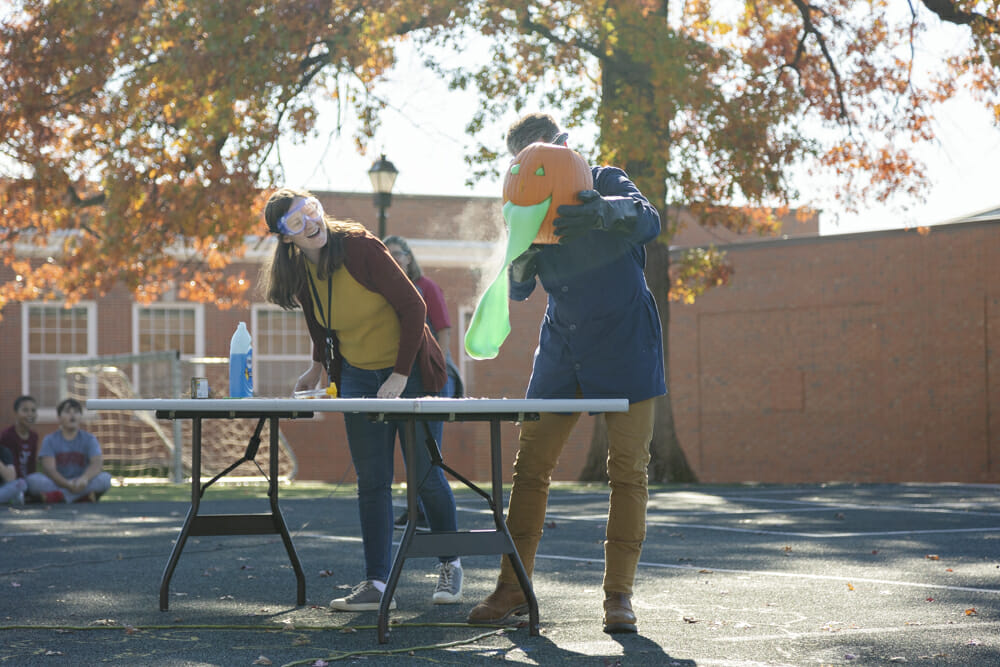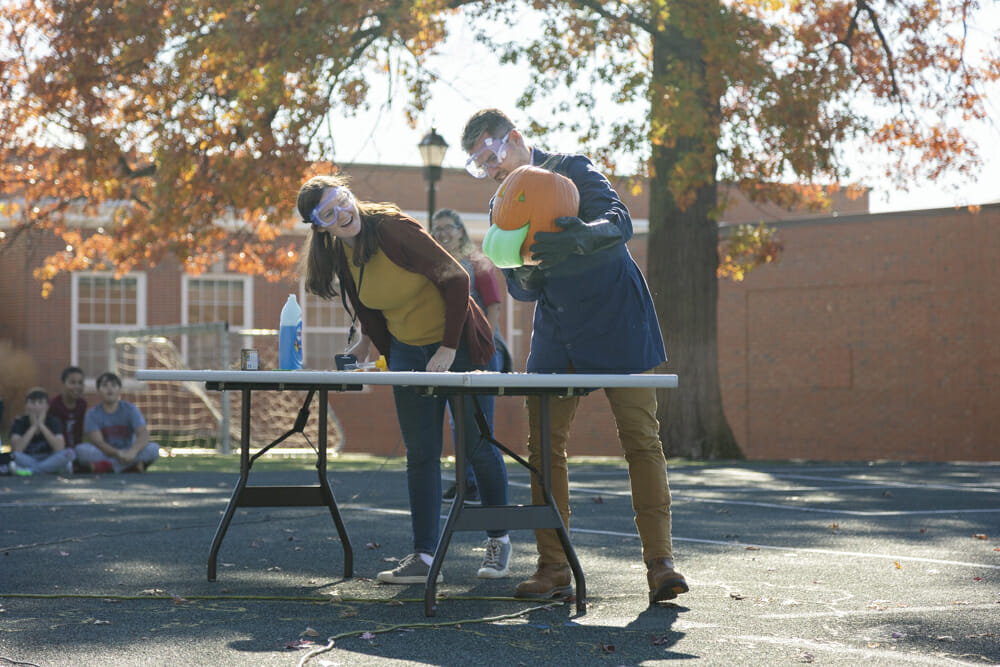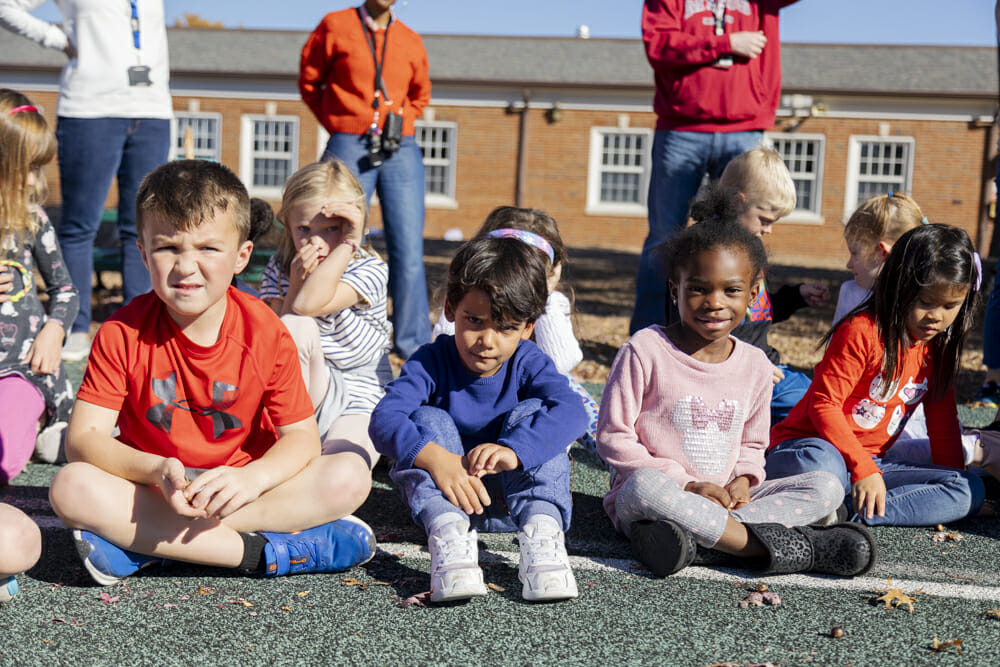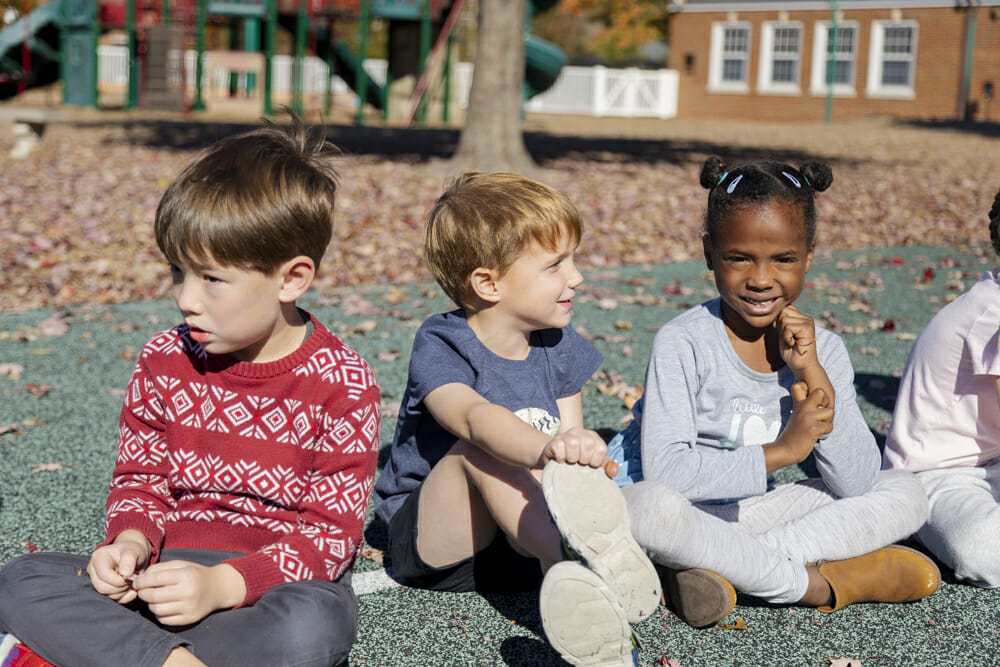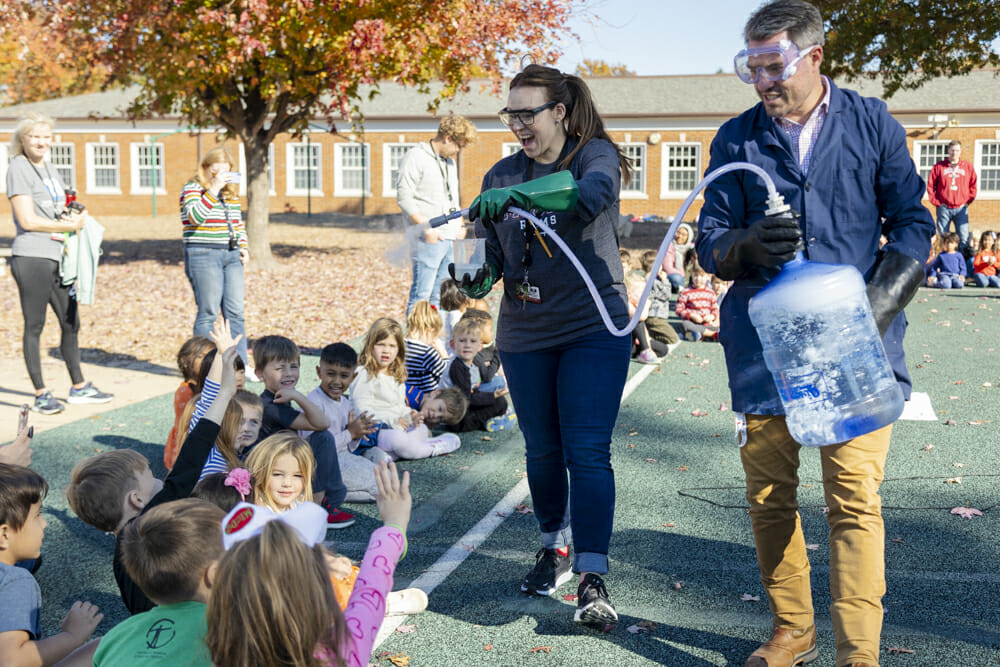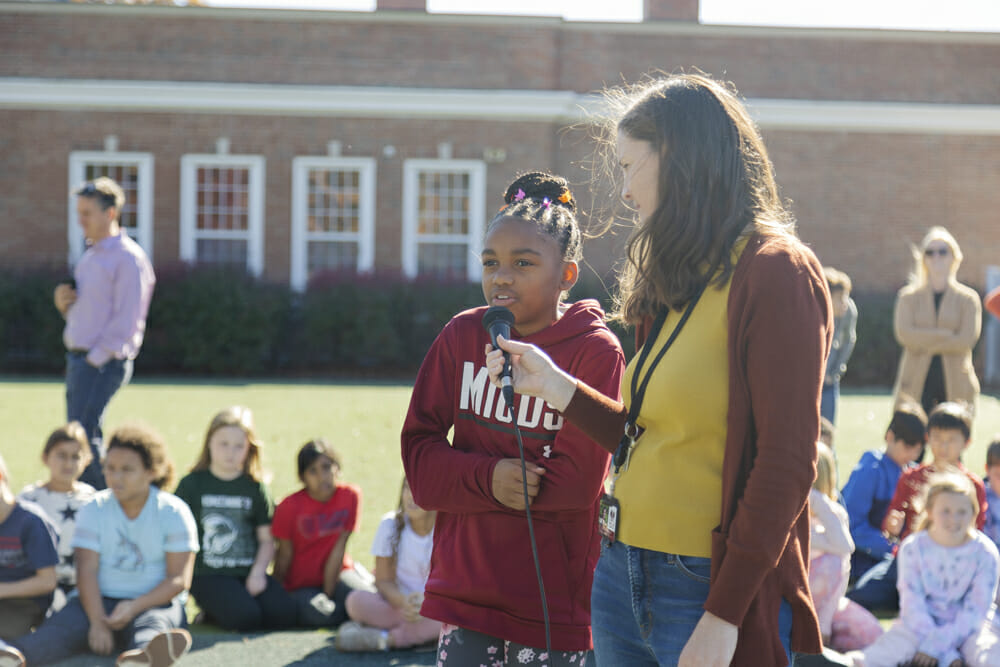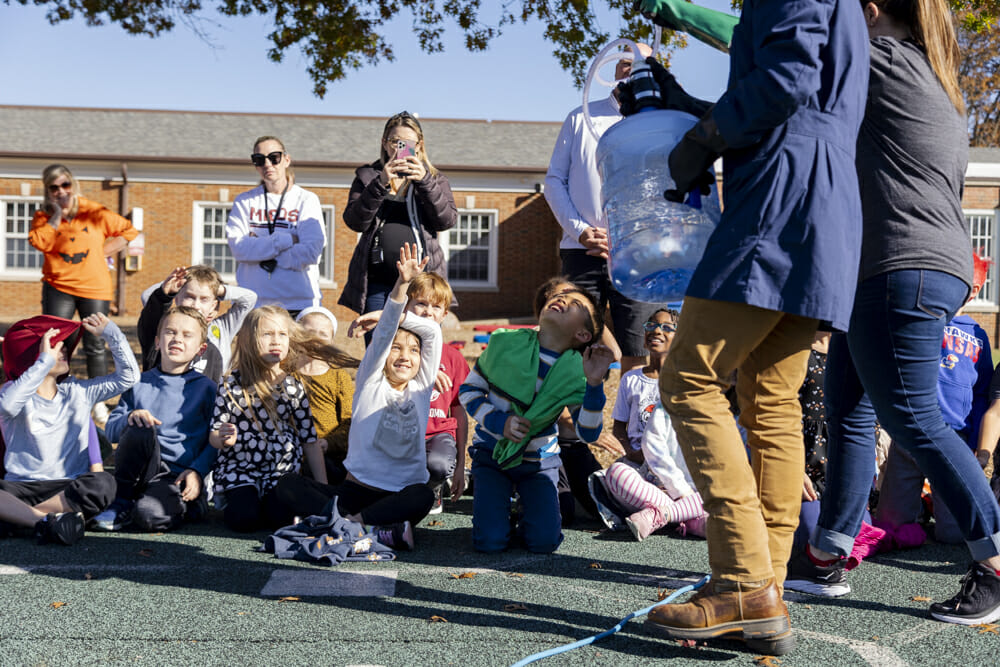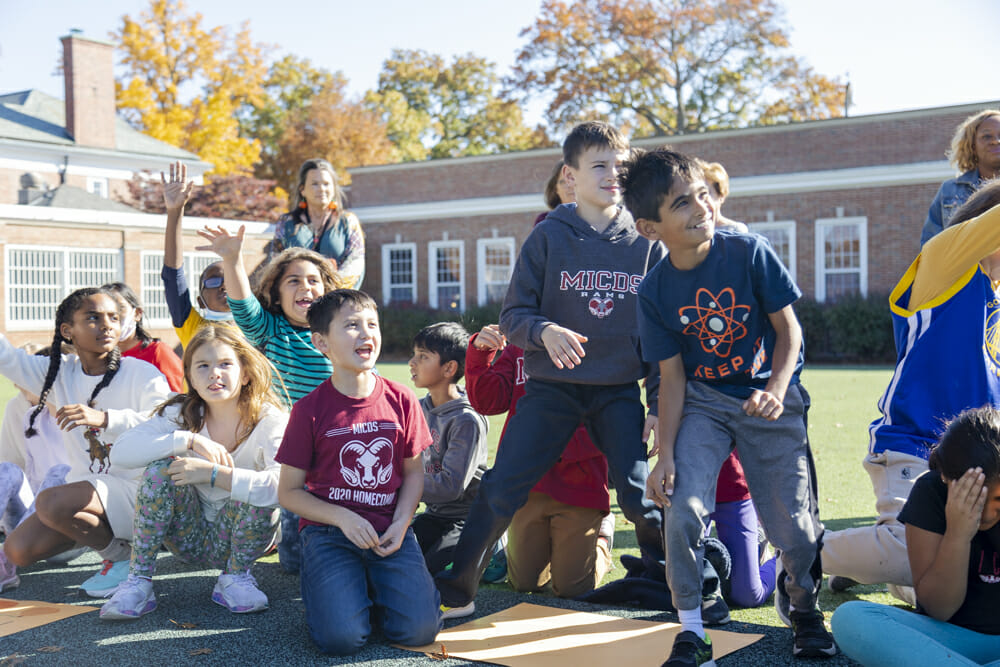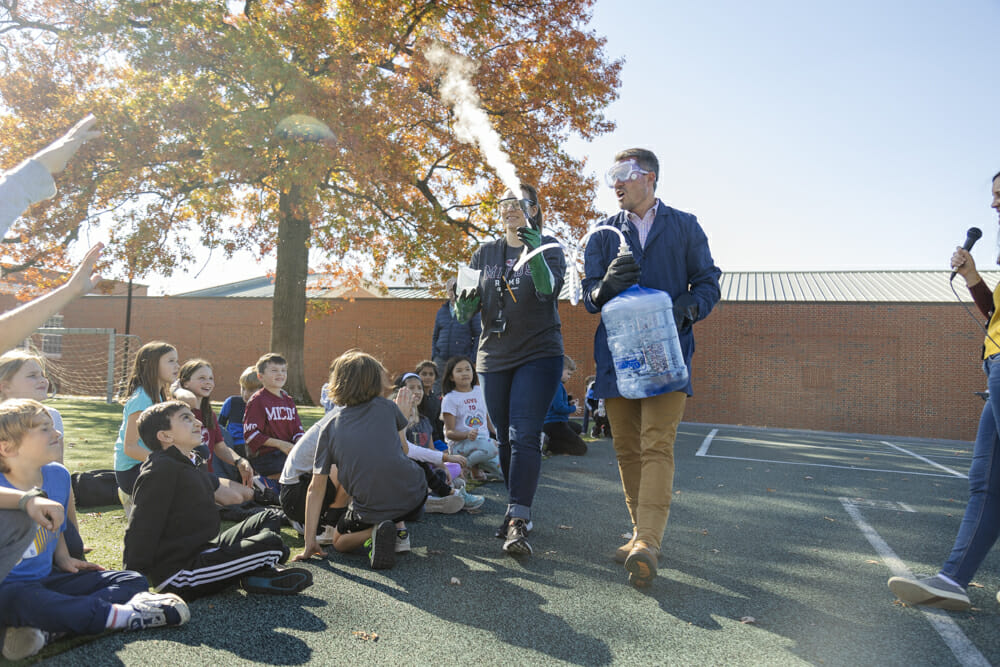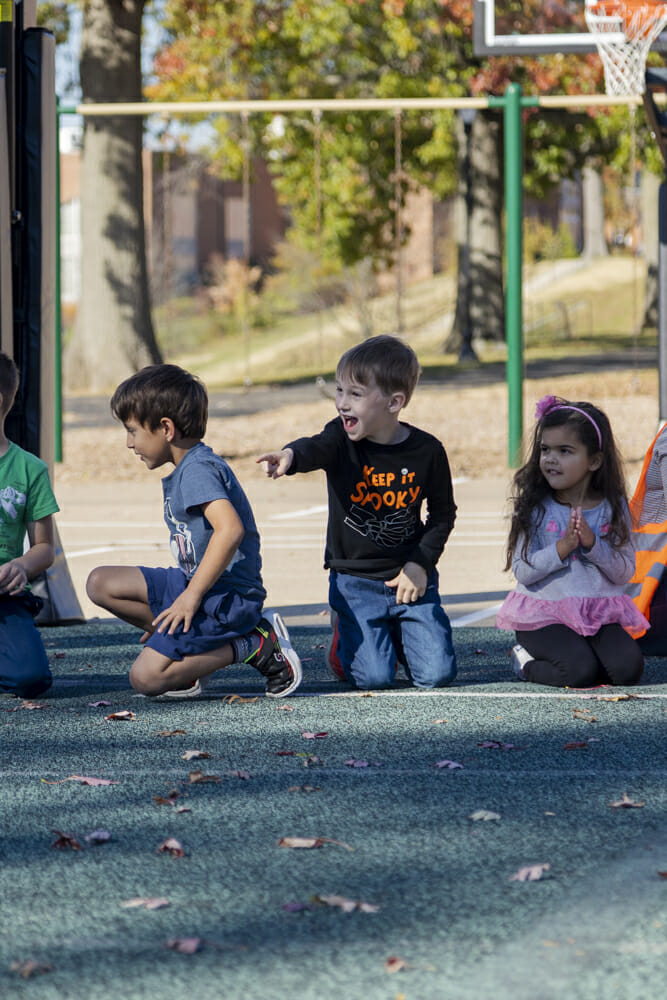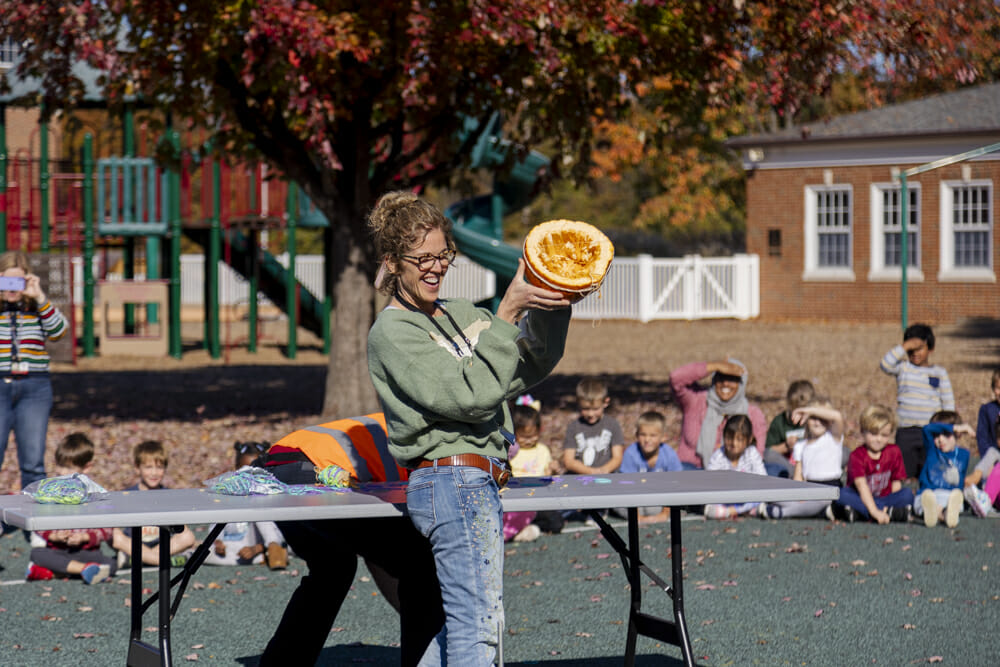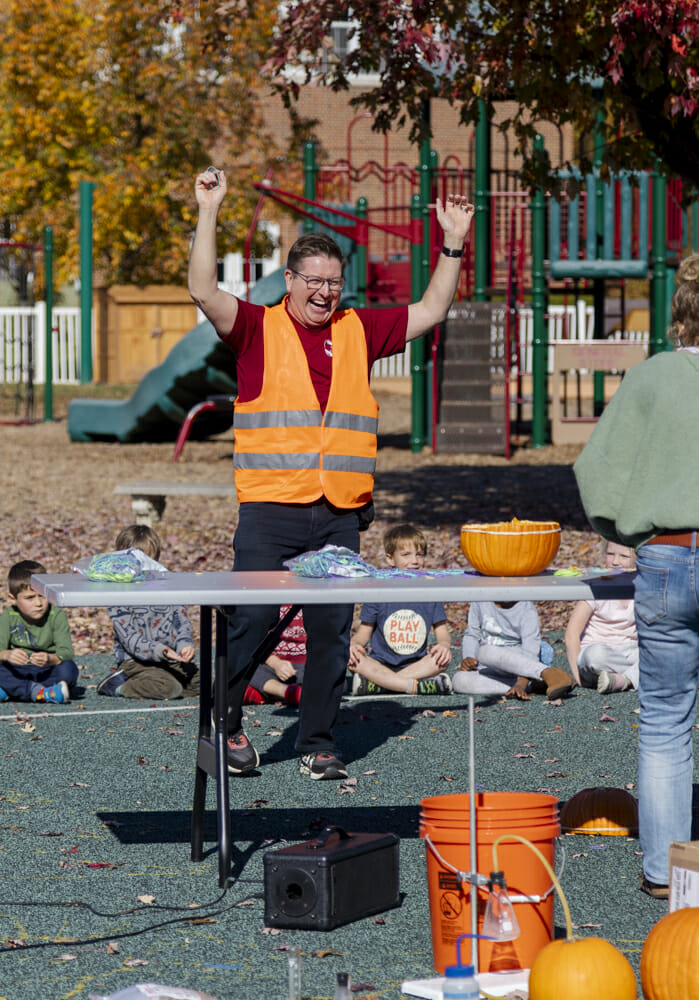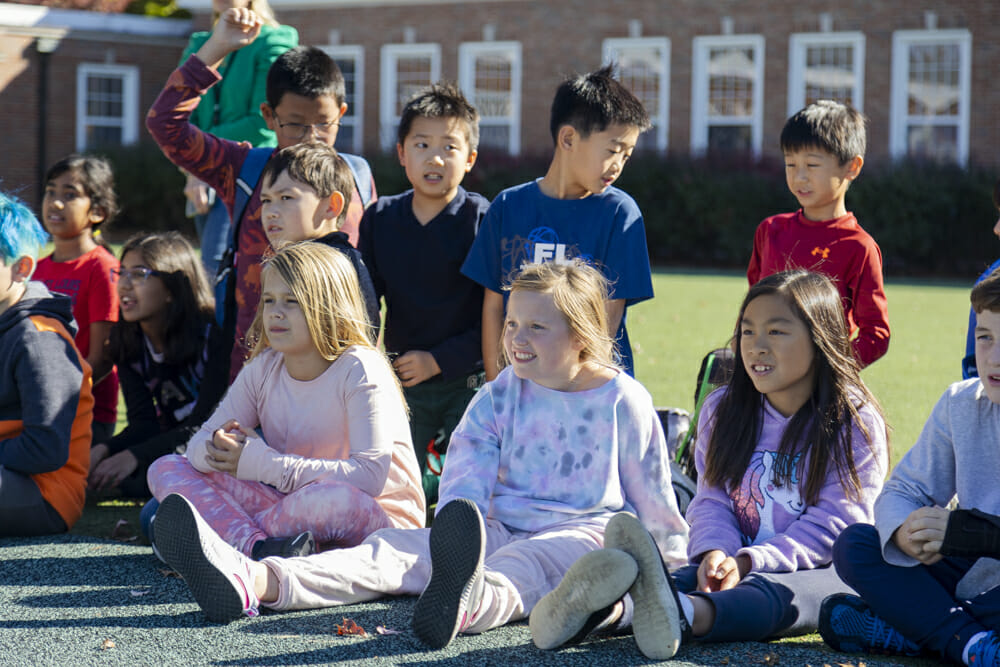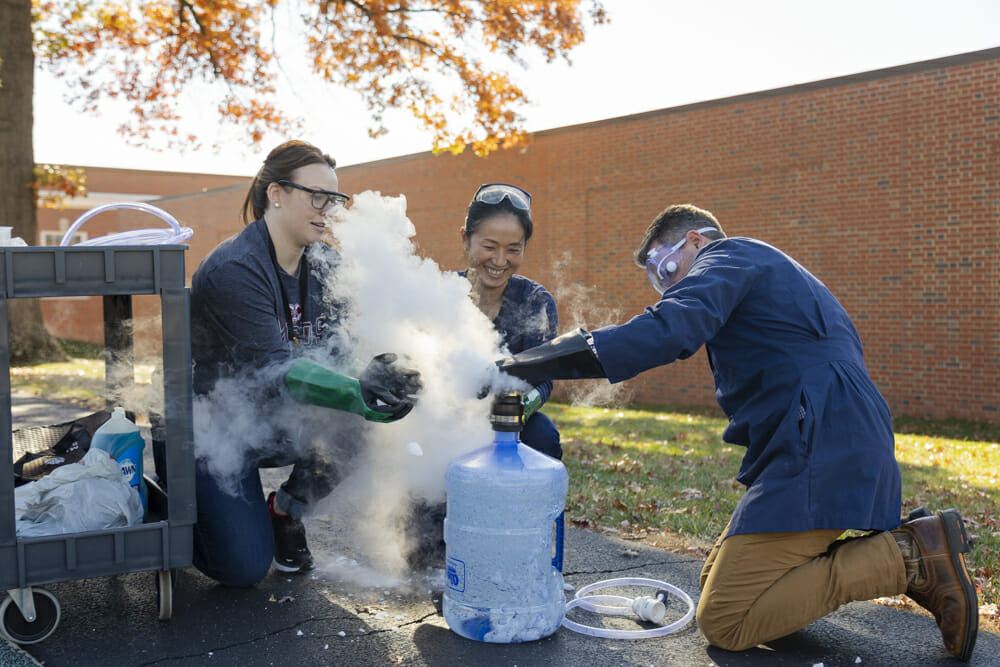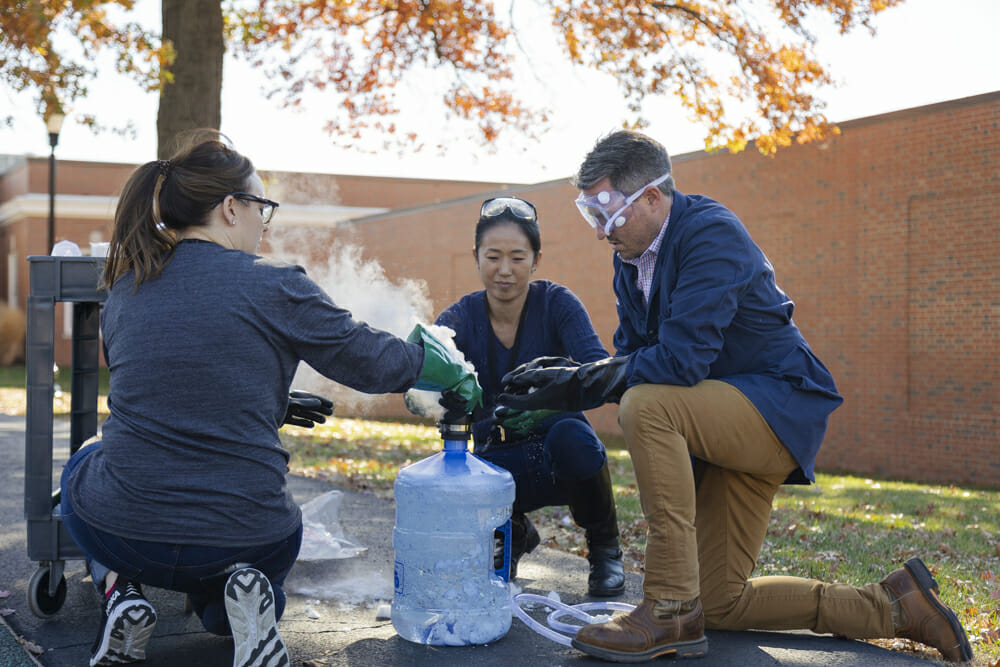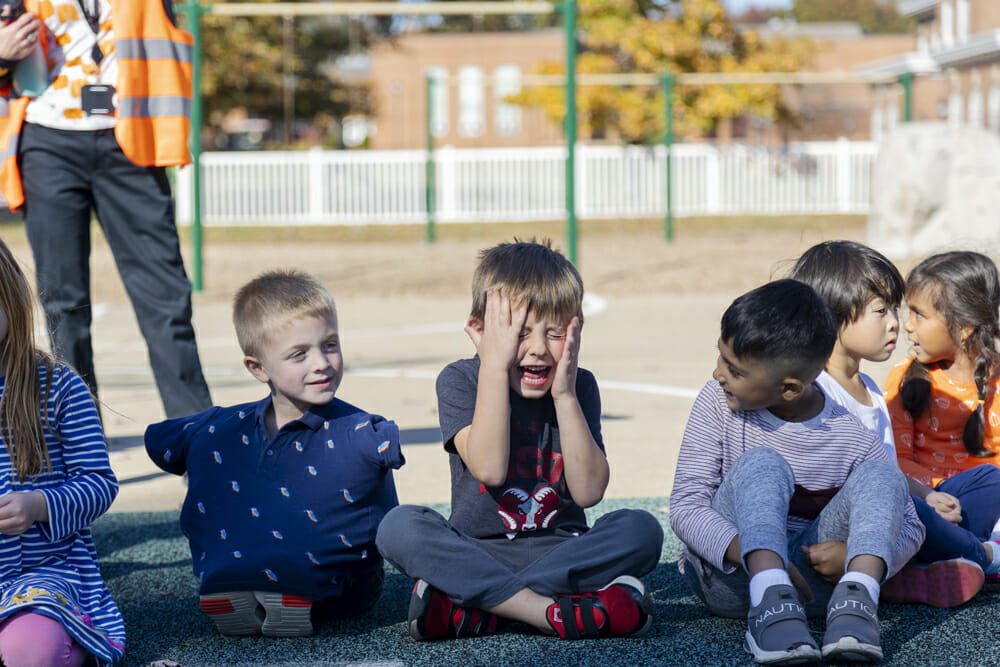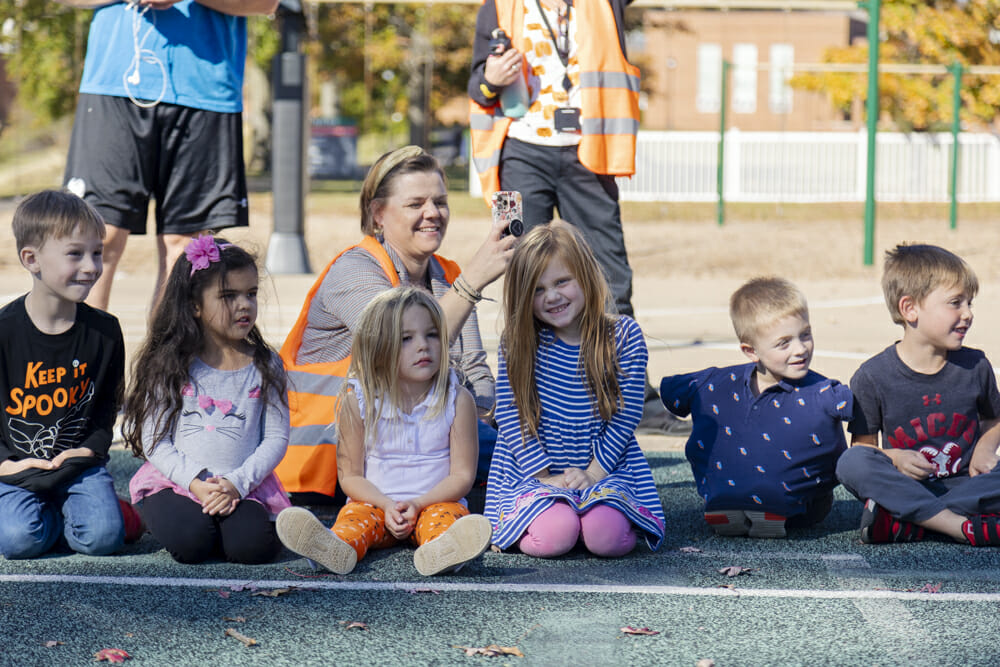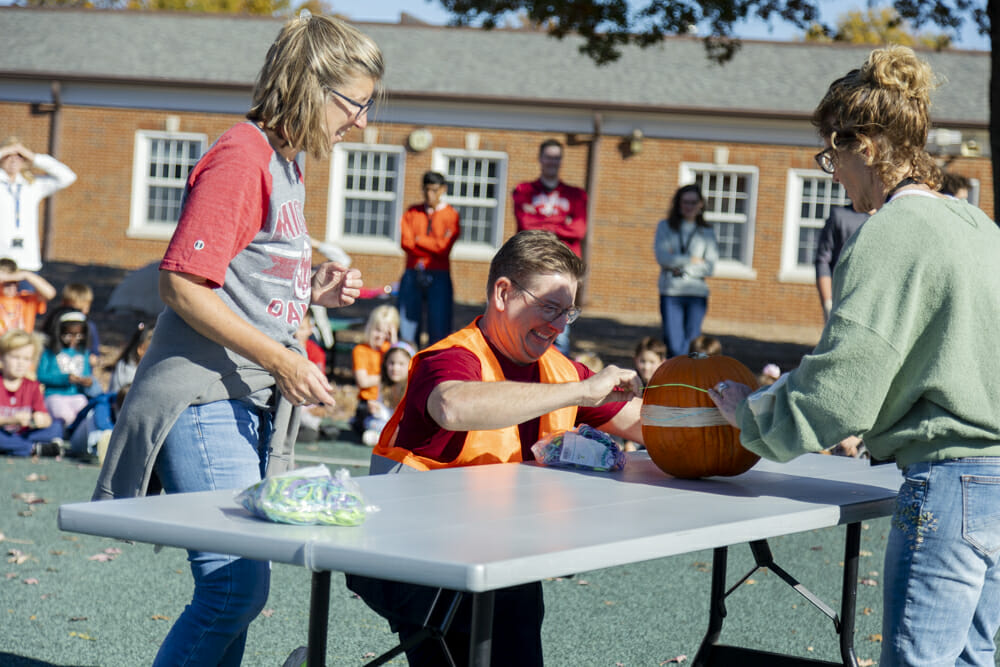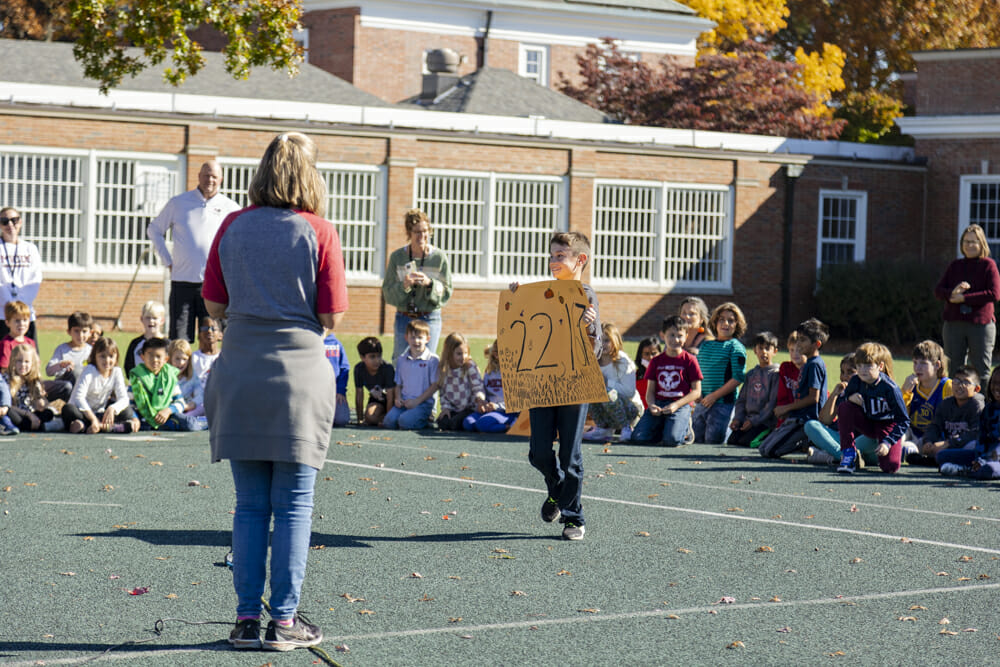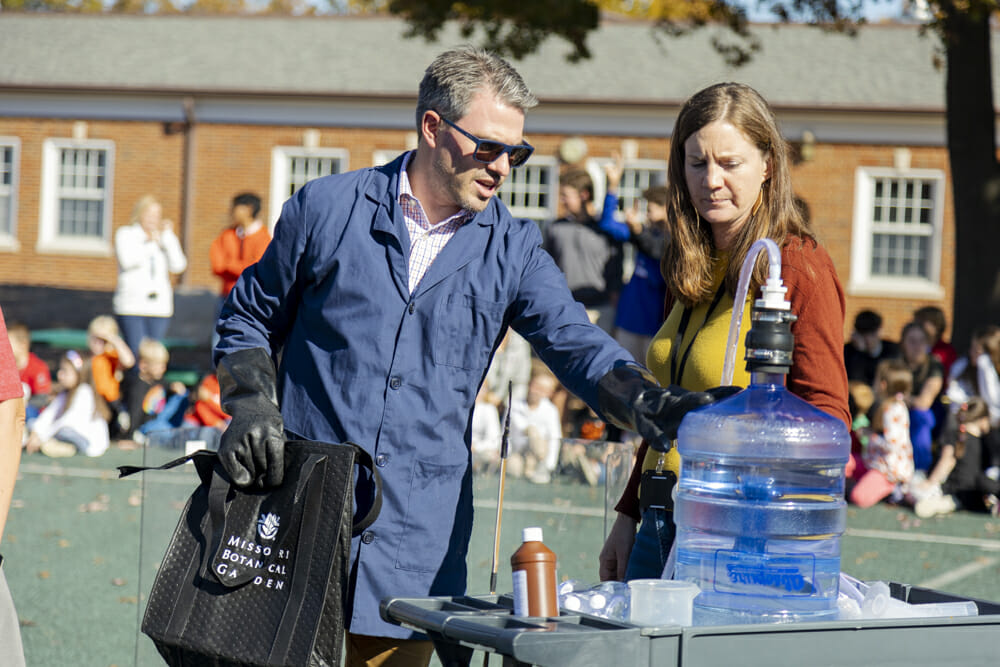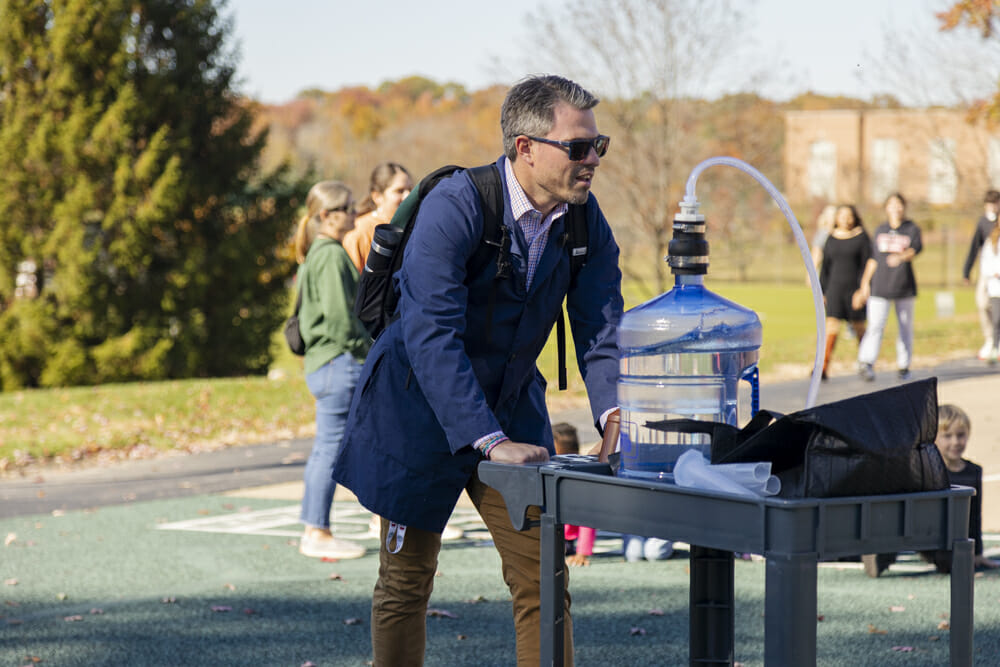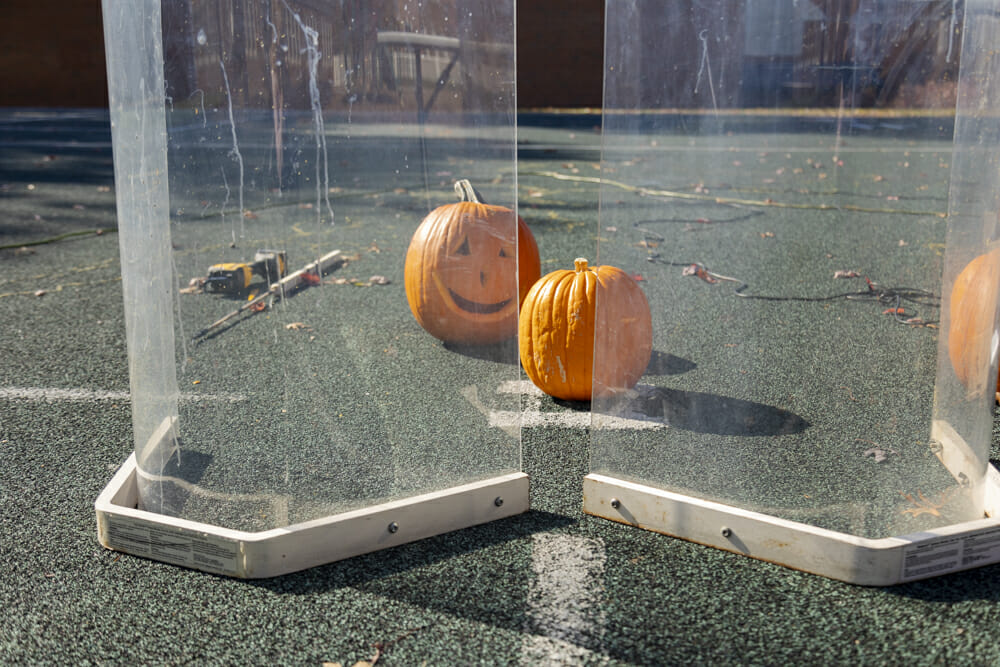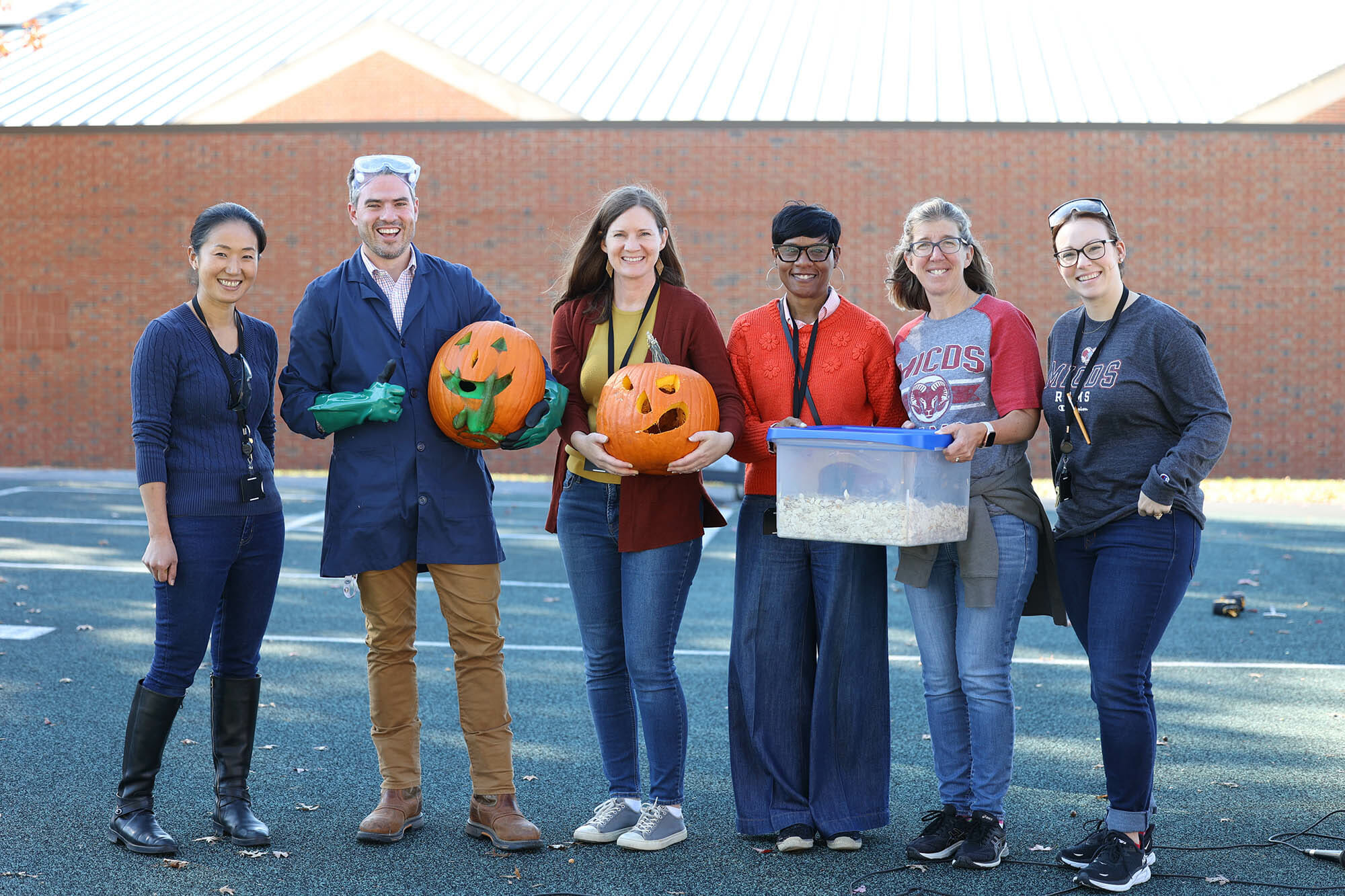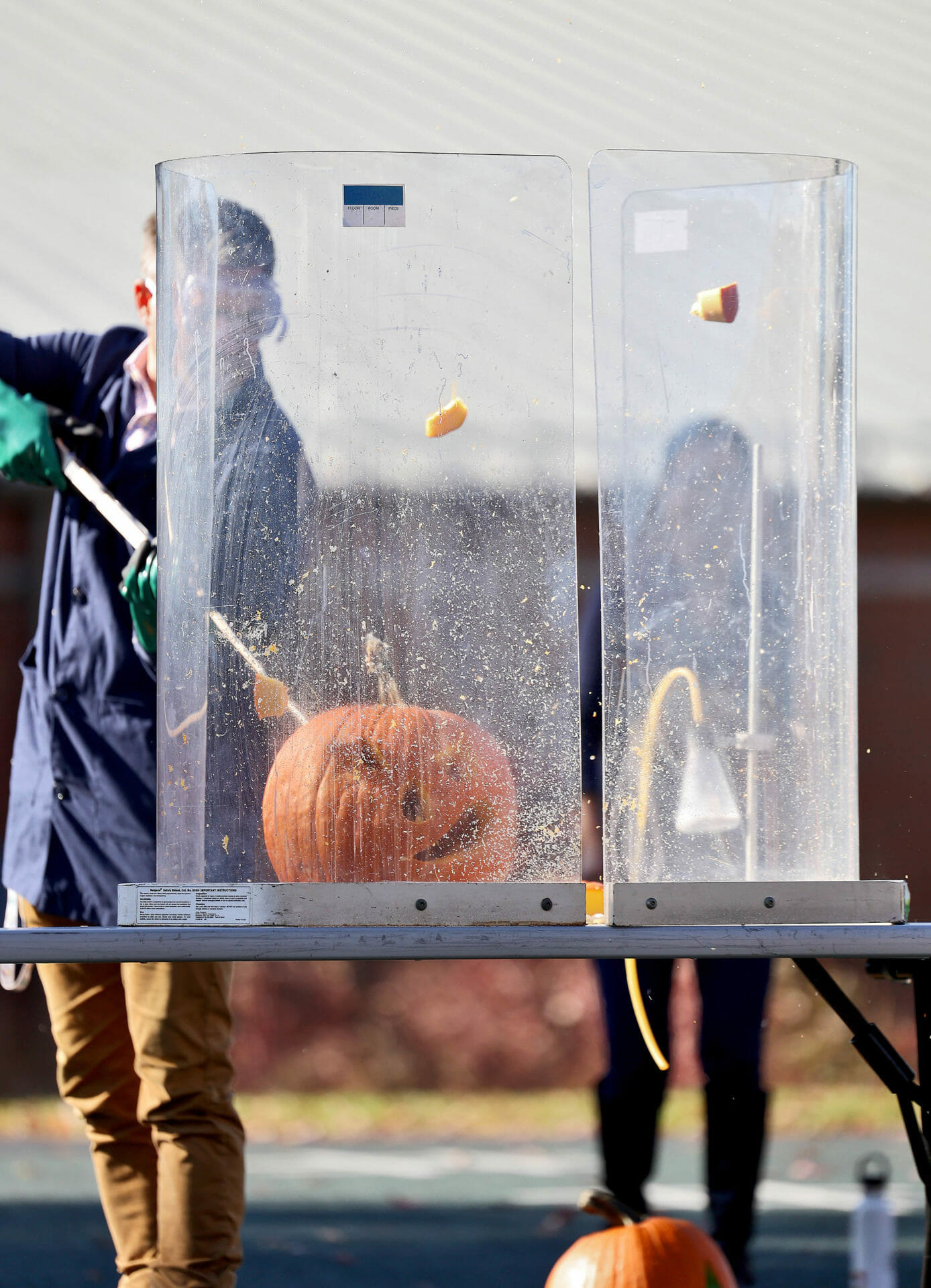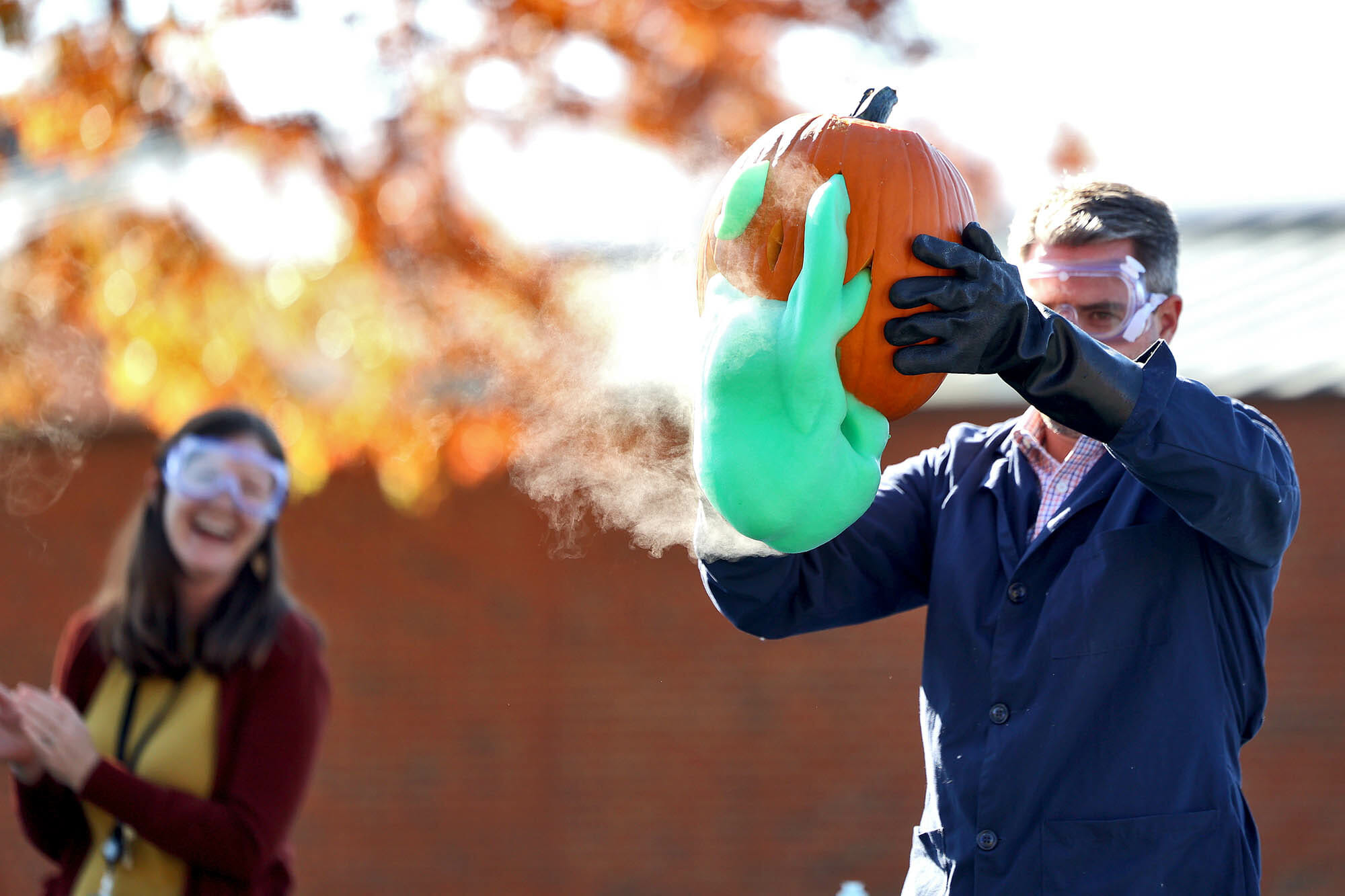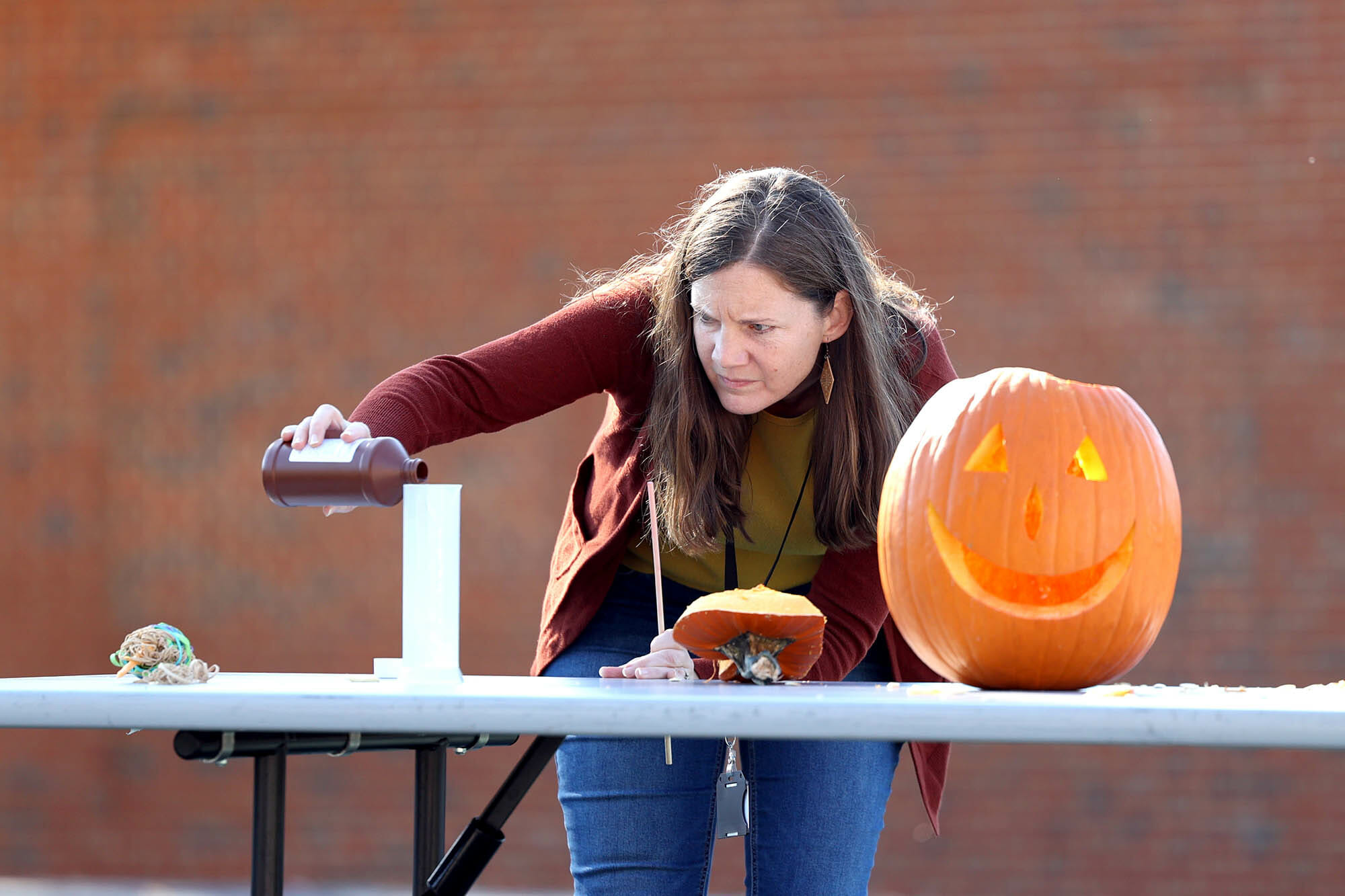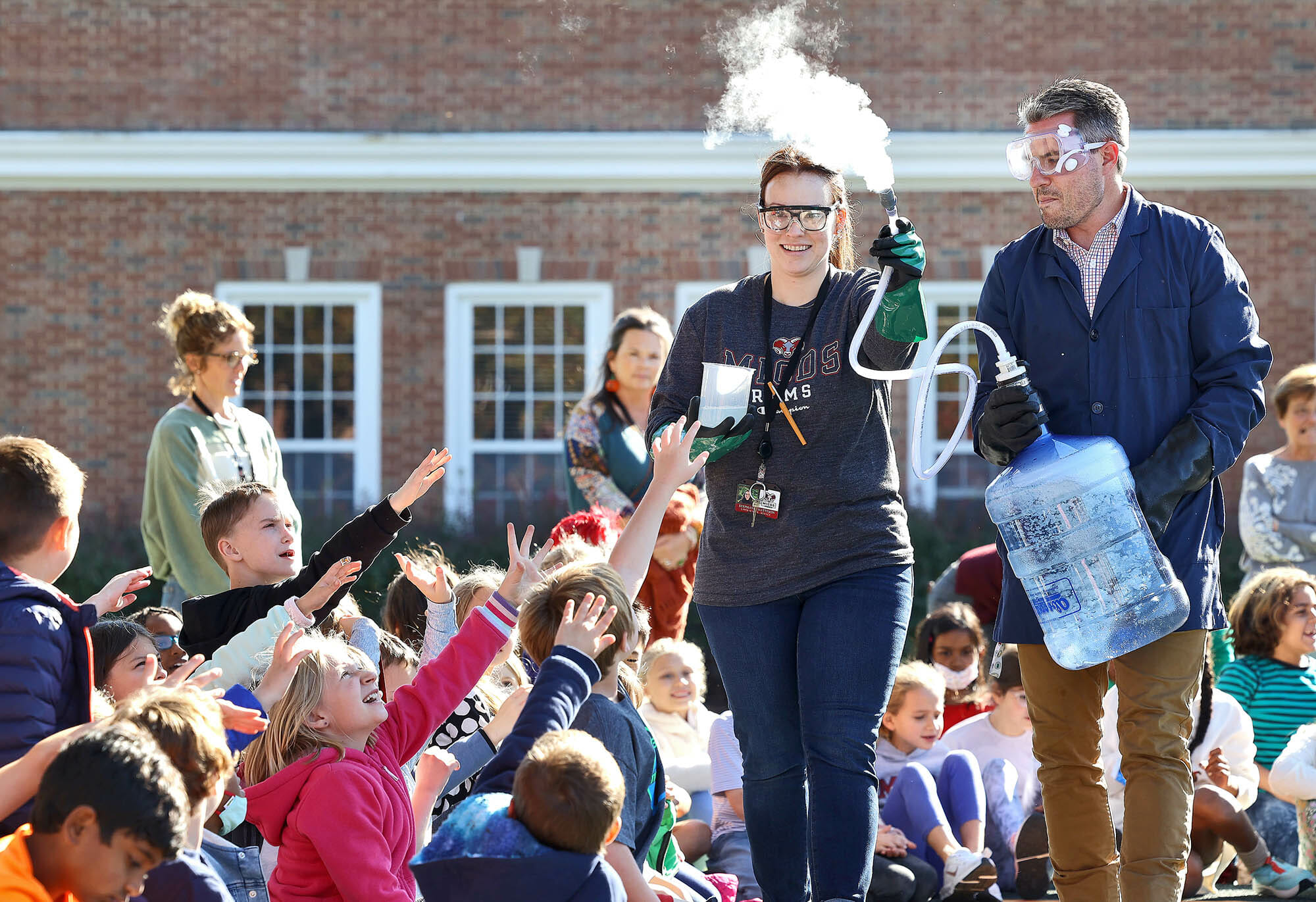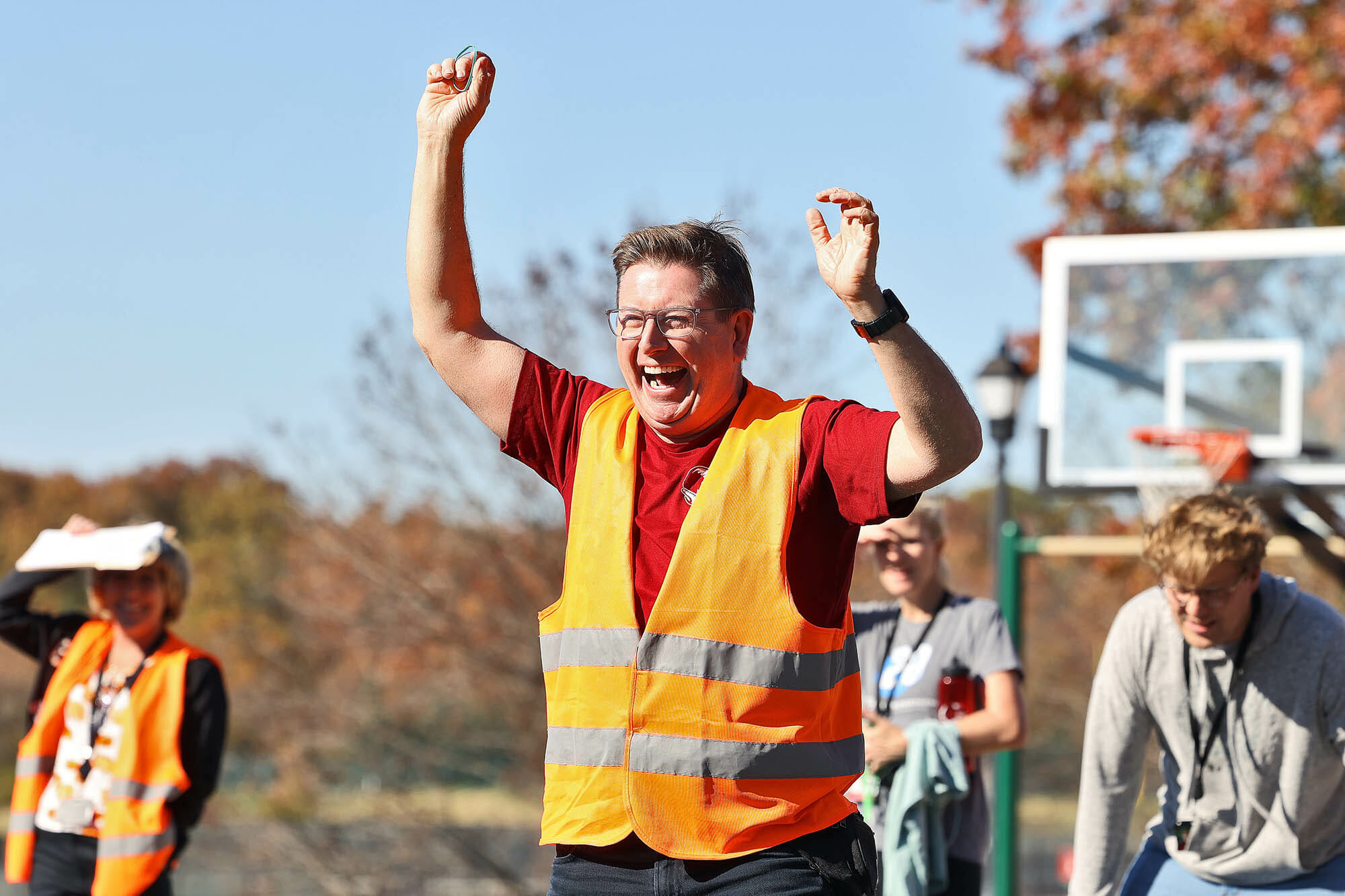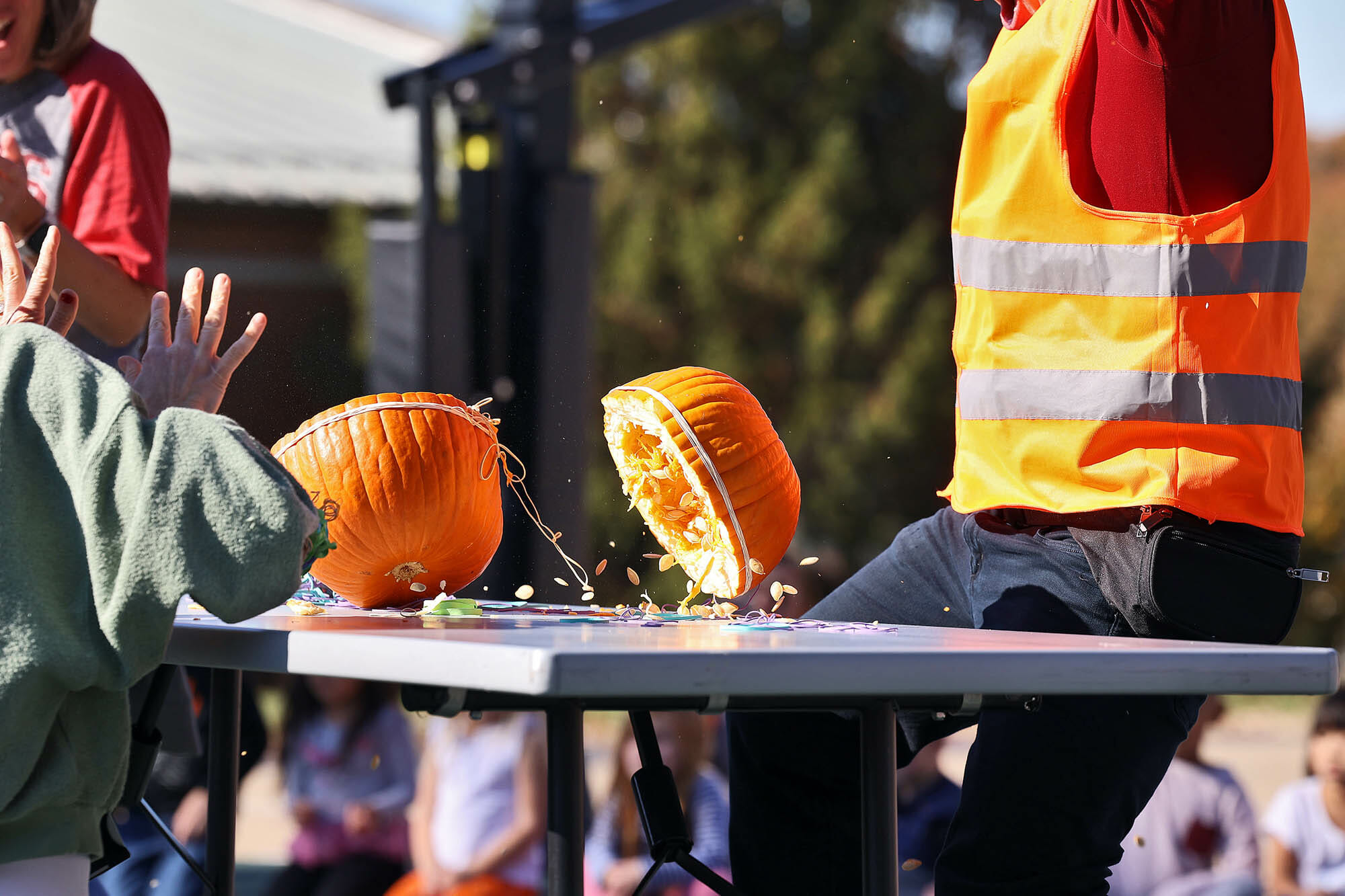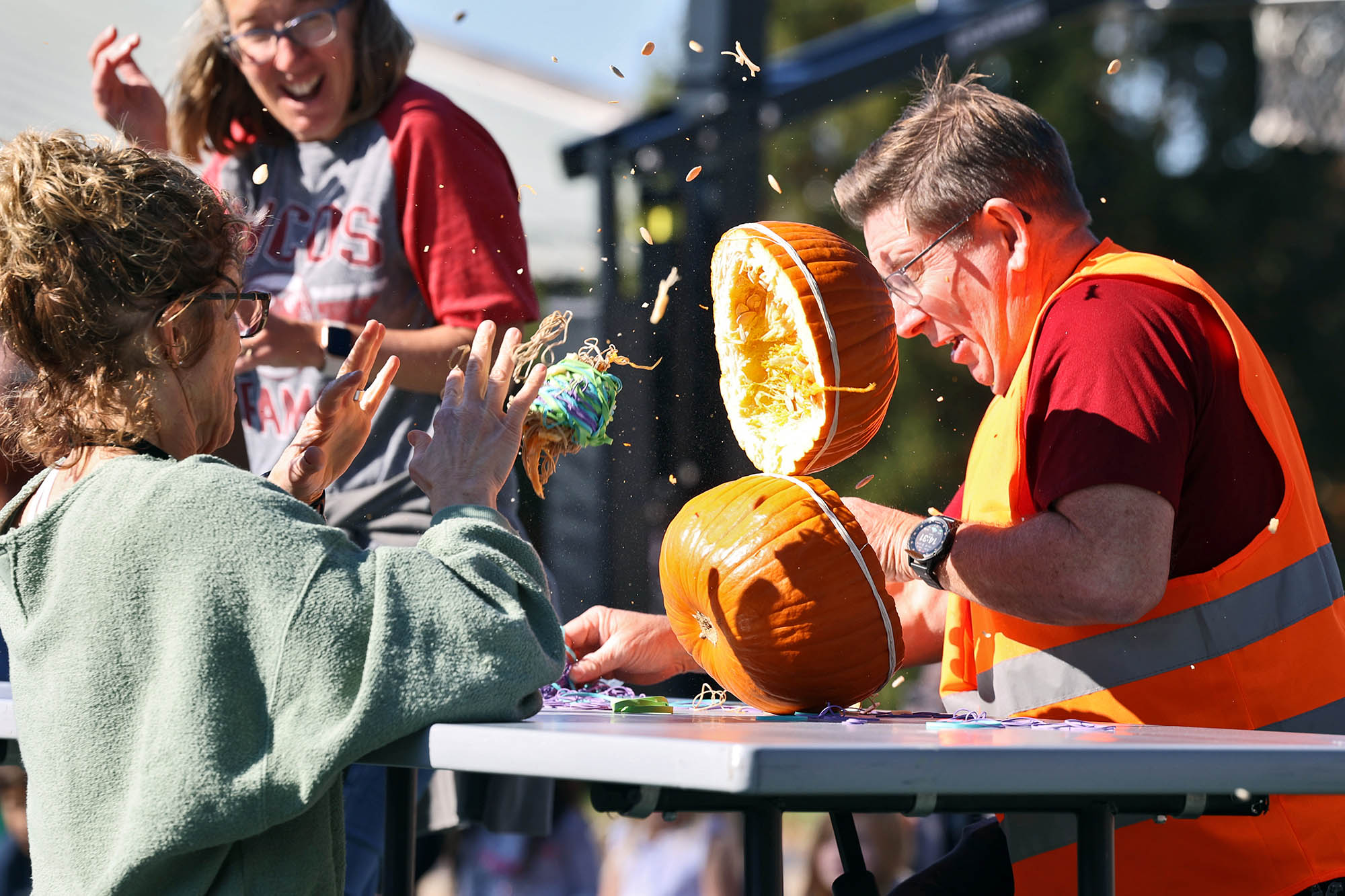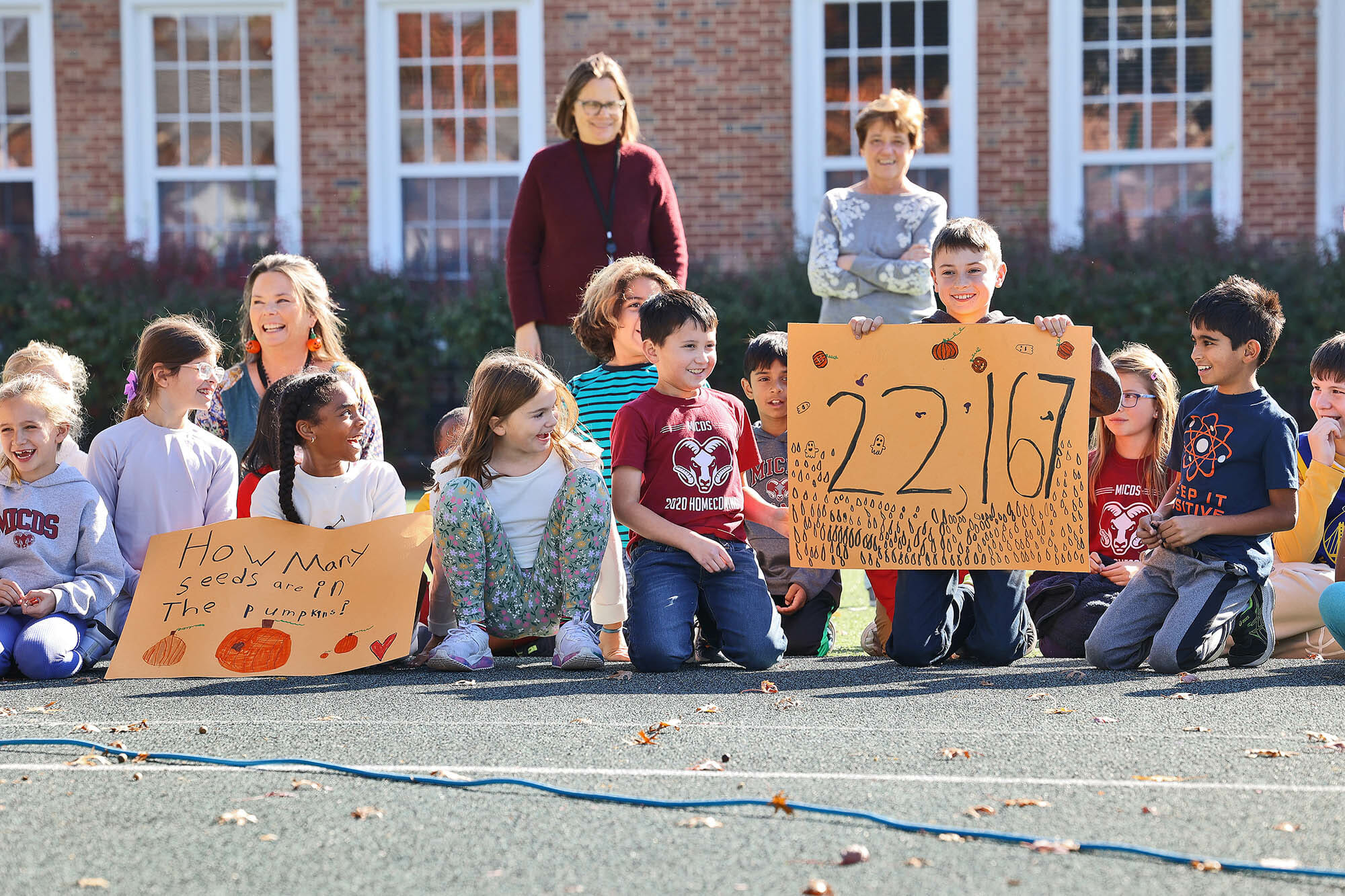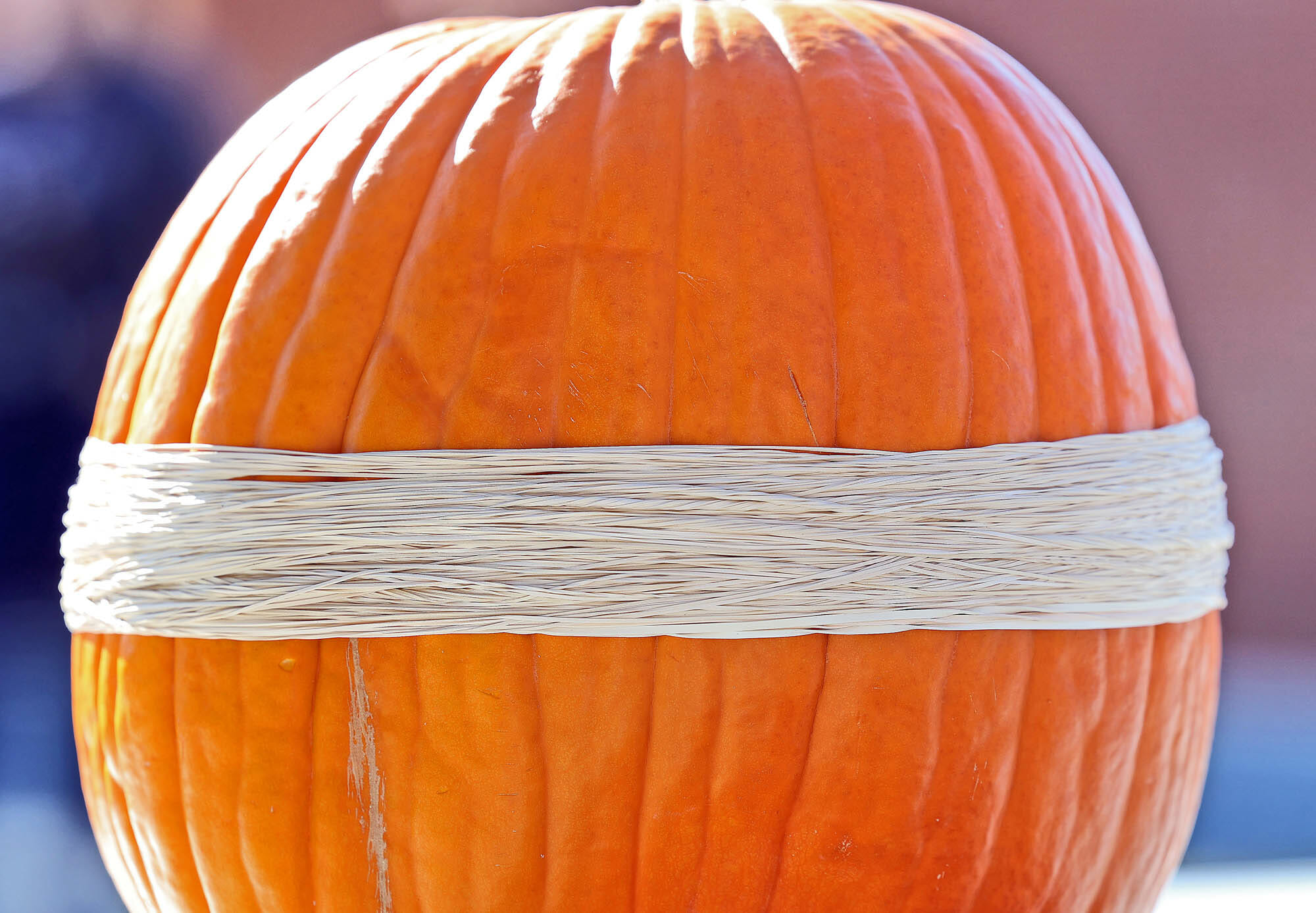When autumn rolls around, there’s no better way to create excitement in young learners than to develop lessons around a theme: pumpkins. Lower School Literacy Coordinator Robin Campbell set the stage for Pumpkin Week with a read-aloud of the book How Many Seeds in a Pumpkin? by Margaret McNamara. In the book, one fall day, a teacher presents the class with three pumpkins: small, medium, and large. They must predict how many seeds are in each, then do the messy but fun work of removing them. The final tally surprises everyone with a not-so-subtle message: “Small things can have a lot going on inside them.” Campbell said, “This picture book presented the perfect opportunity to launch a STEM pumpkin project!”
Students in Senior Kindergarten through second grade tapped into their science and math skills to:
- Learn ordinal numbers
- Count the seeds by 2s, 5s, or 10s (as the characters did in the book)
- Create a pictograph representing the seeds in each pumpkin
- Estimate and measure height, weight, and circumference
- Weigh pumpkins before and after removing the seeds
- Launch the sink or float test using predictions and testing
How exciting it was to see even the largest pumpkin float! Third graders jumped on board to tally the total number of seeds counted during the week: a whopping 22,167!
Lower School Science Teacher Laura Pupillo helped students in all grades see how pumpkins come in all sizes, textures, and colors. “Through carving, students could see how different varieties of pumpkins produce unique-looking seeds and where seeds are located in a pumpkin. Digging our hands into the pumpkin and feeling the textures that come with that experience was definitely a favorite,” she said.
JK-12 Mathematics Department Chair Diane Broberg added, “The energy and excitement around answering the question, ‘How many seeds in a pumpkin?’ made the effort worth it. The astonishment on students’ faces when they realized that they counted over a hundred (or 200 or 300 or 400, etc.) seeds was rewarding.”
Carving pumpkins gave fourth-grade students the perfect opportunity to build on their study of decomposition. Pupillo said, “What happens to a pumpkin when it’s left out? How long will it take for a pumpkin to decompose? The question ‘What is the best way to rot a pumpkin?’ quickly framed our inquiry experience for students. Students developed an independent variable to test and will collect valuable data over the next month as we observe our pumpkins decomposing back to the earth.”
Bringing Pumpkin Week to a close provided the opportunity for an afternoon of exciting scientific reactions for all Lower School students to enjoy. Third and Fourth Grade Teachers Meg Mottl and Chris Brennan set out to pop a pumpkin using the force of rubber bands. And, of course, JK-12 Science Department Chair Paul Zahller helped a pumpkin erupt with “elephant toothpaste” (a gas, liquid, and dish soap concoction) and made a pumpkin explode using a chemical reaction to reveal a traditional jack-o’-lantern face.
Connecting literacy, science, and math made the pumpkin experience far more meaningful for students. What an unforgettable week! We can’t wait to do it again next year!

